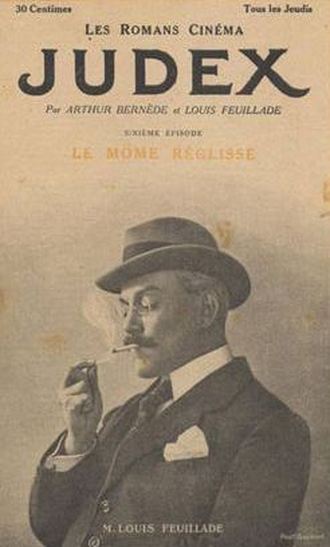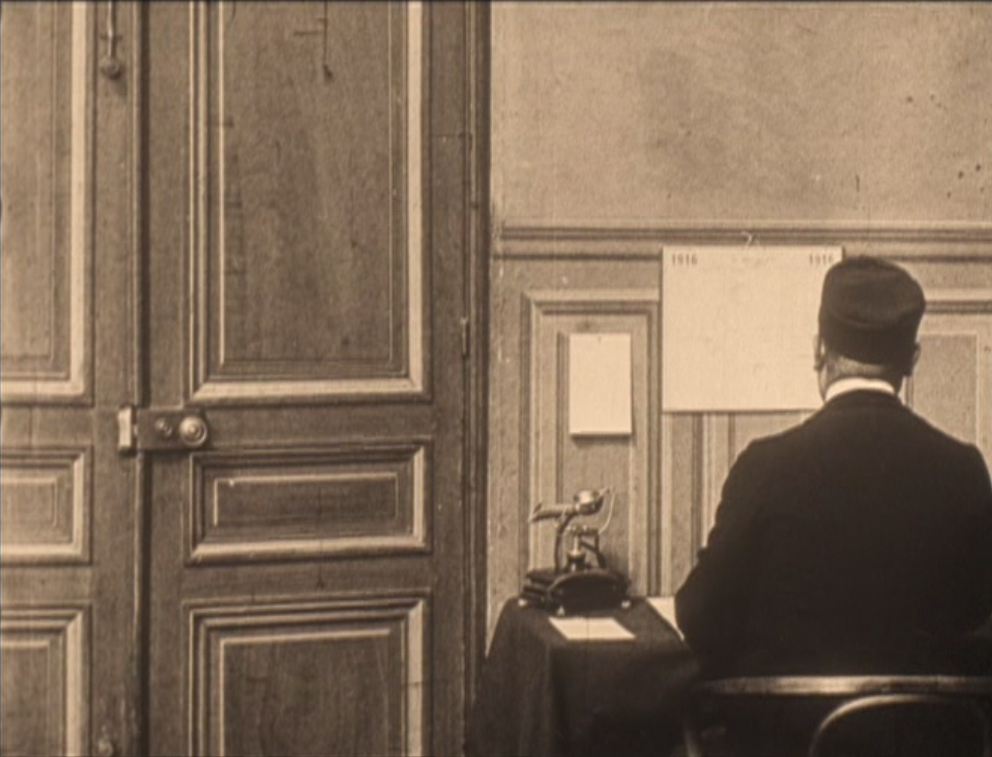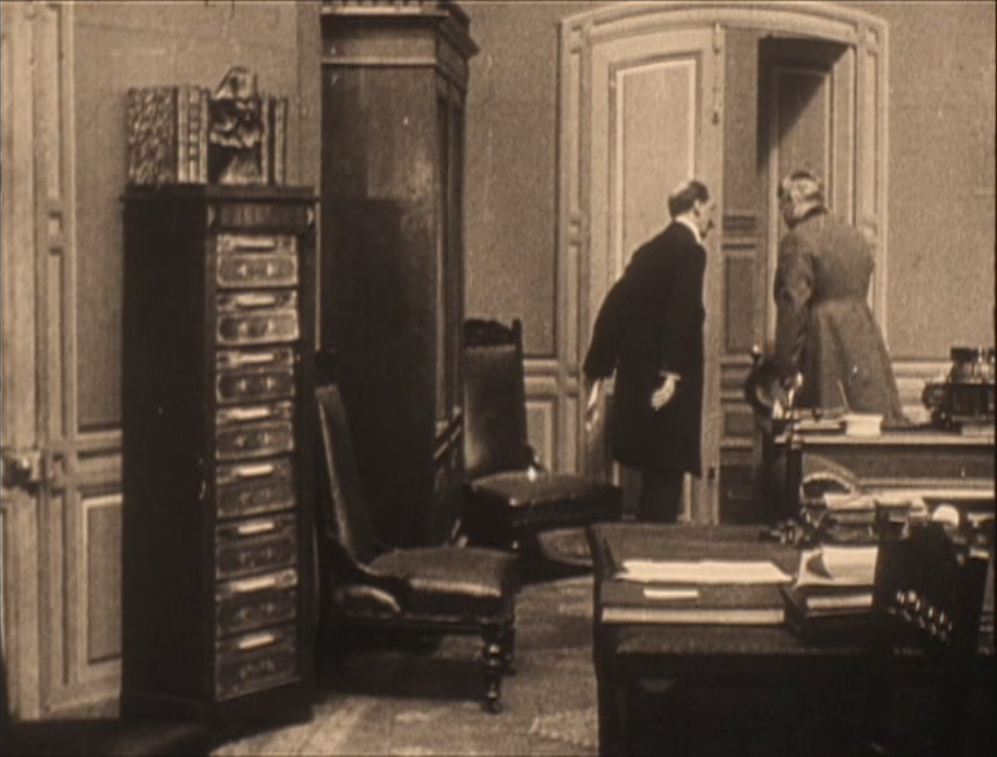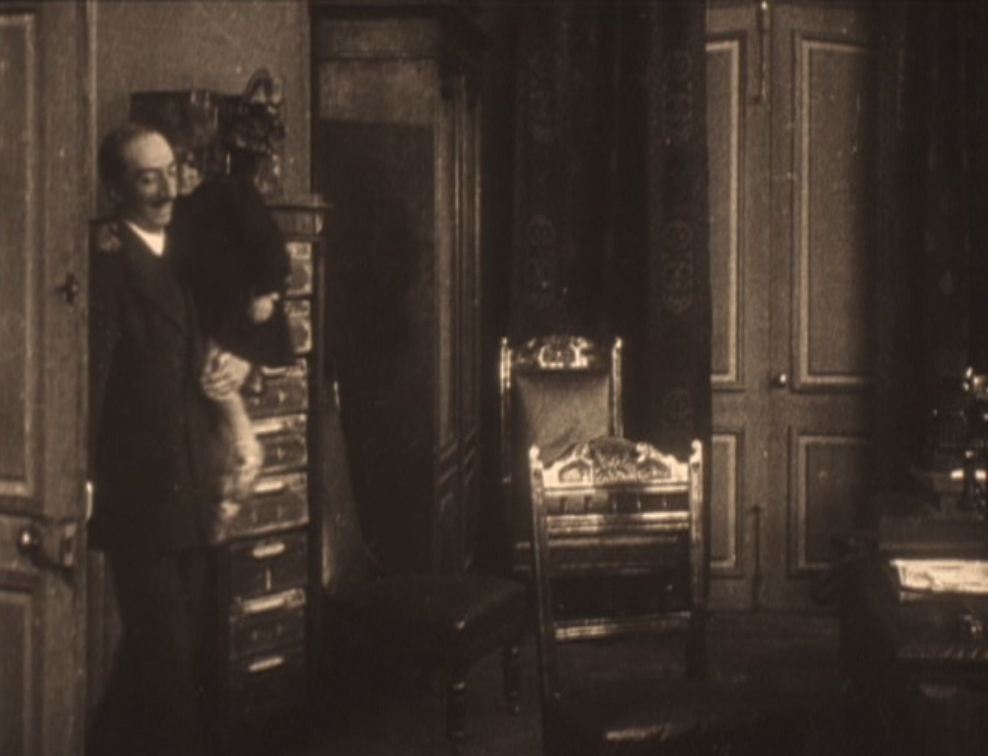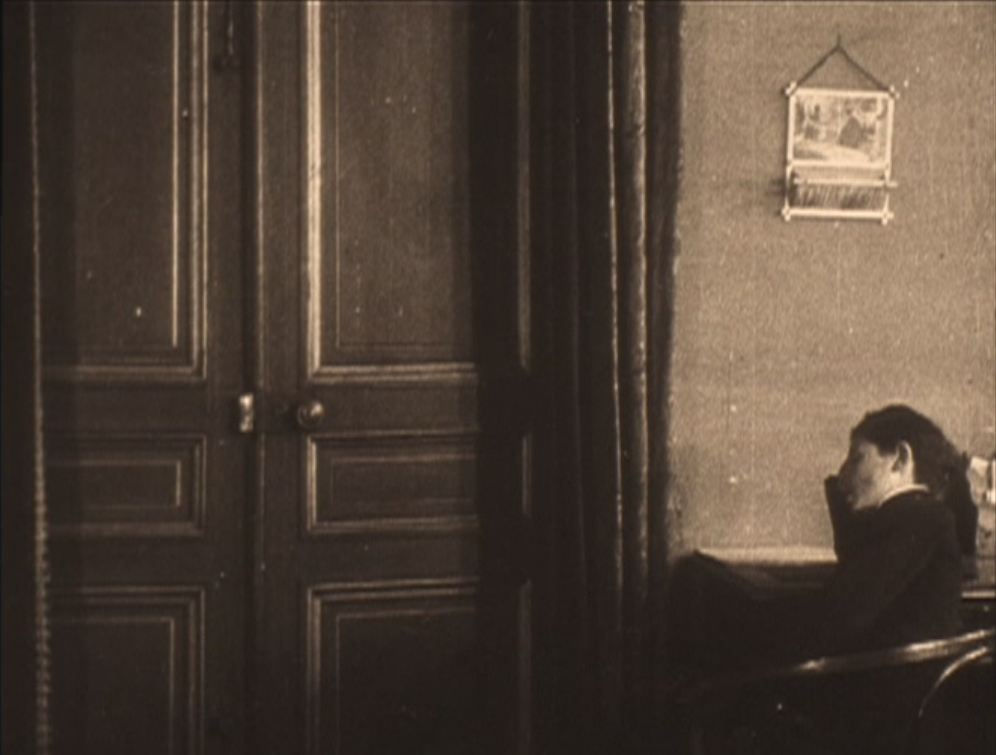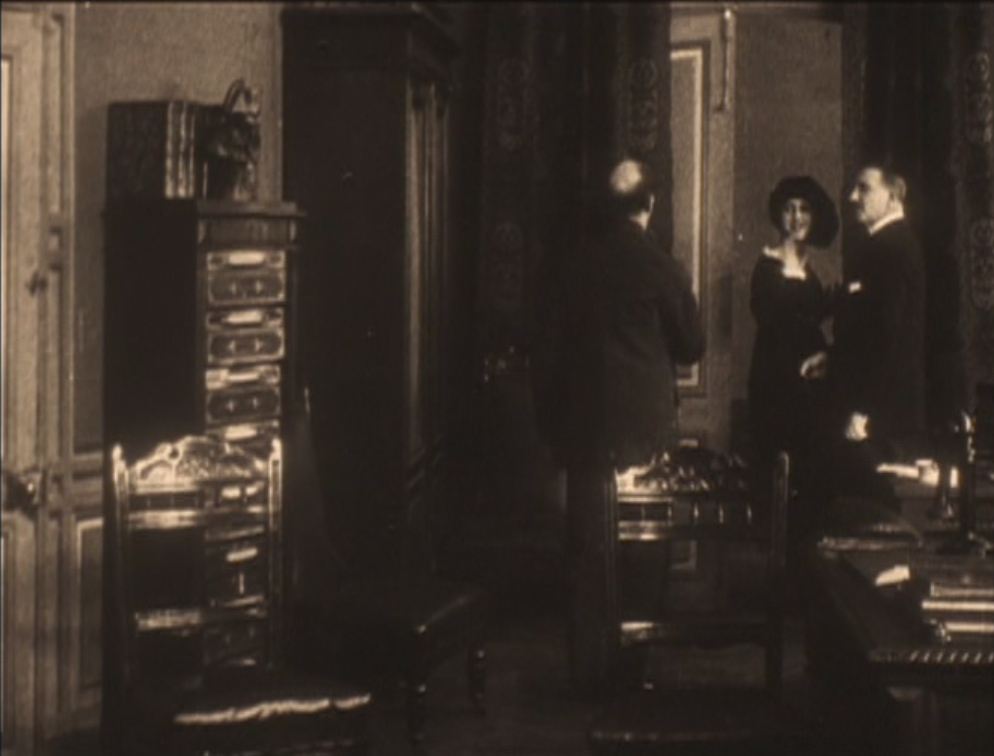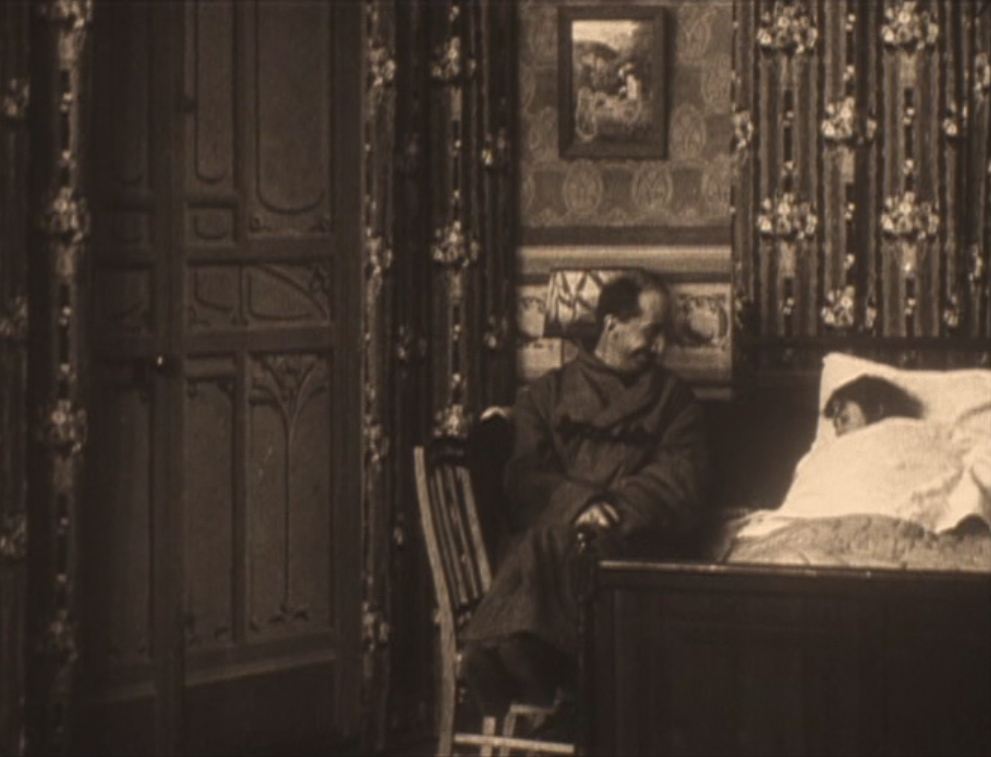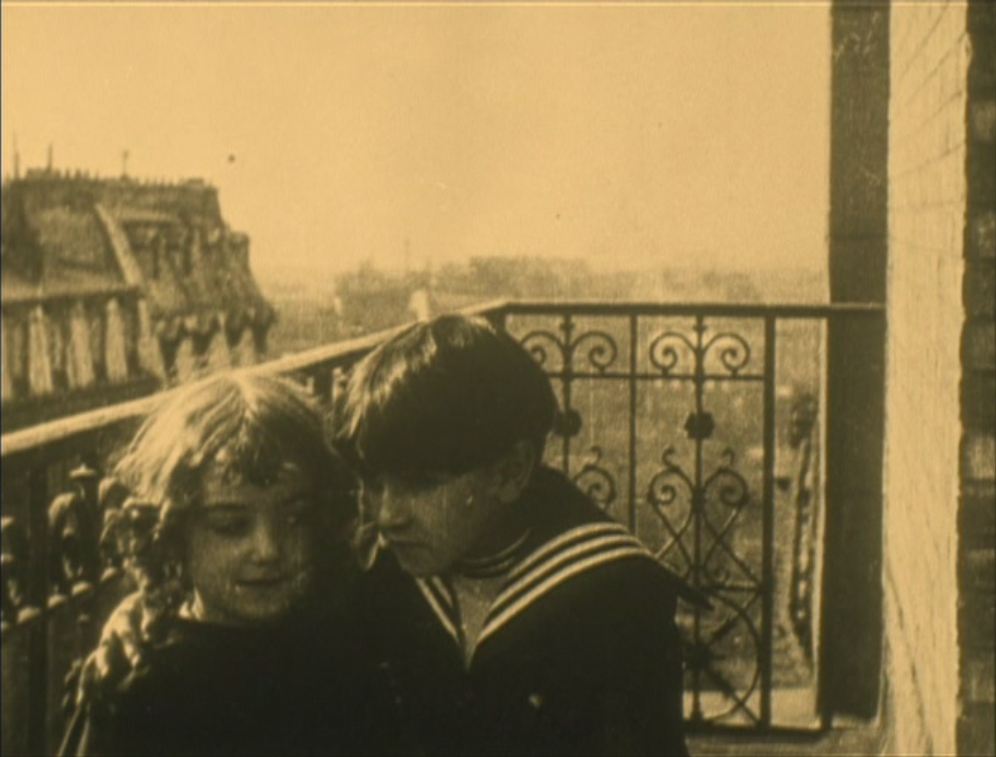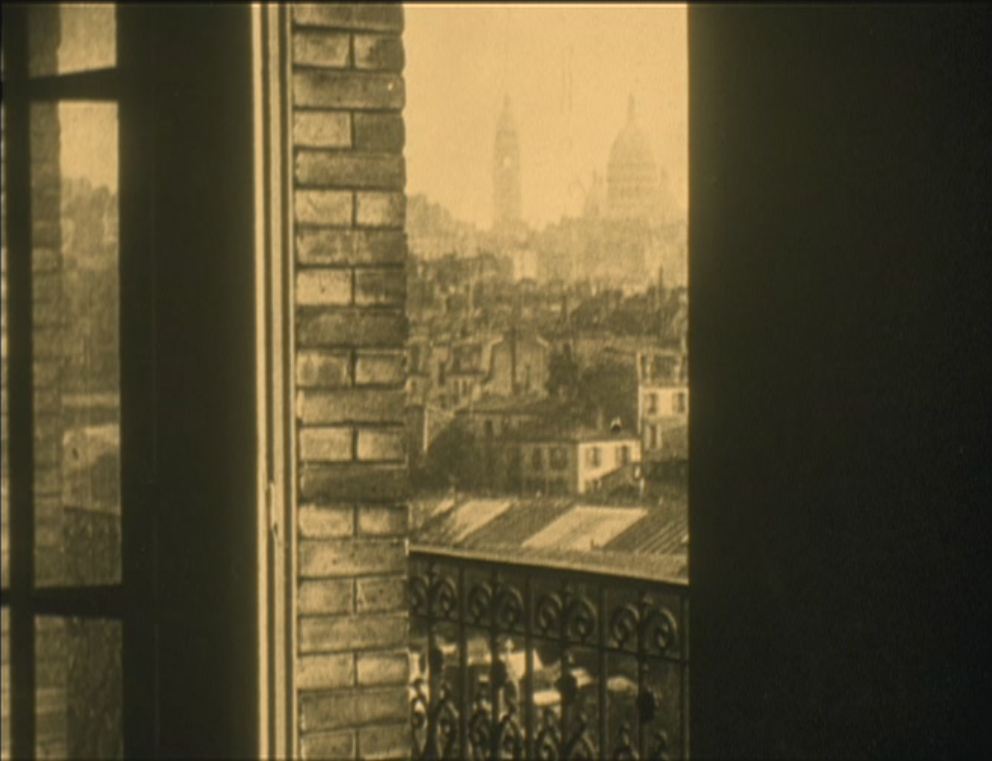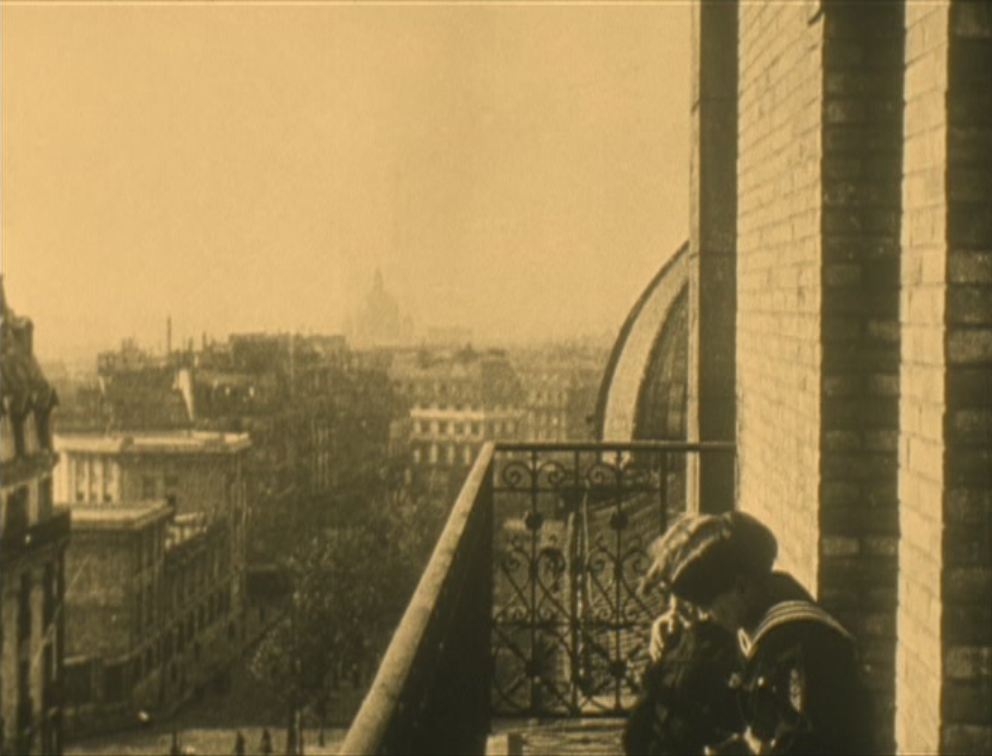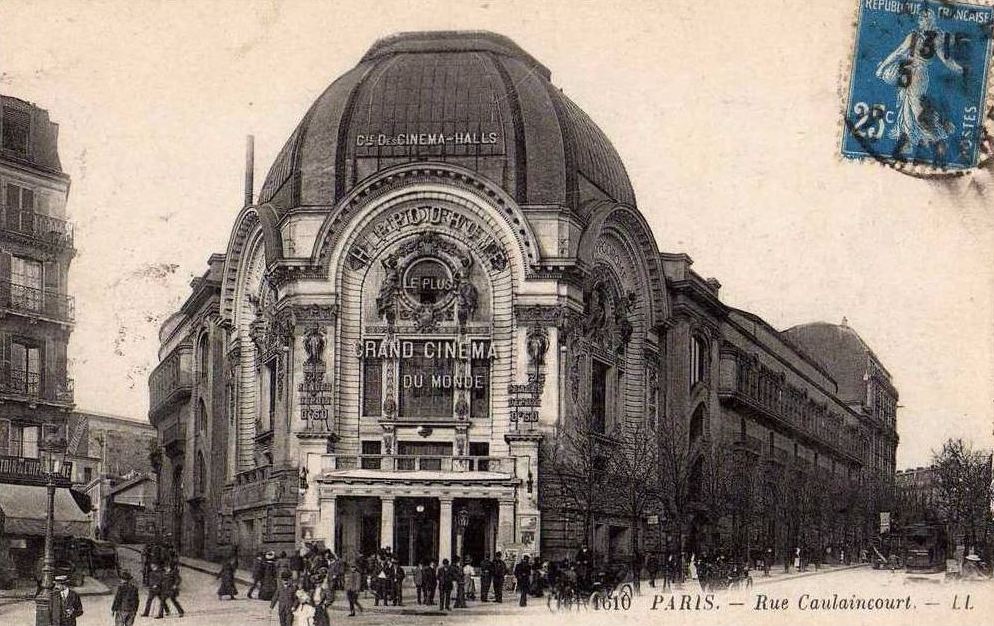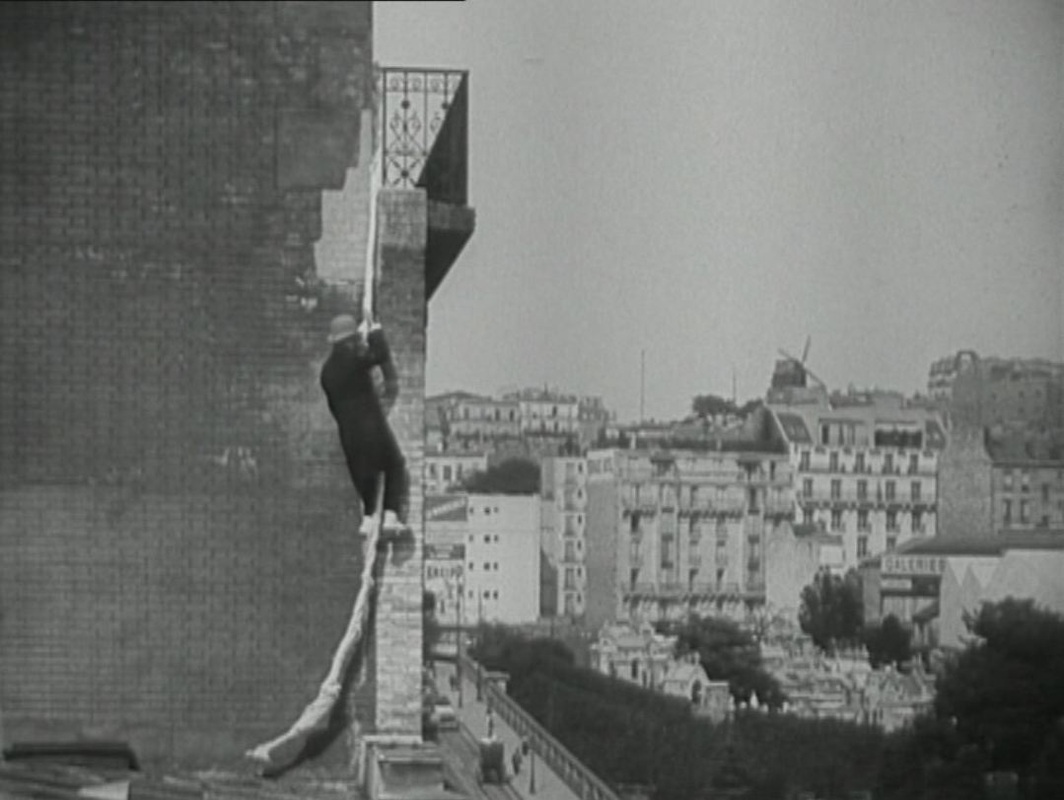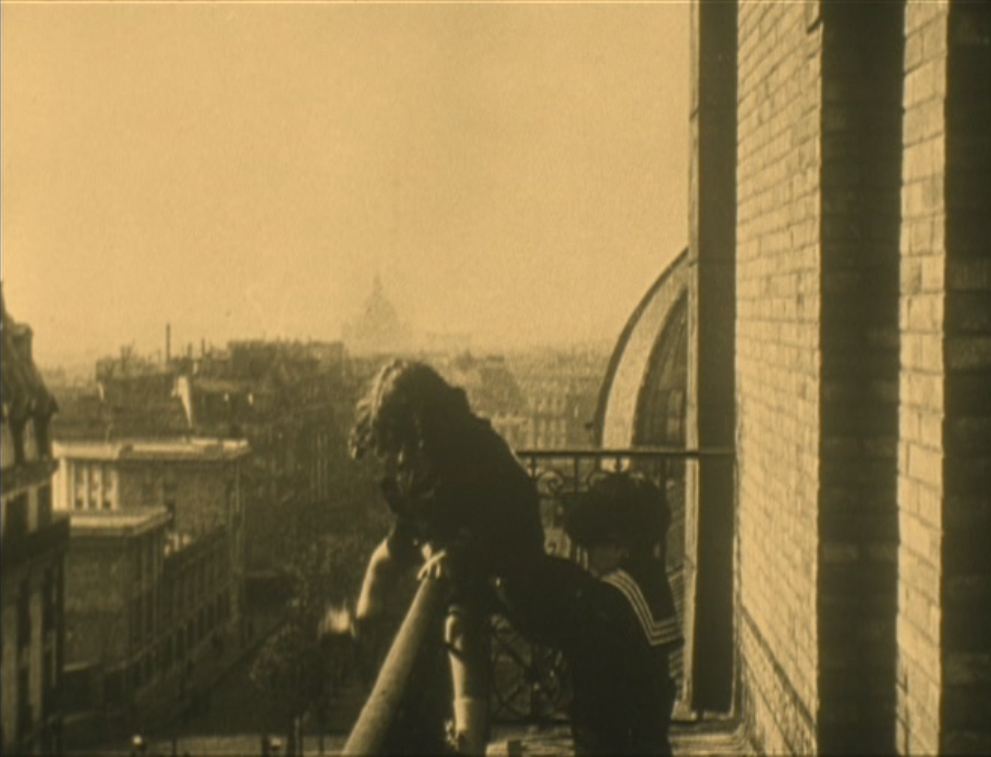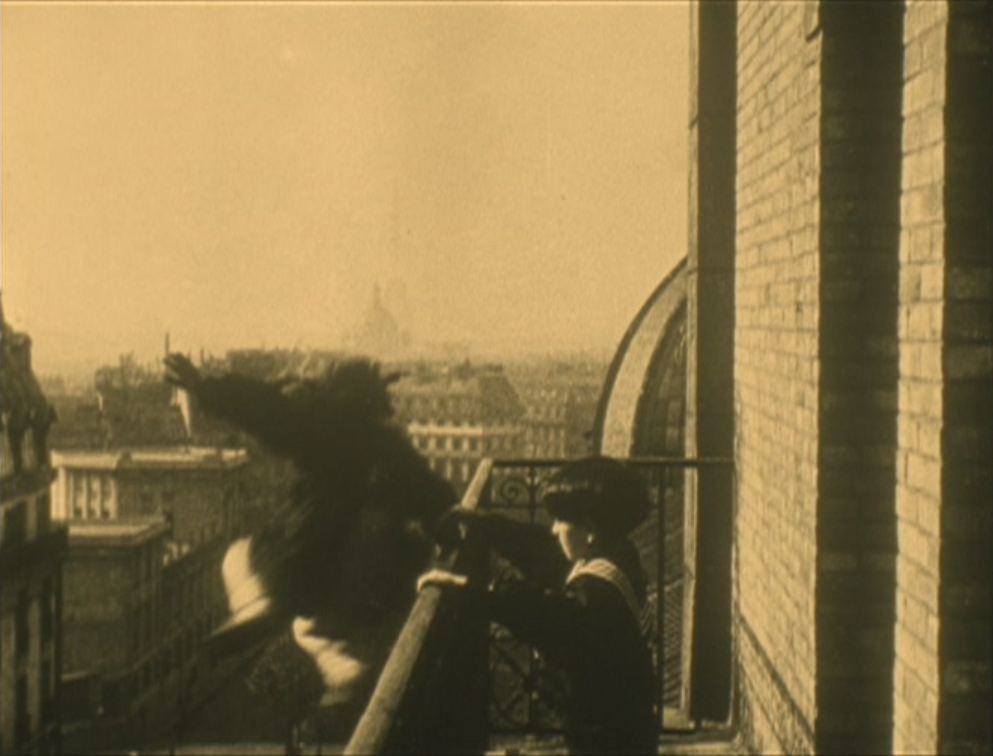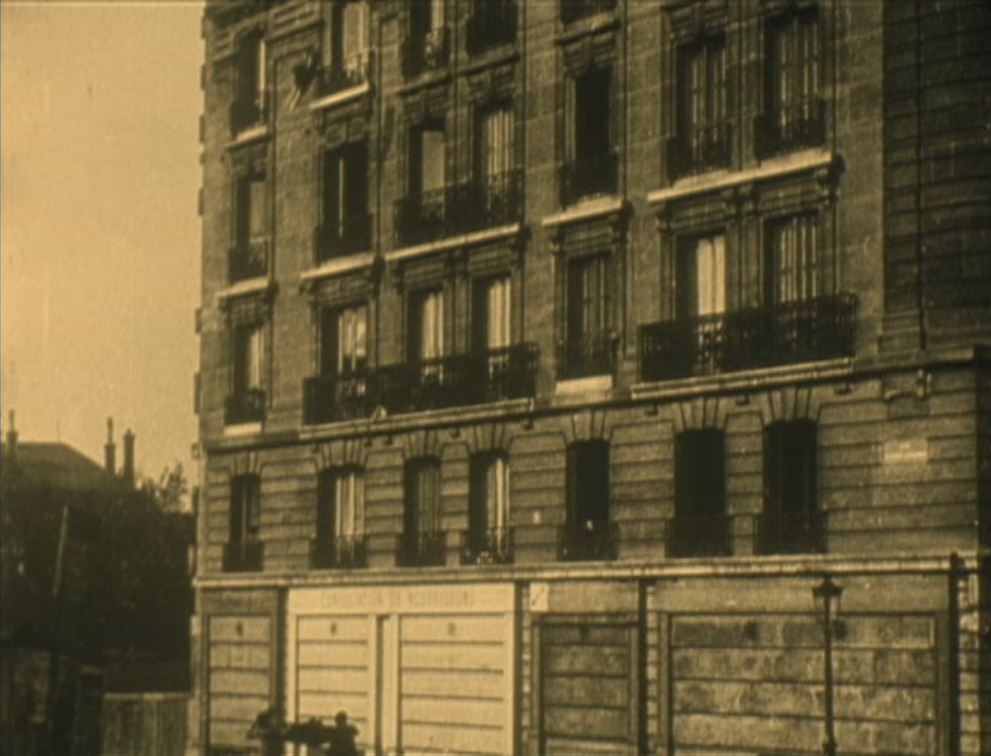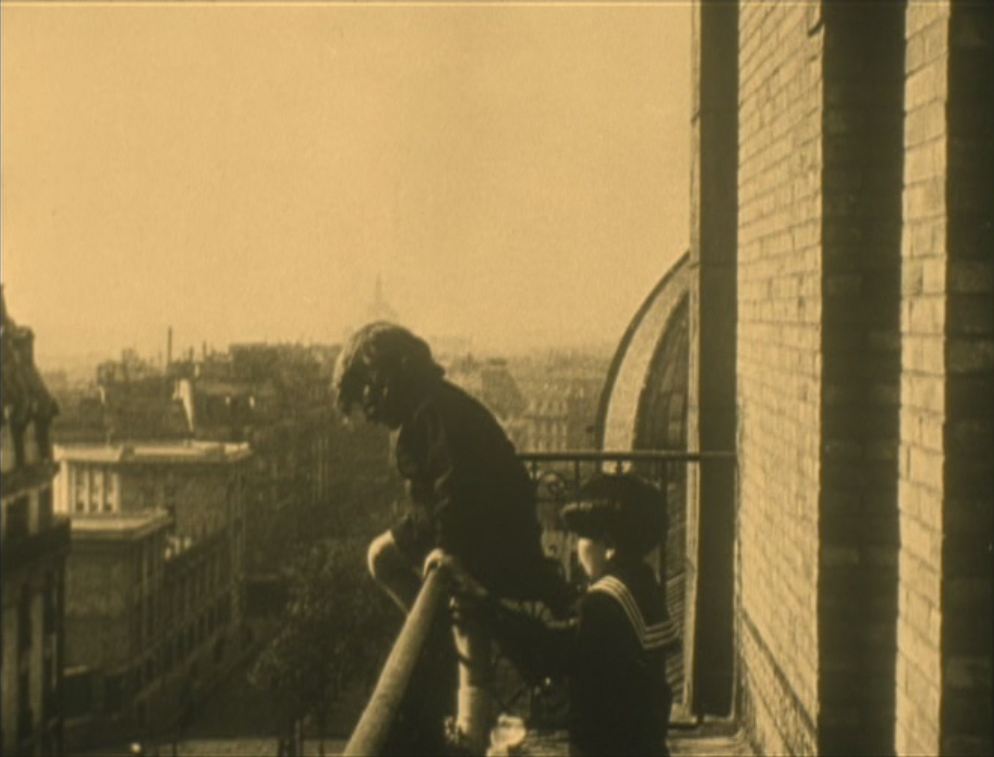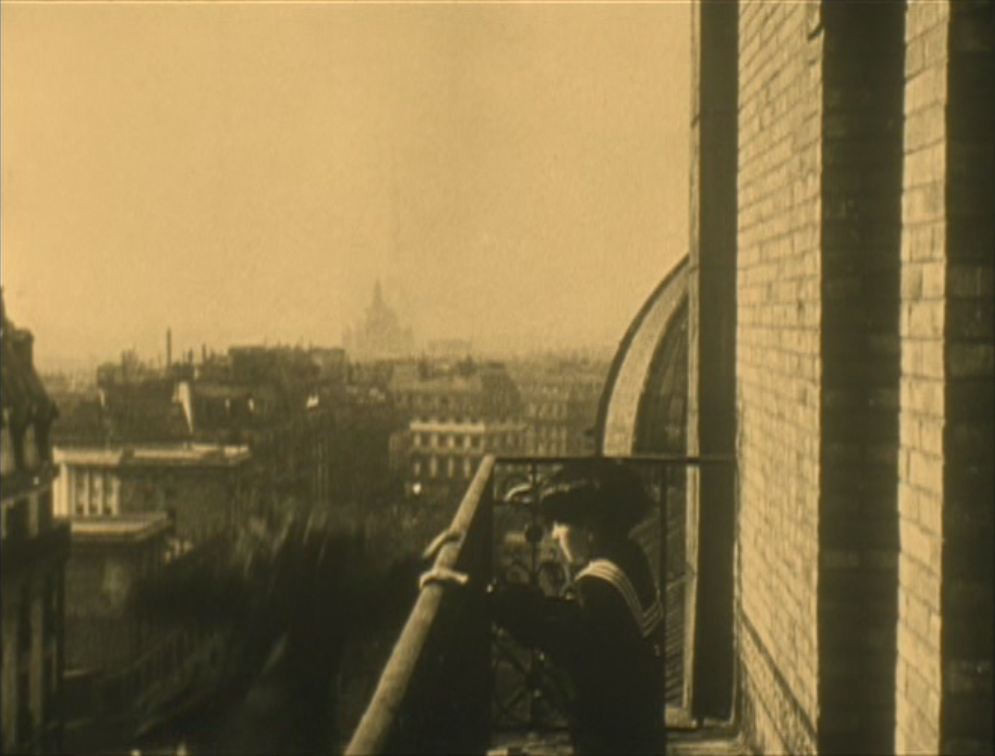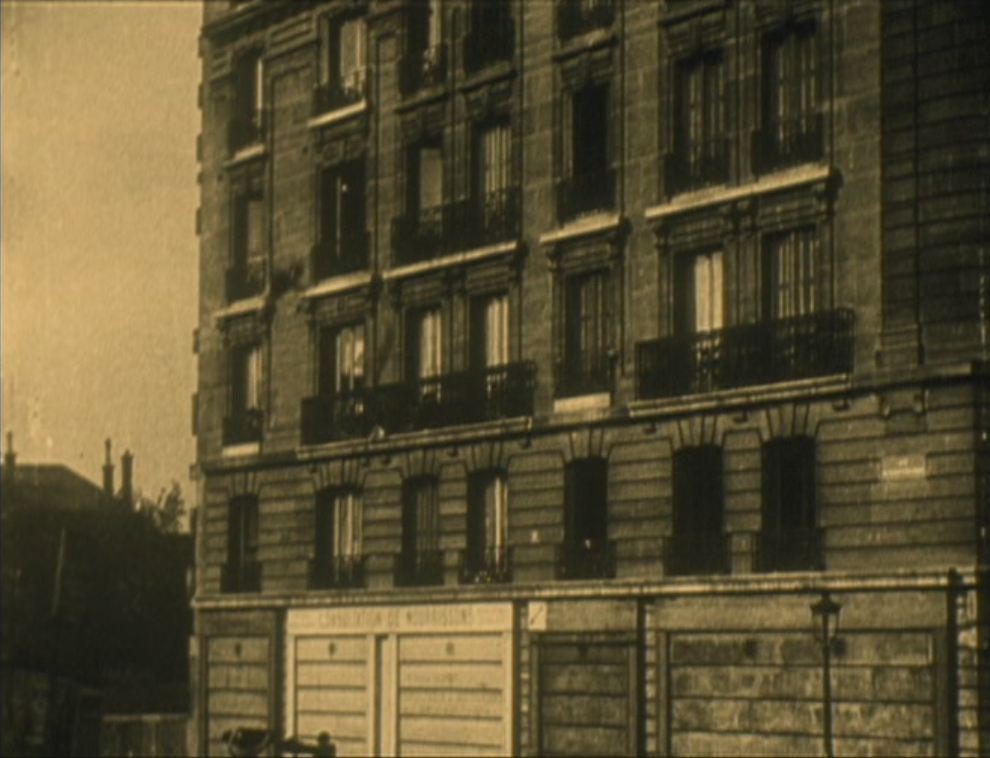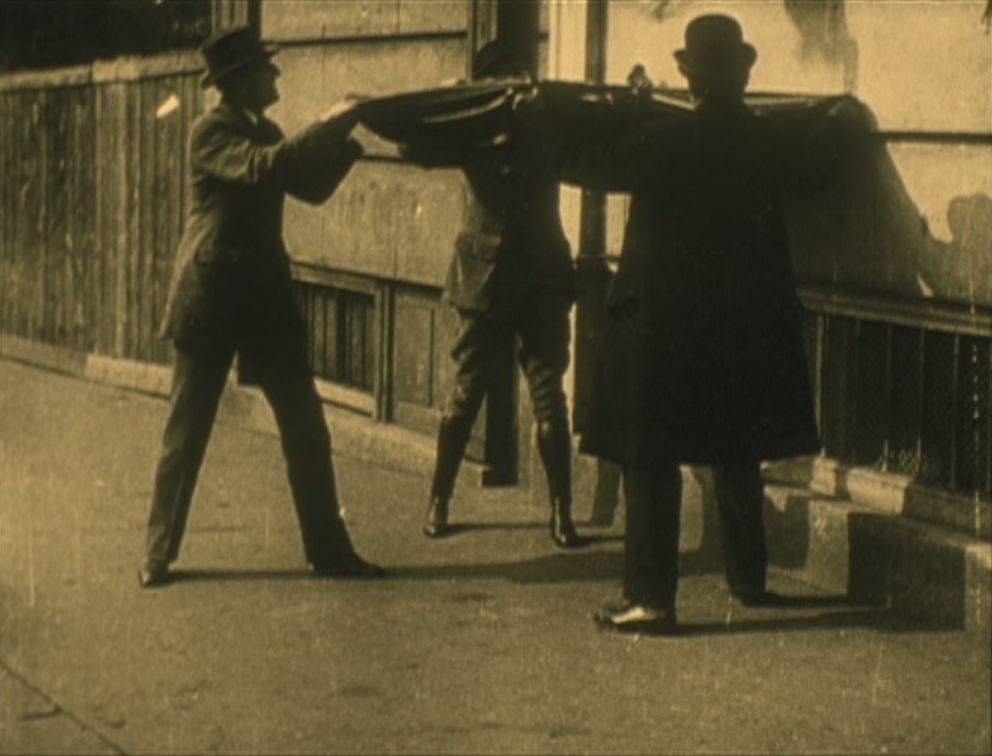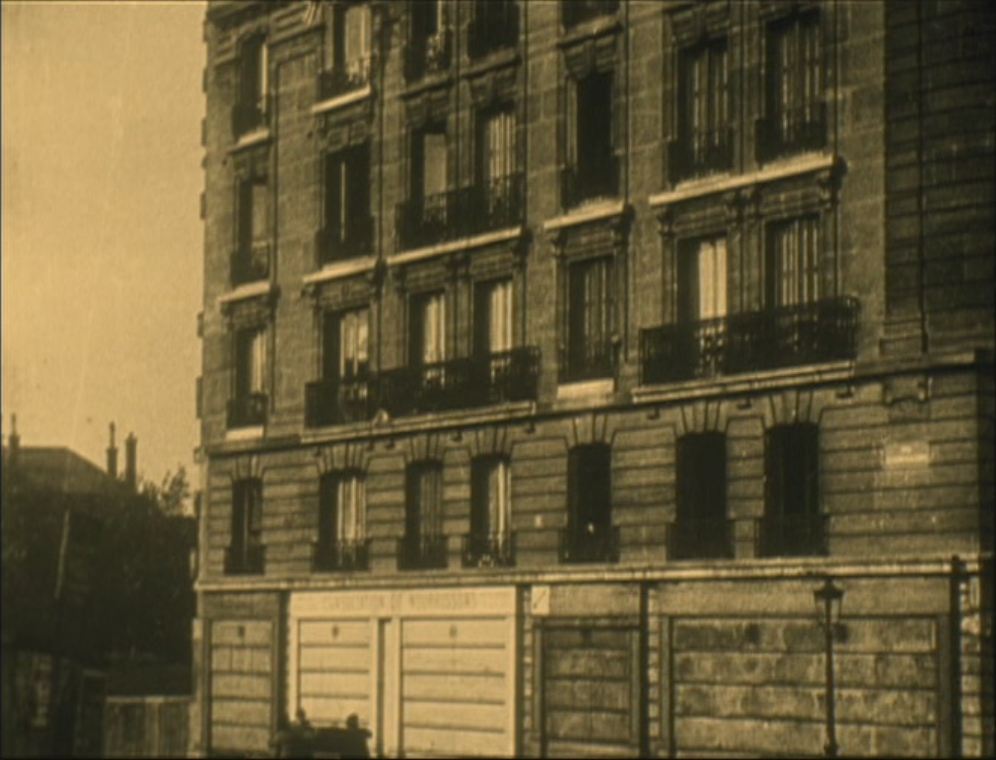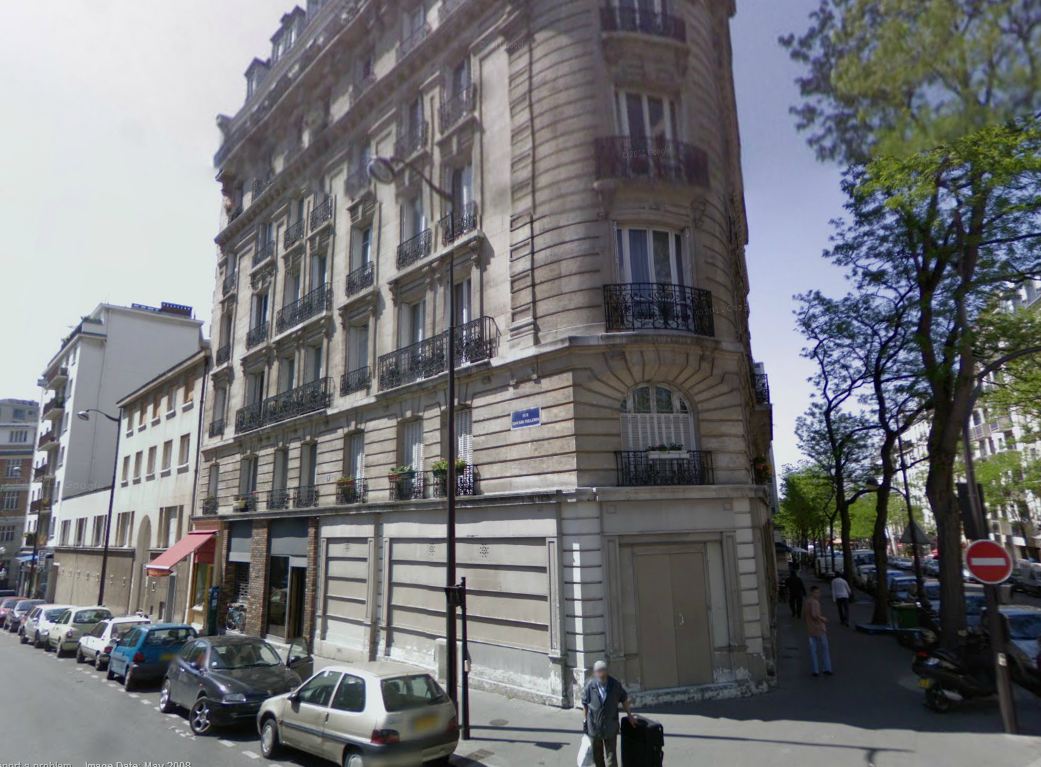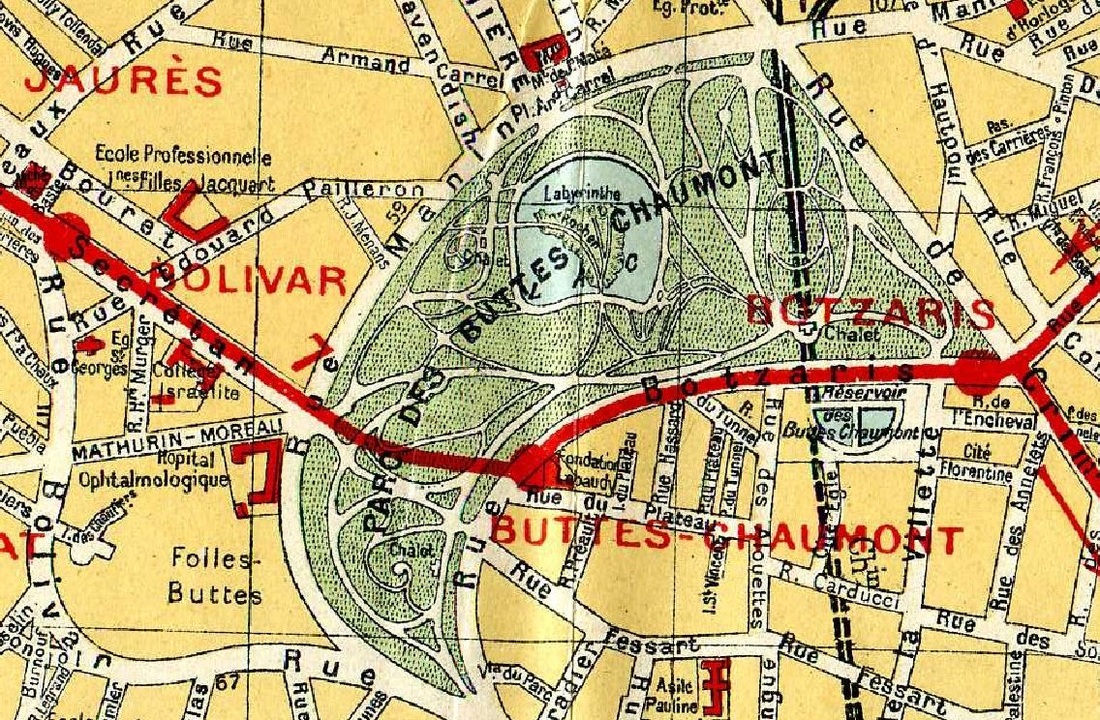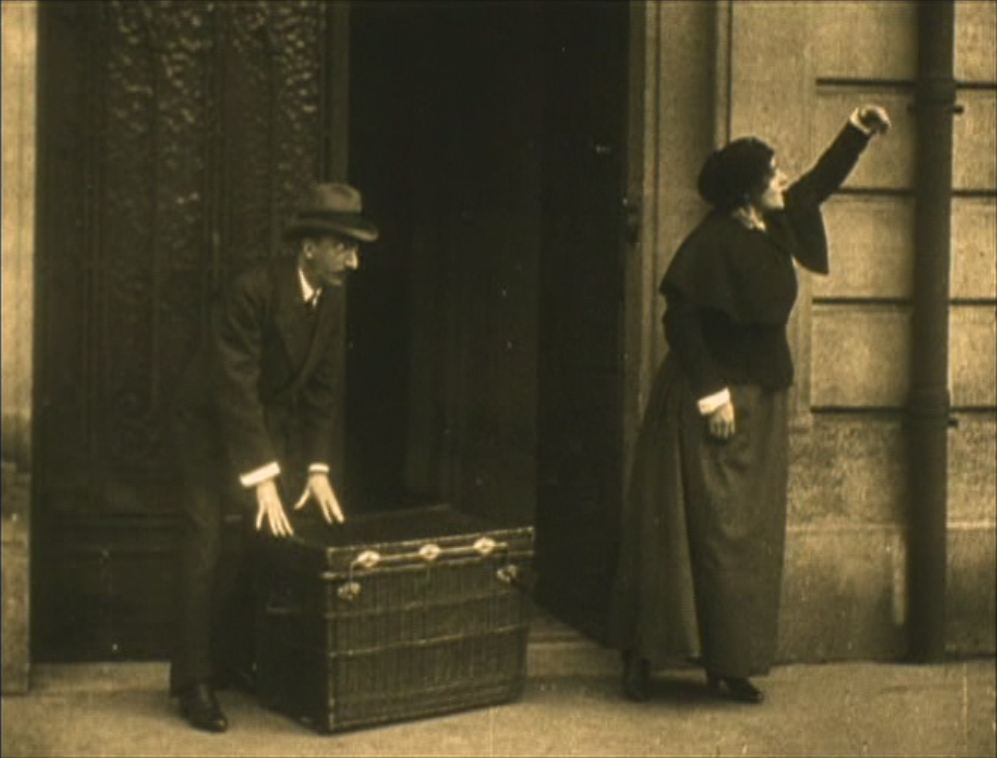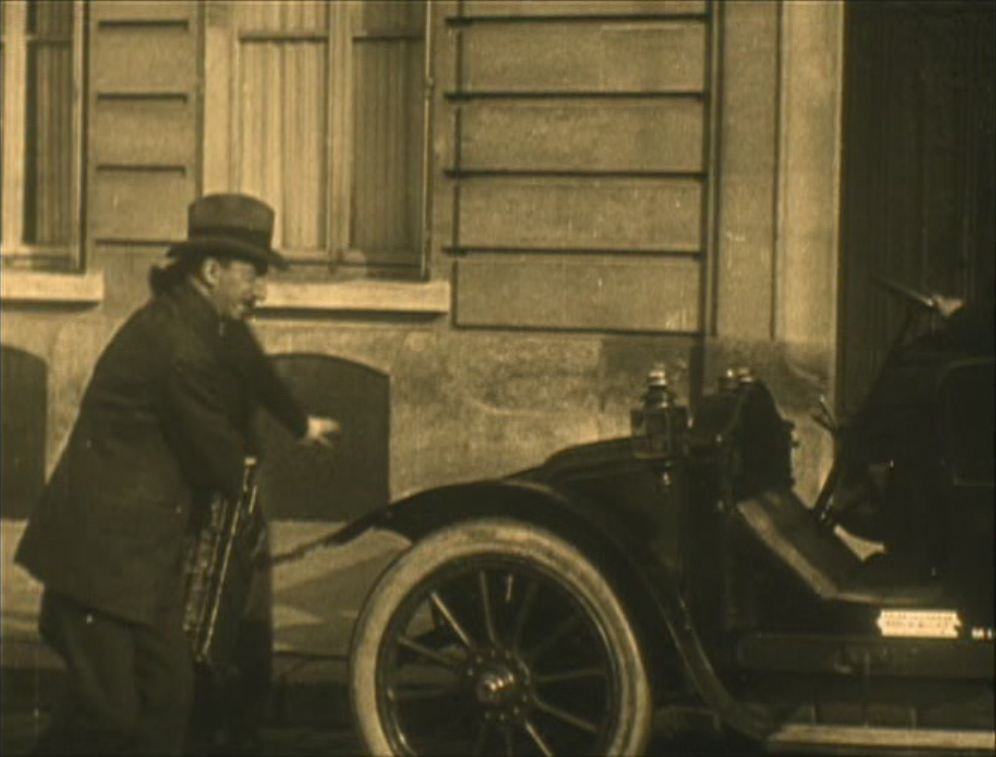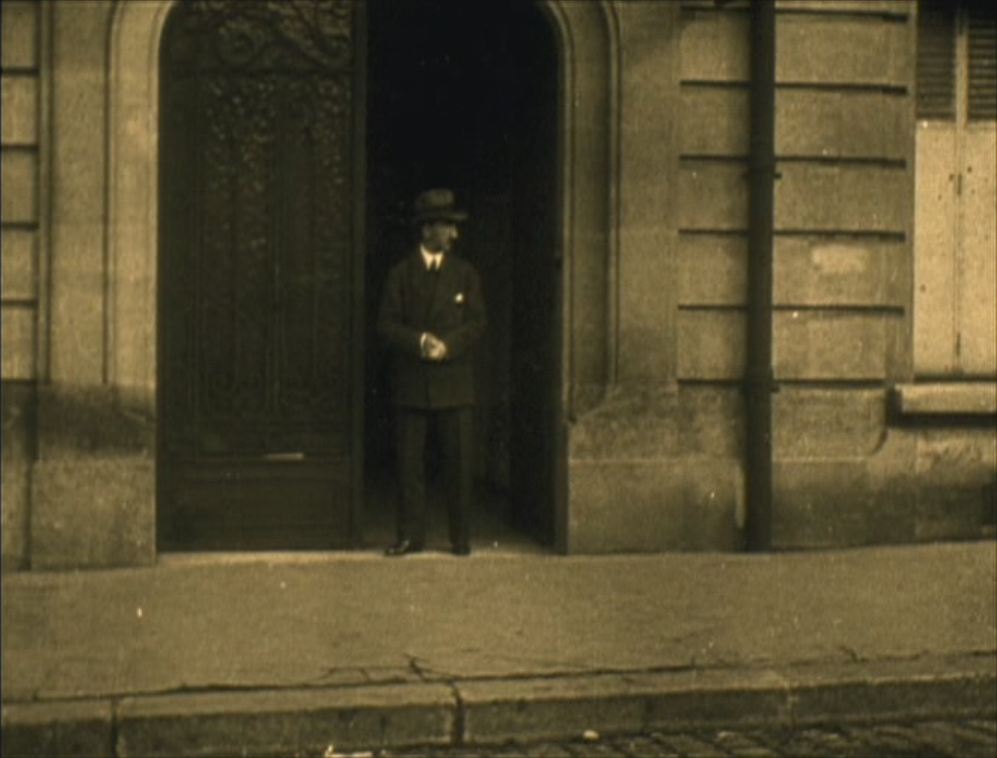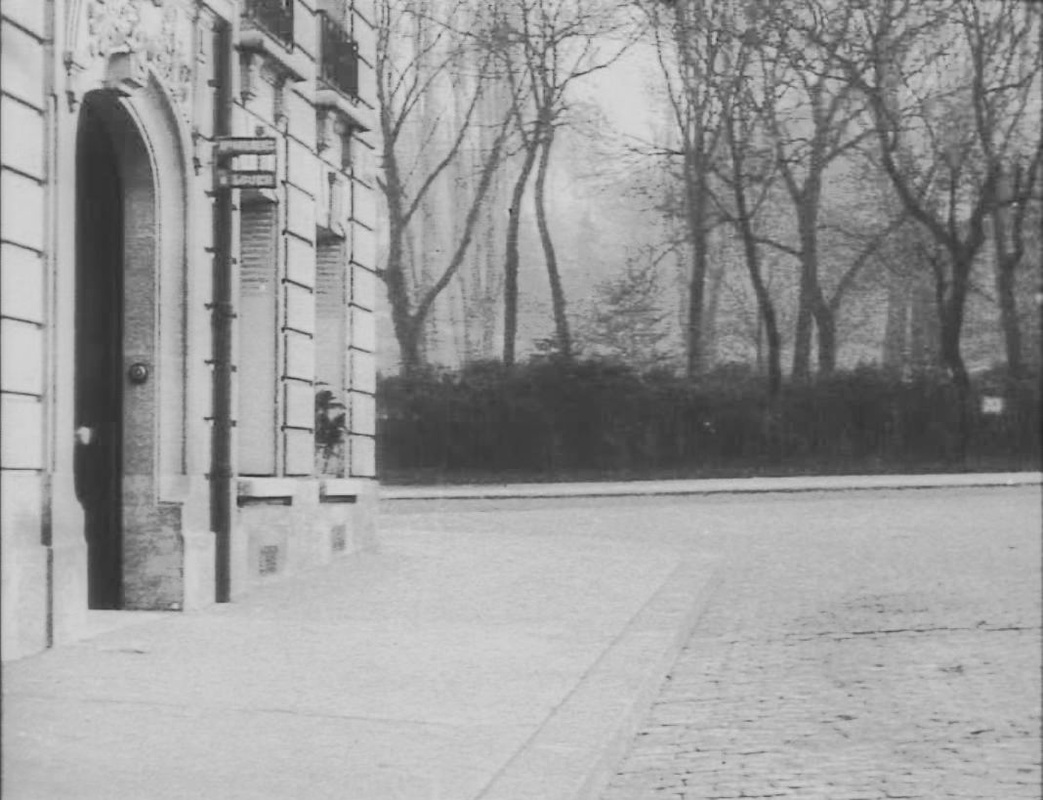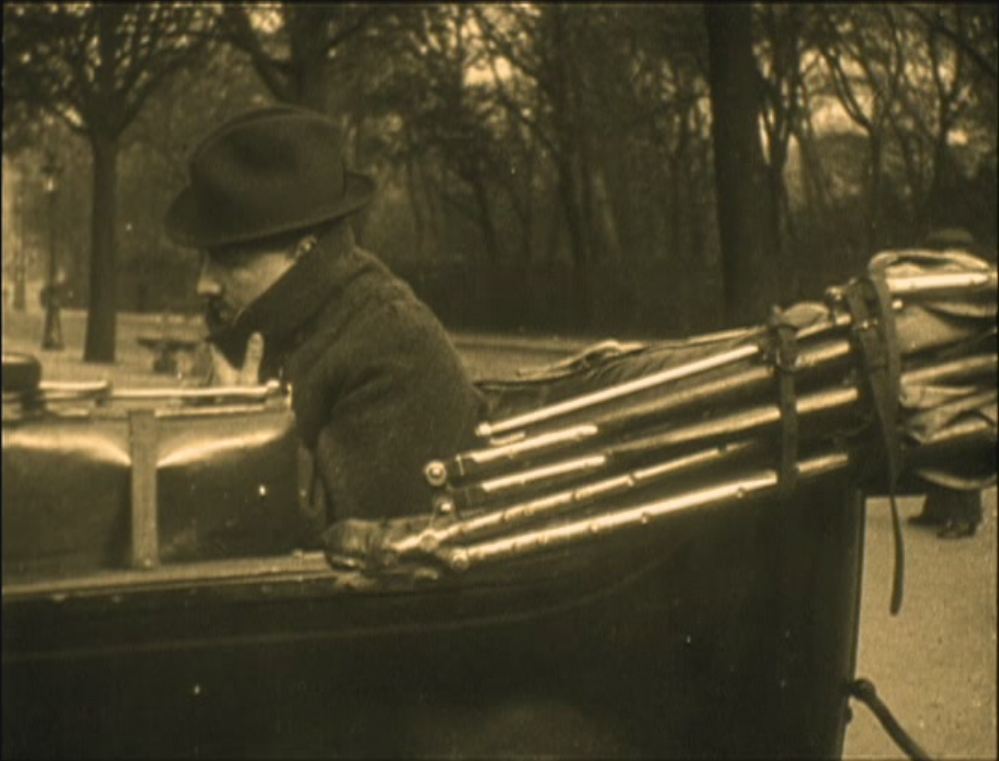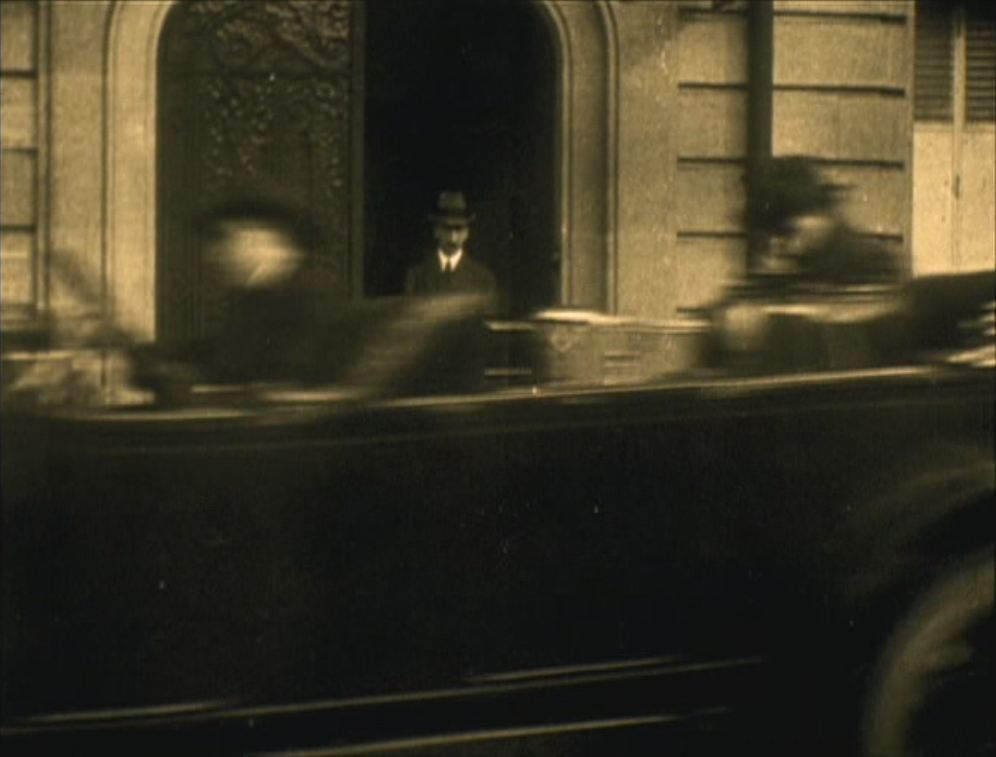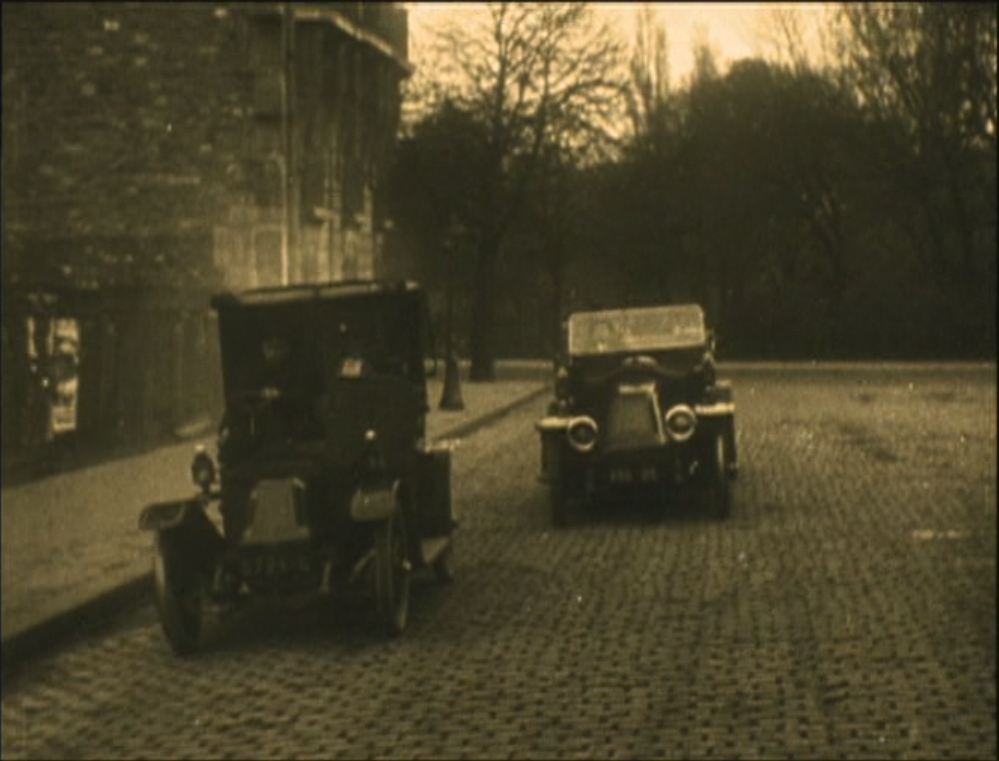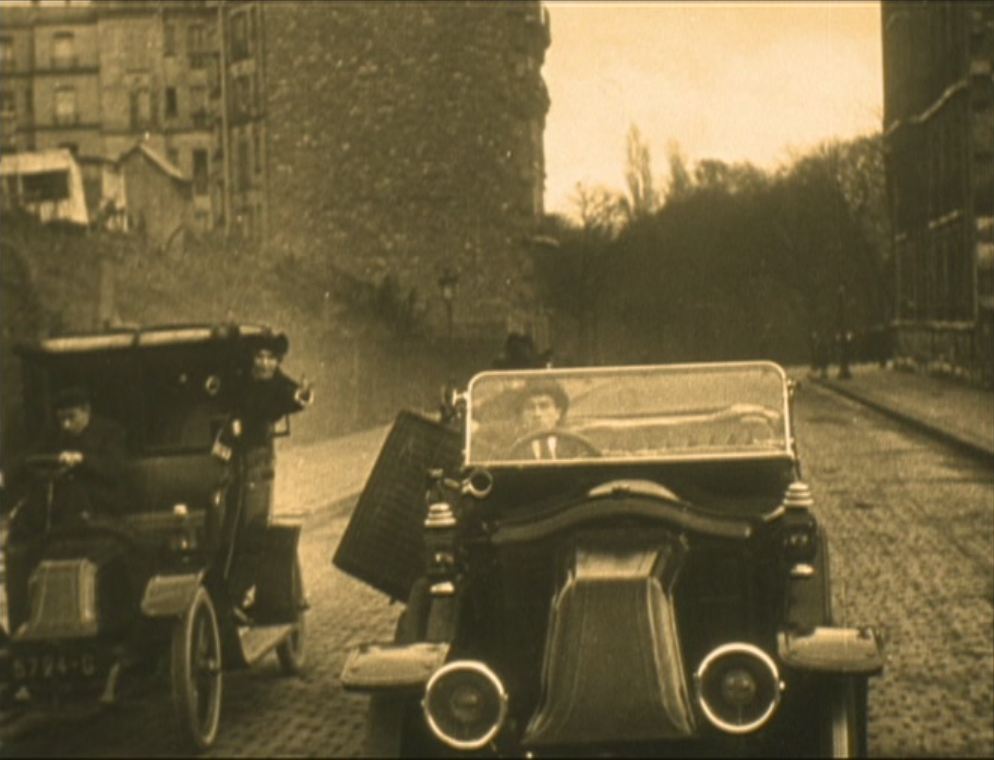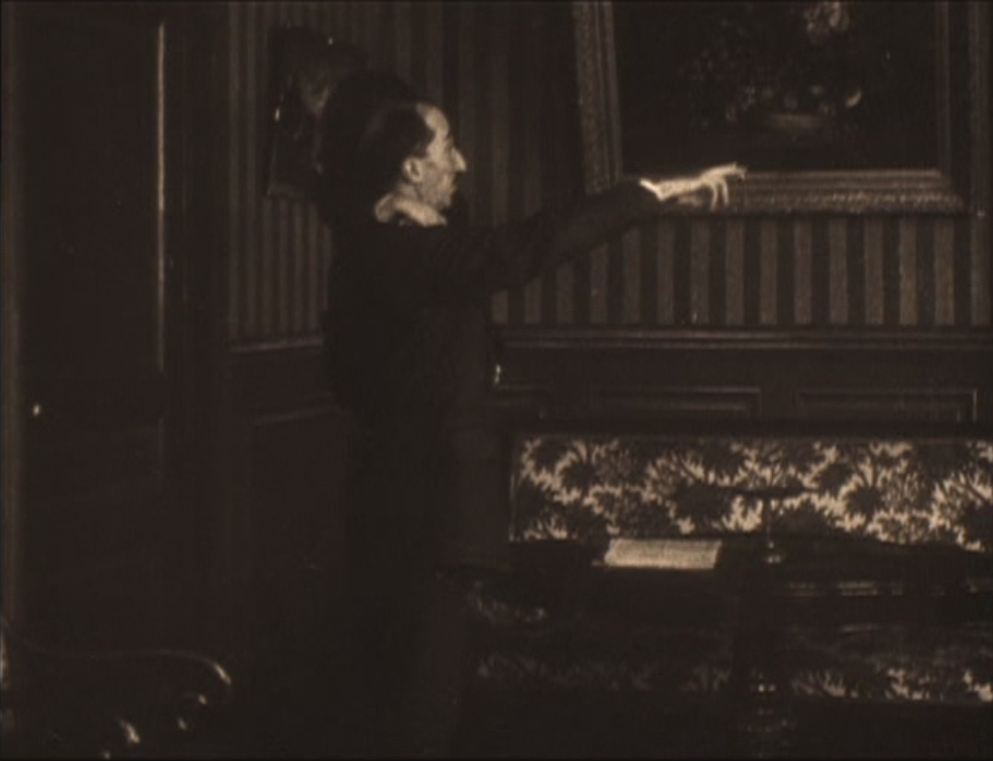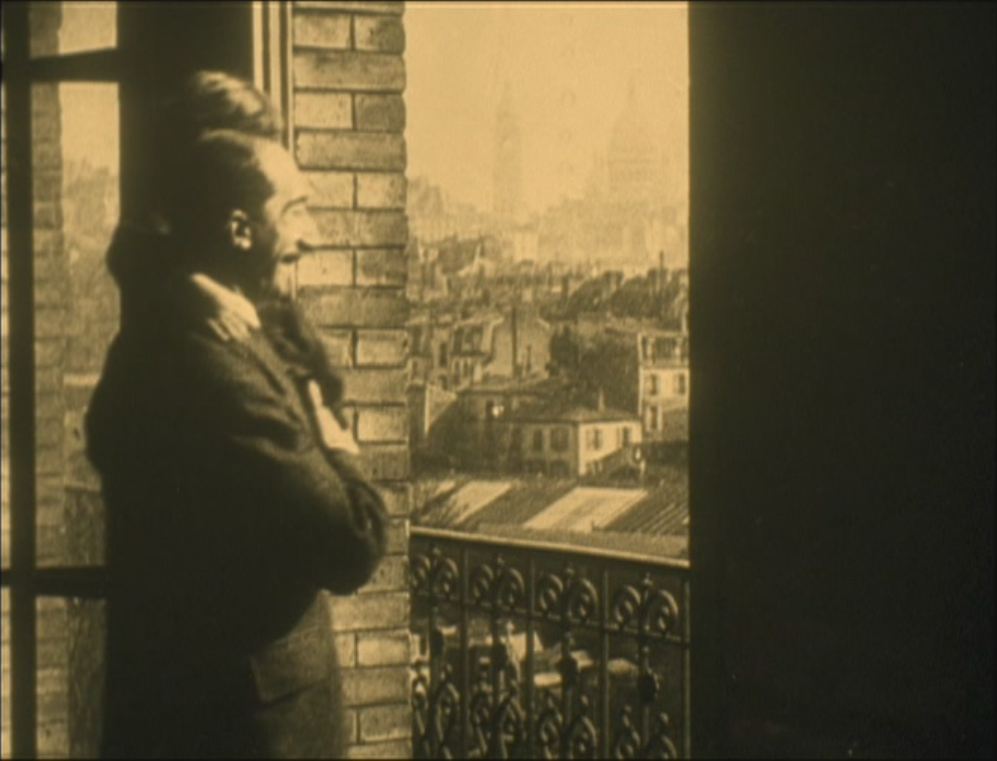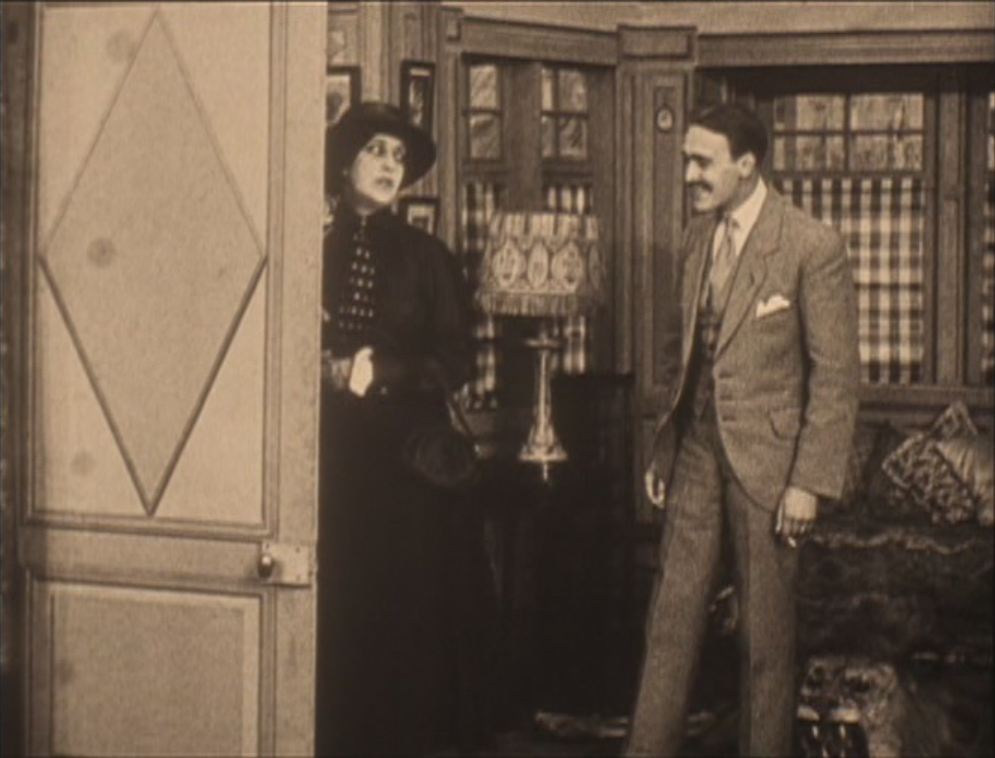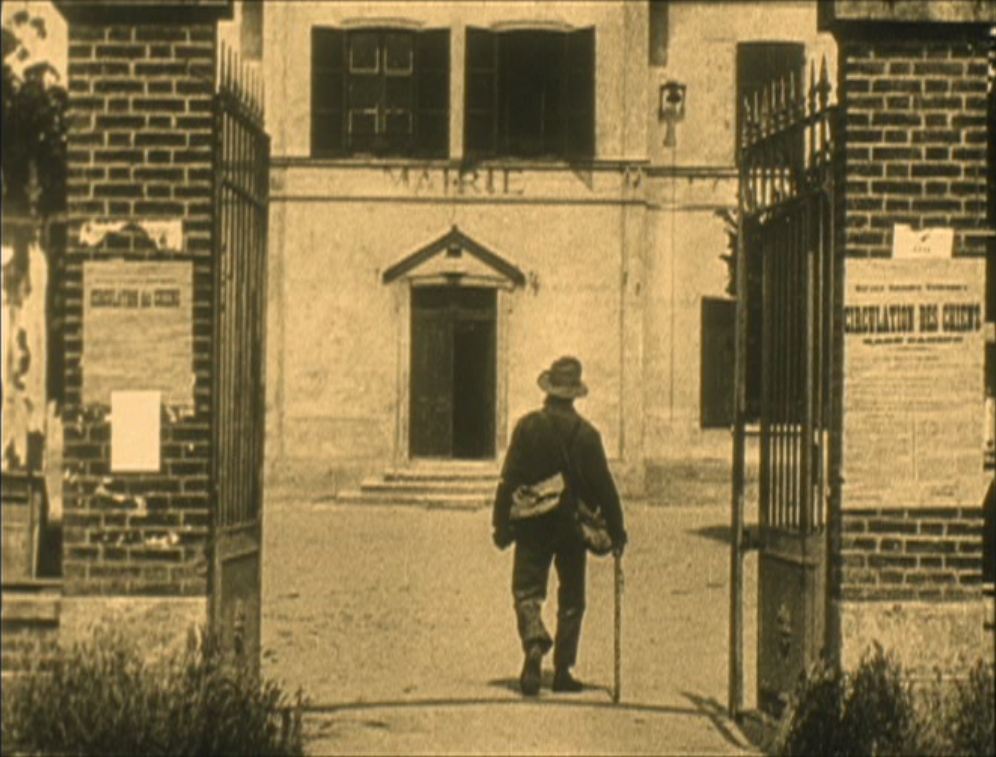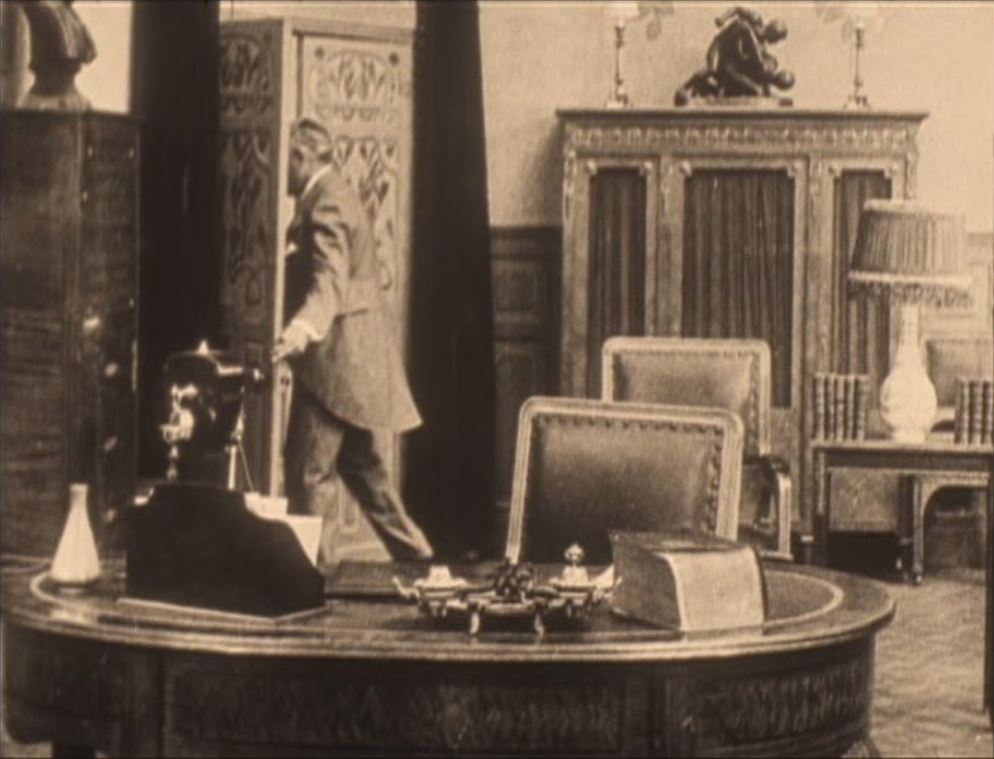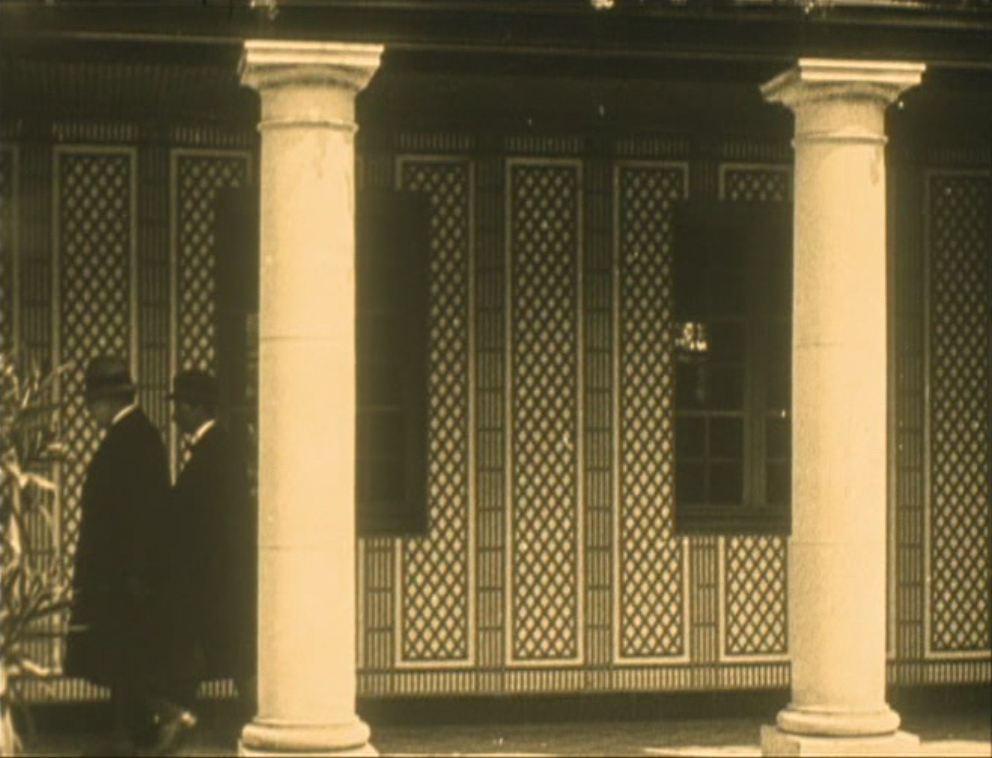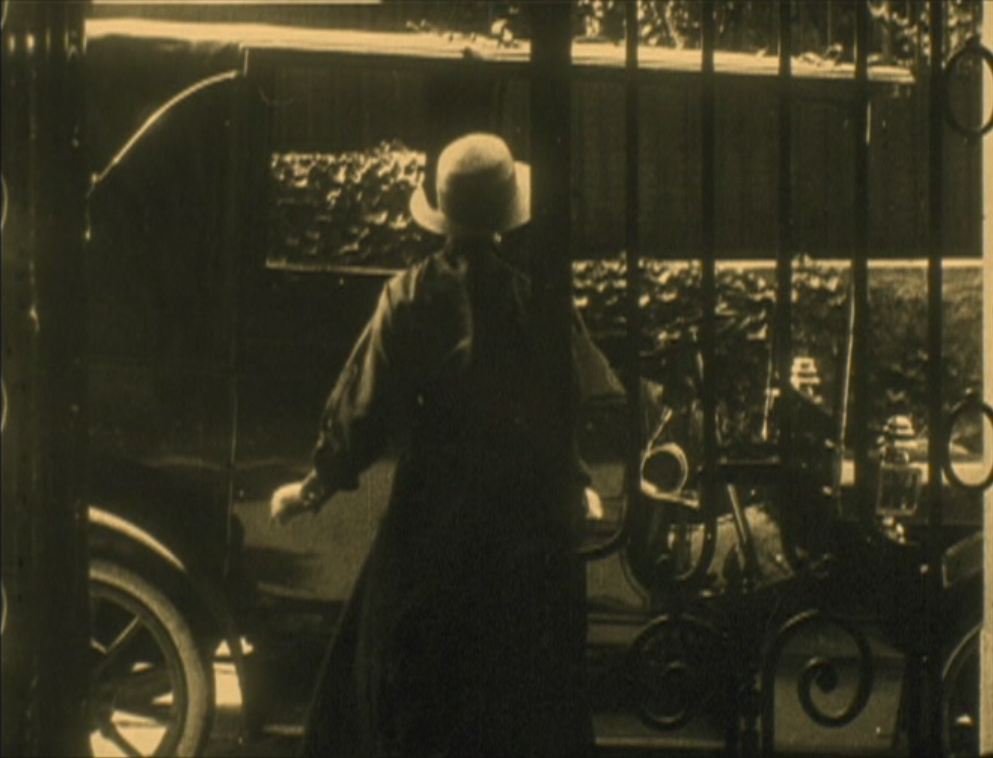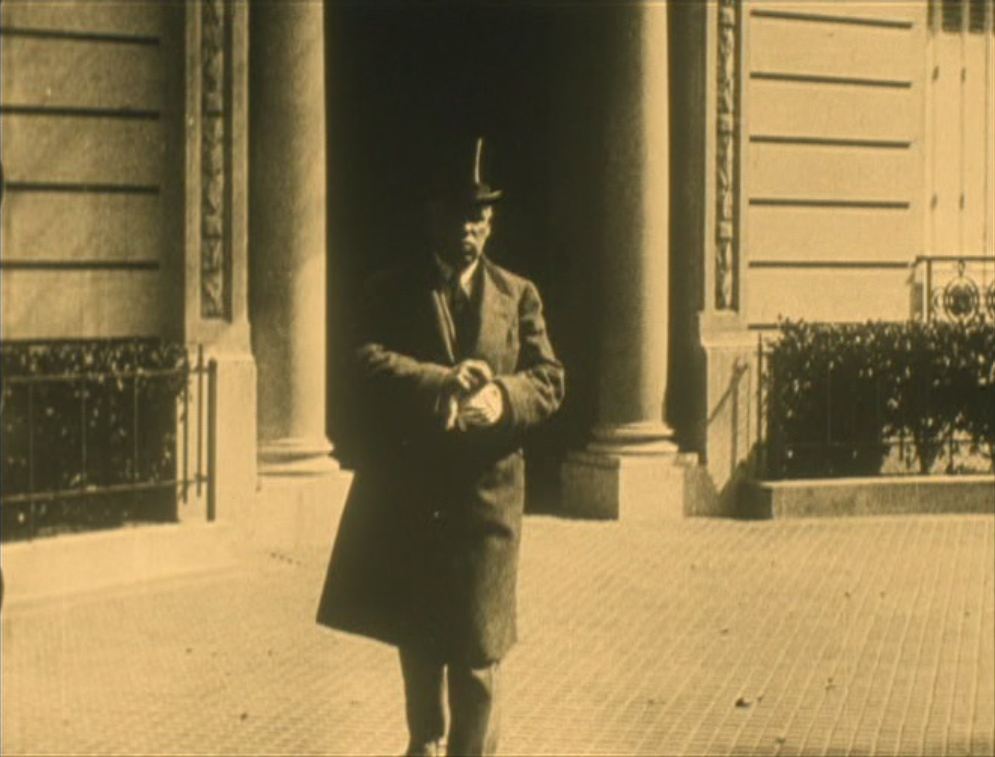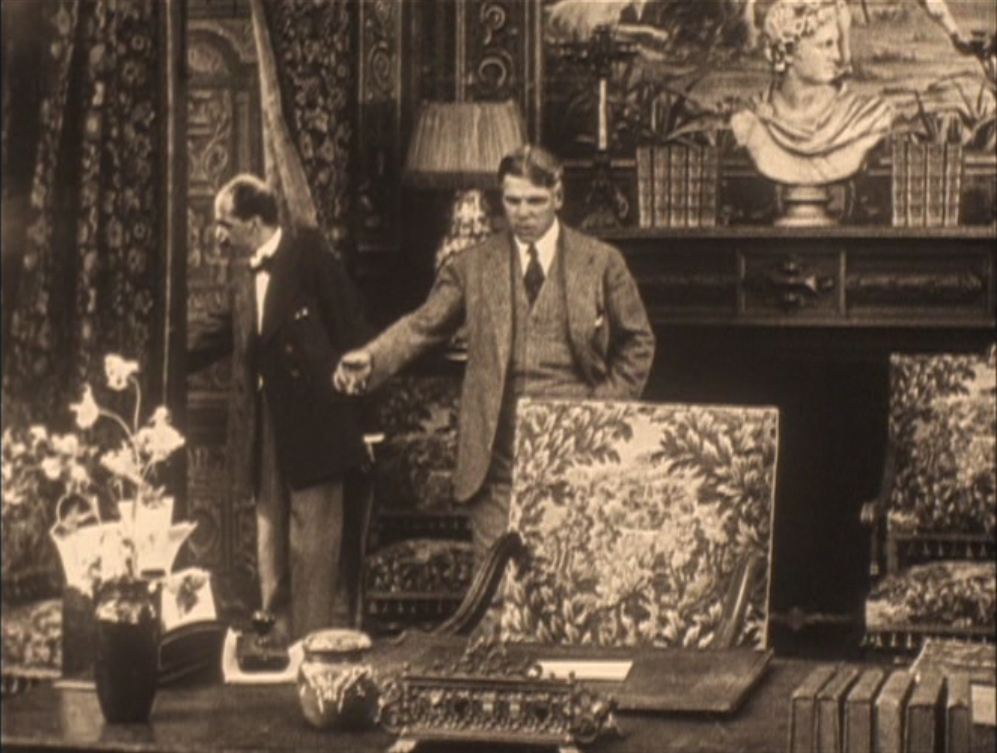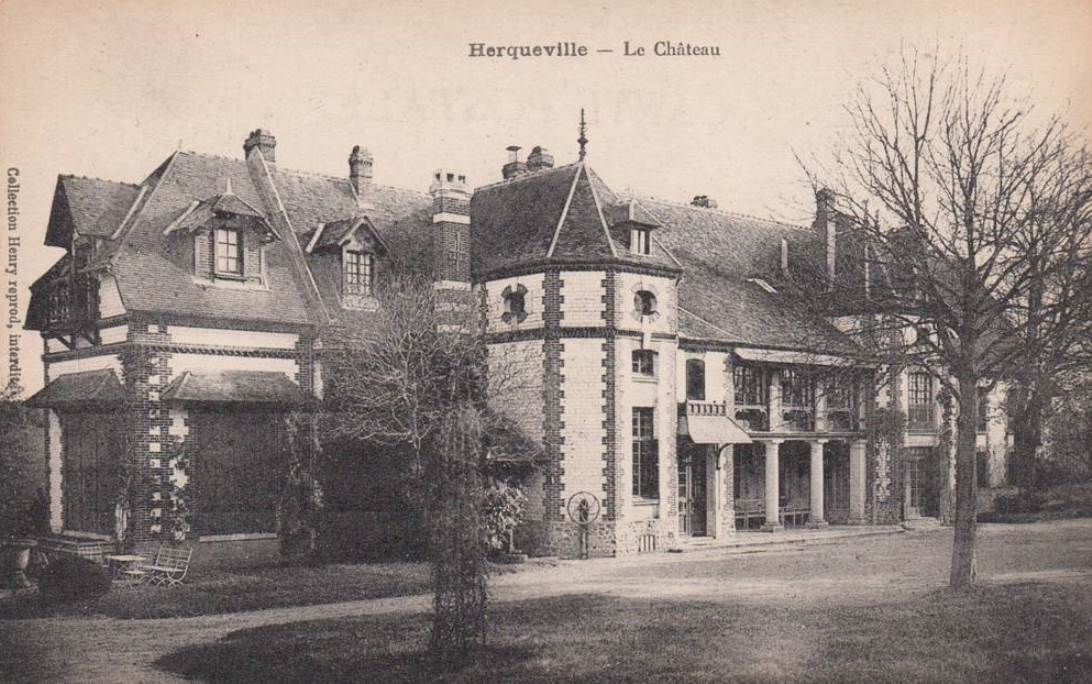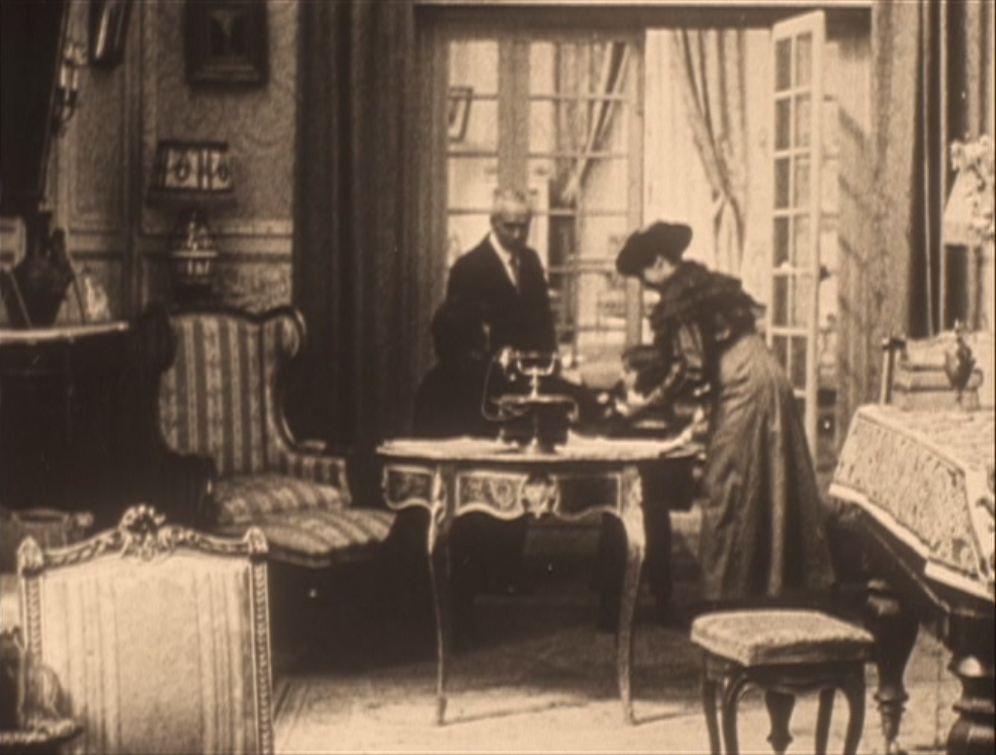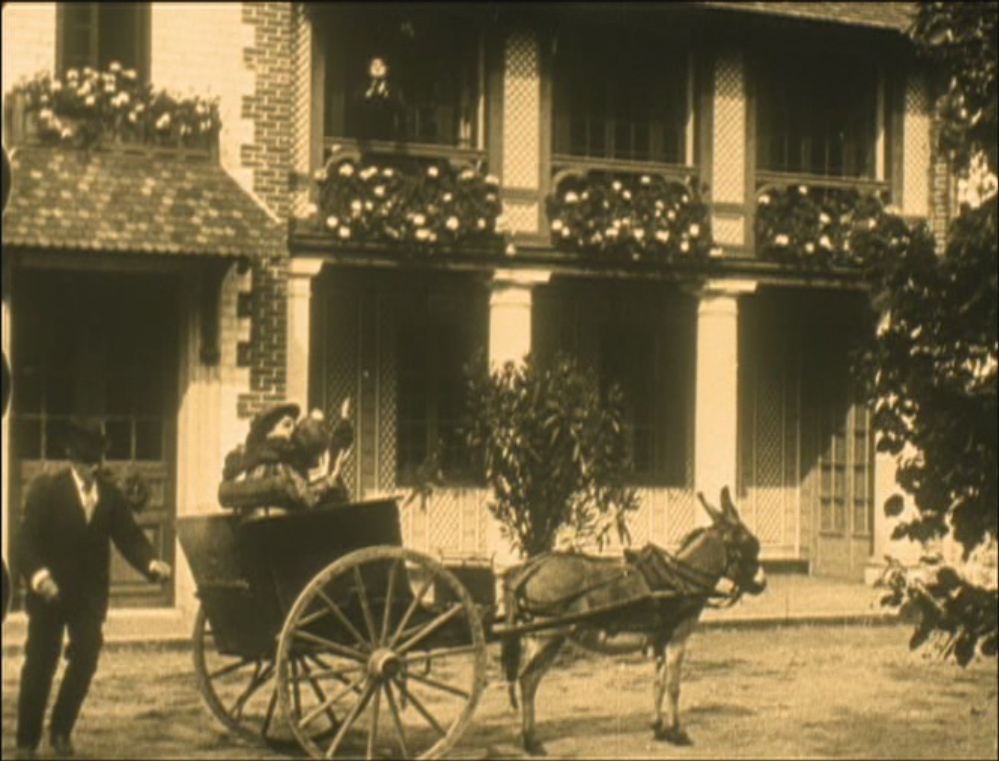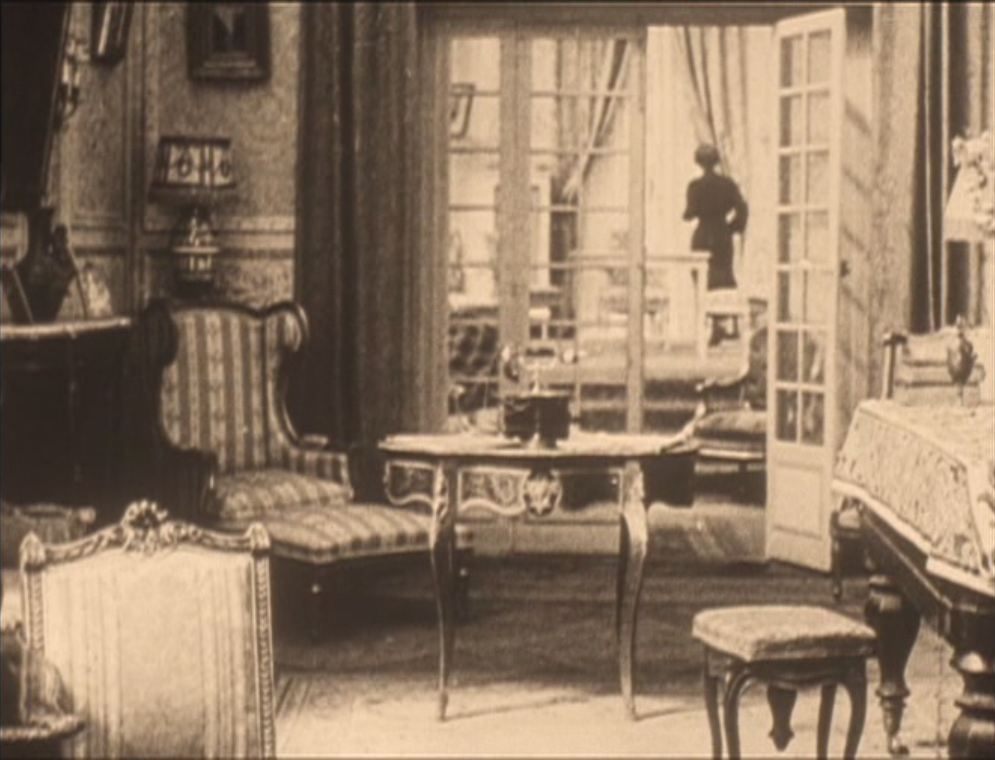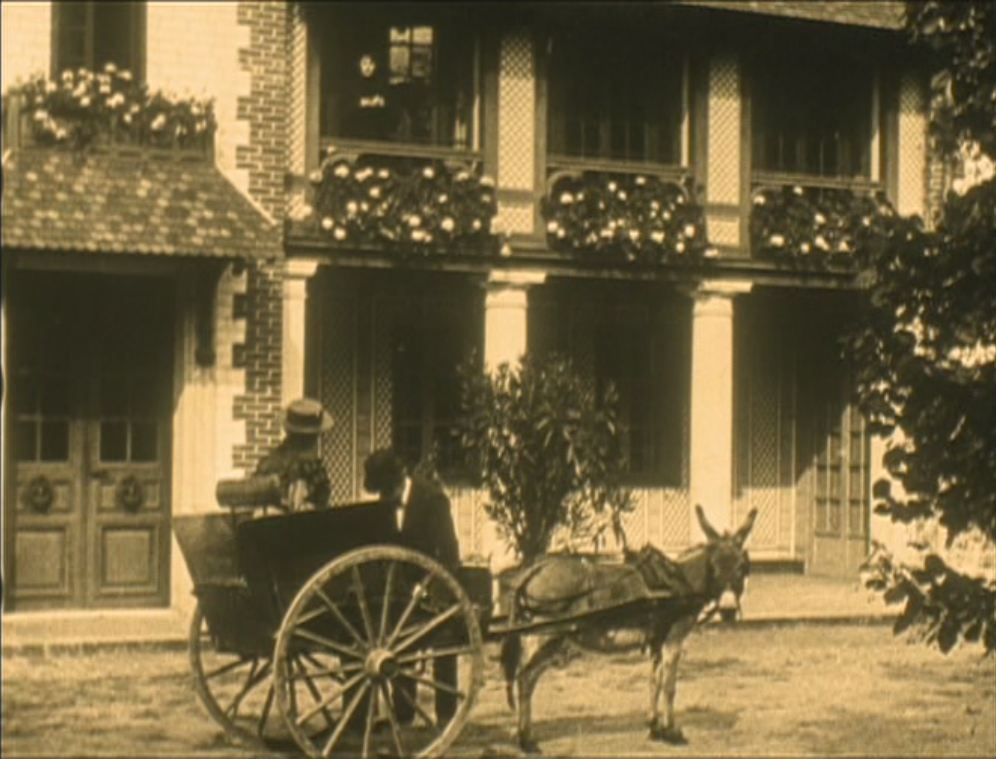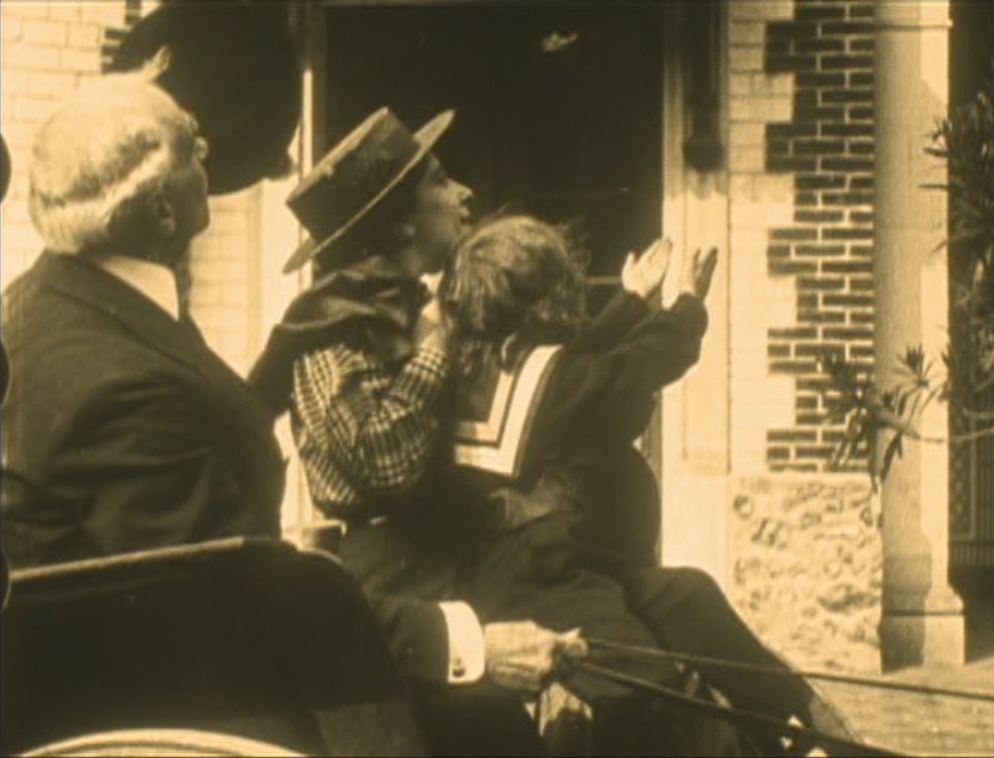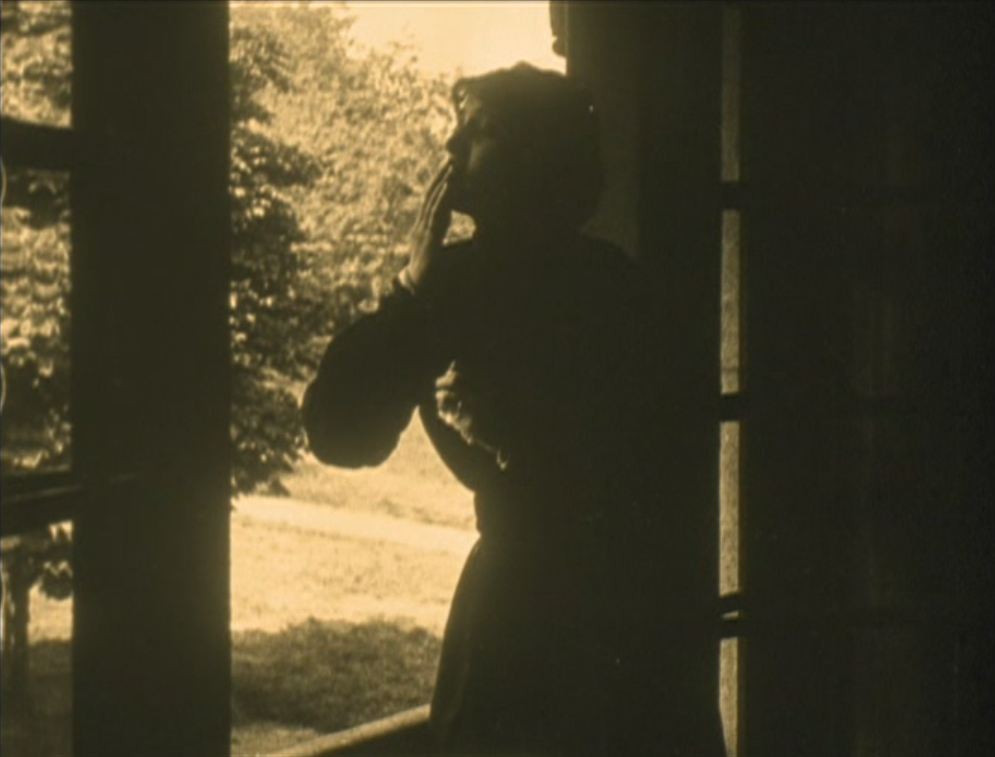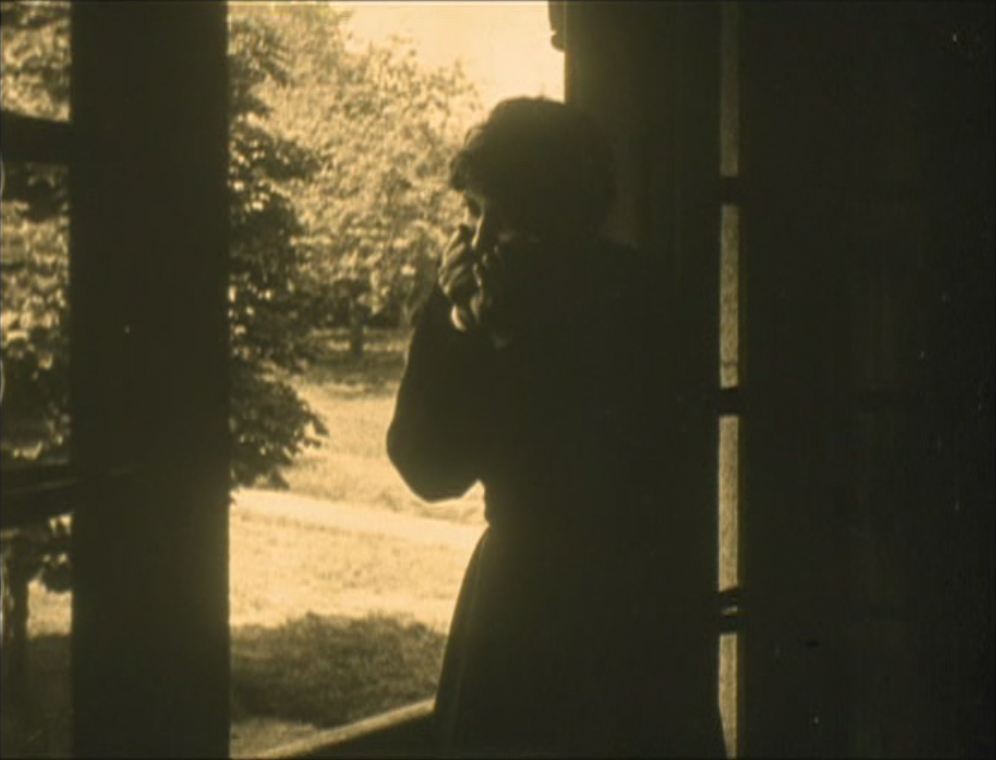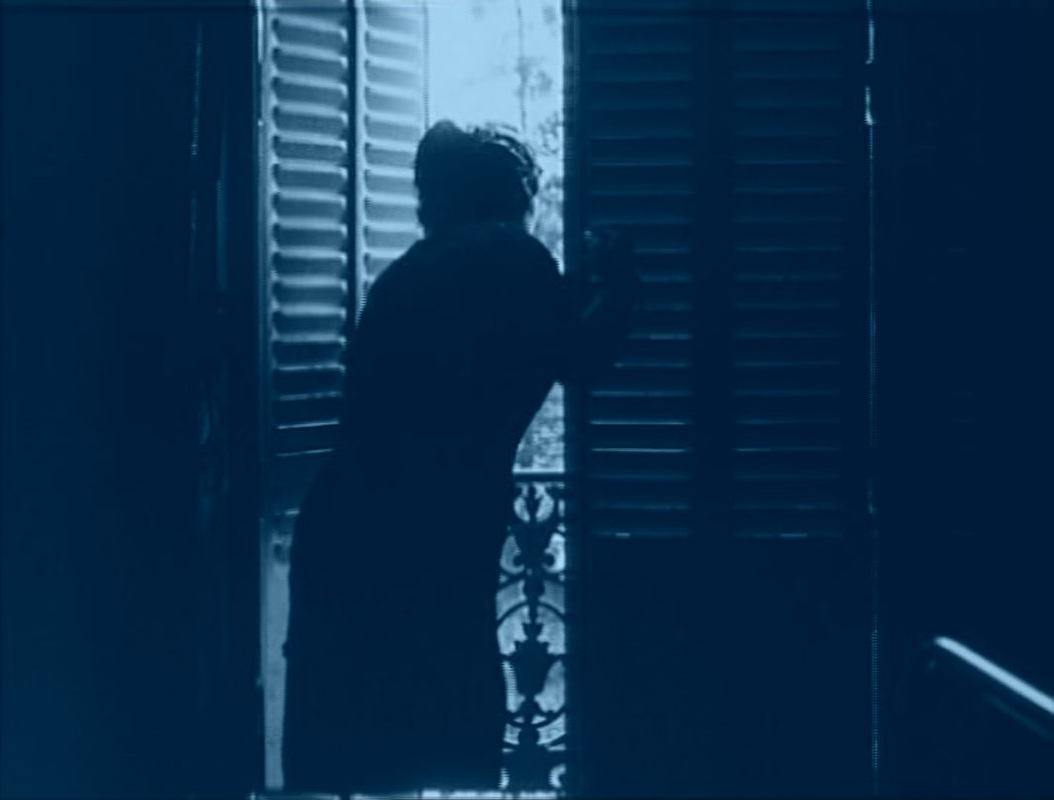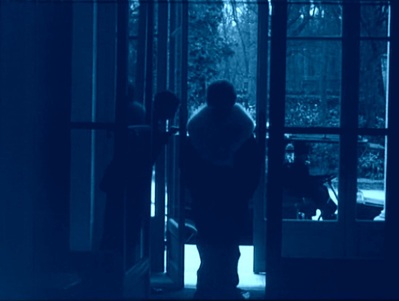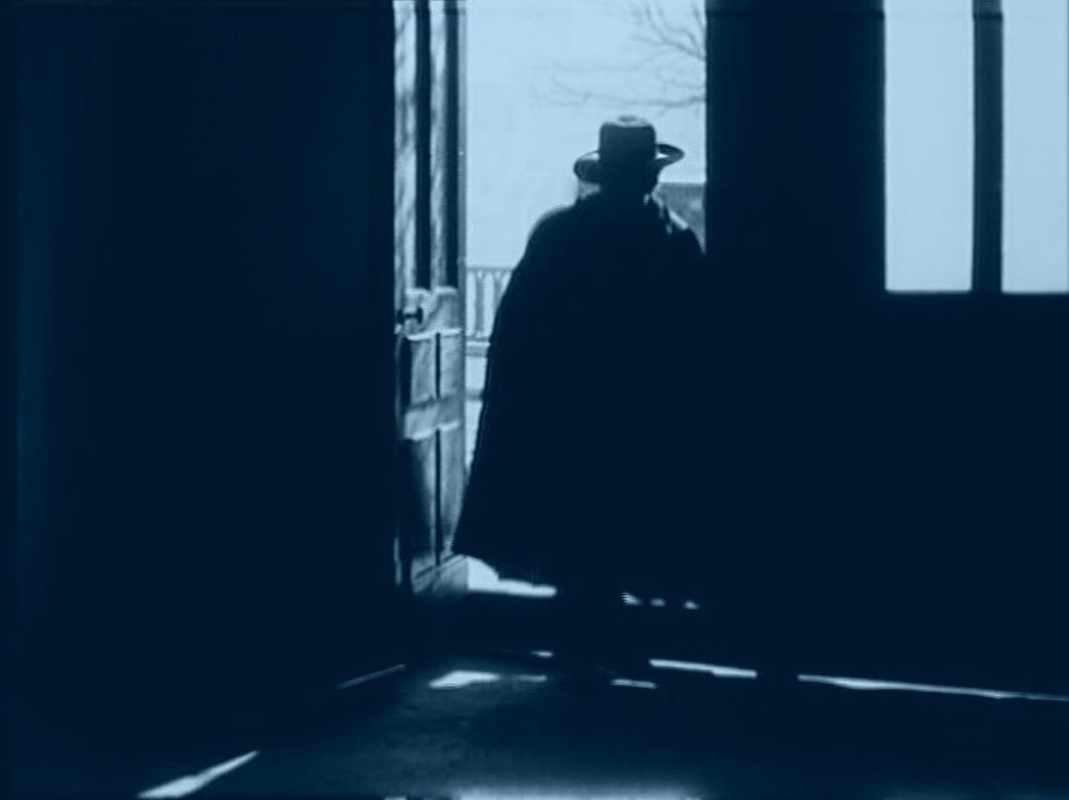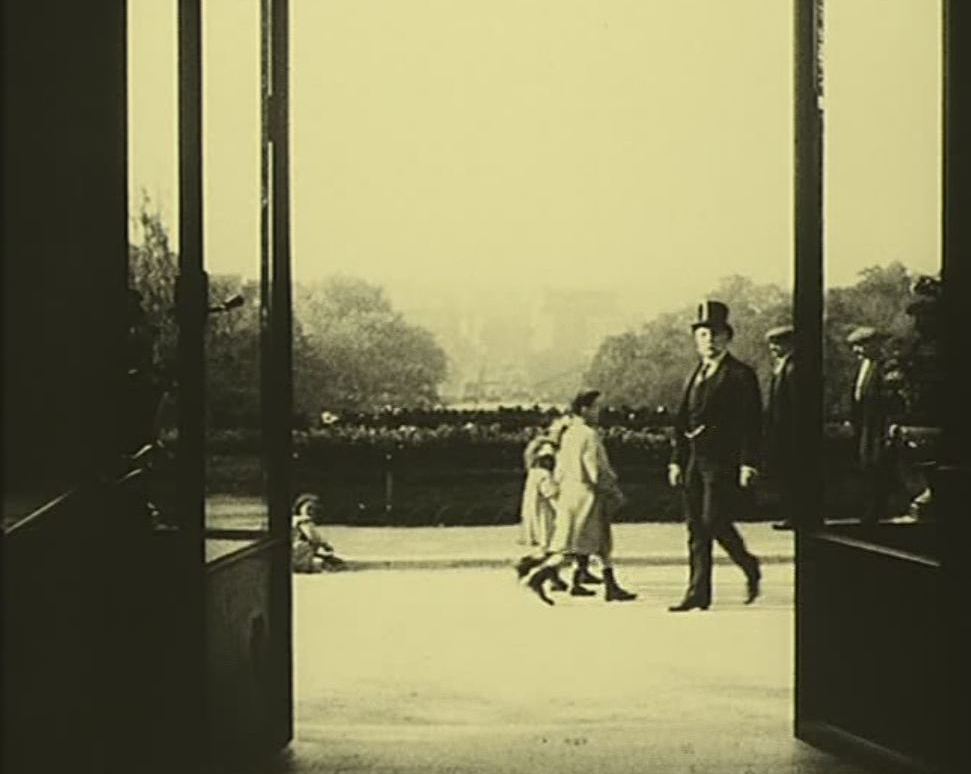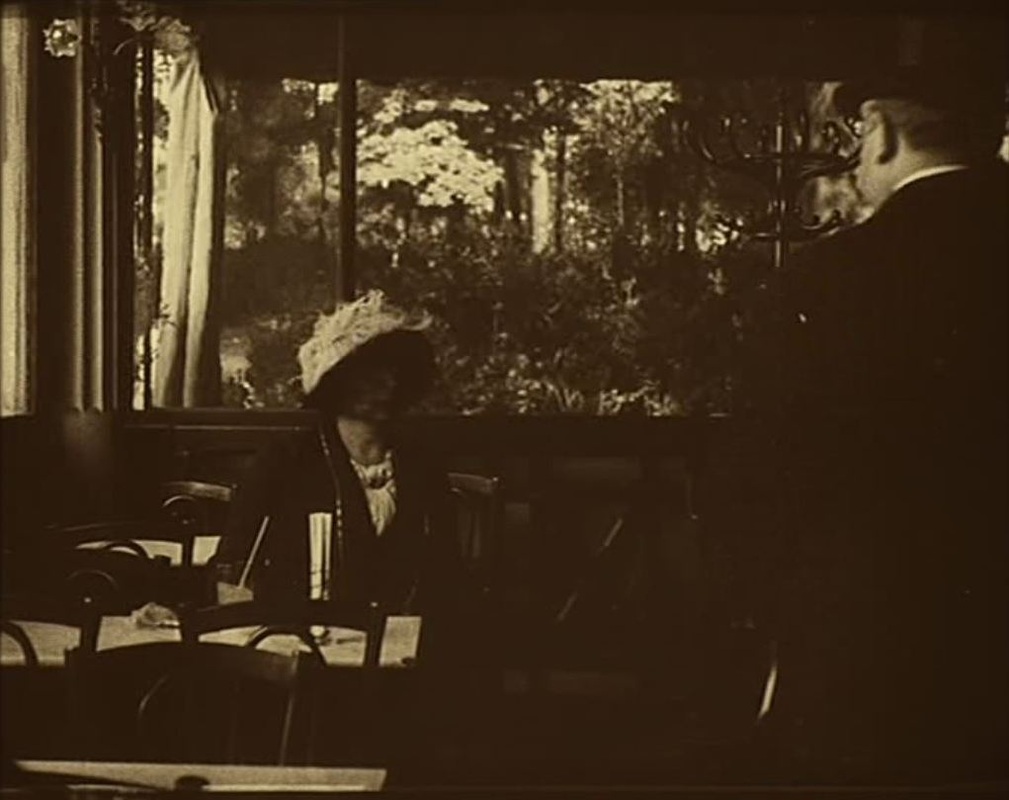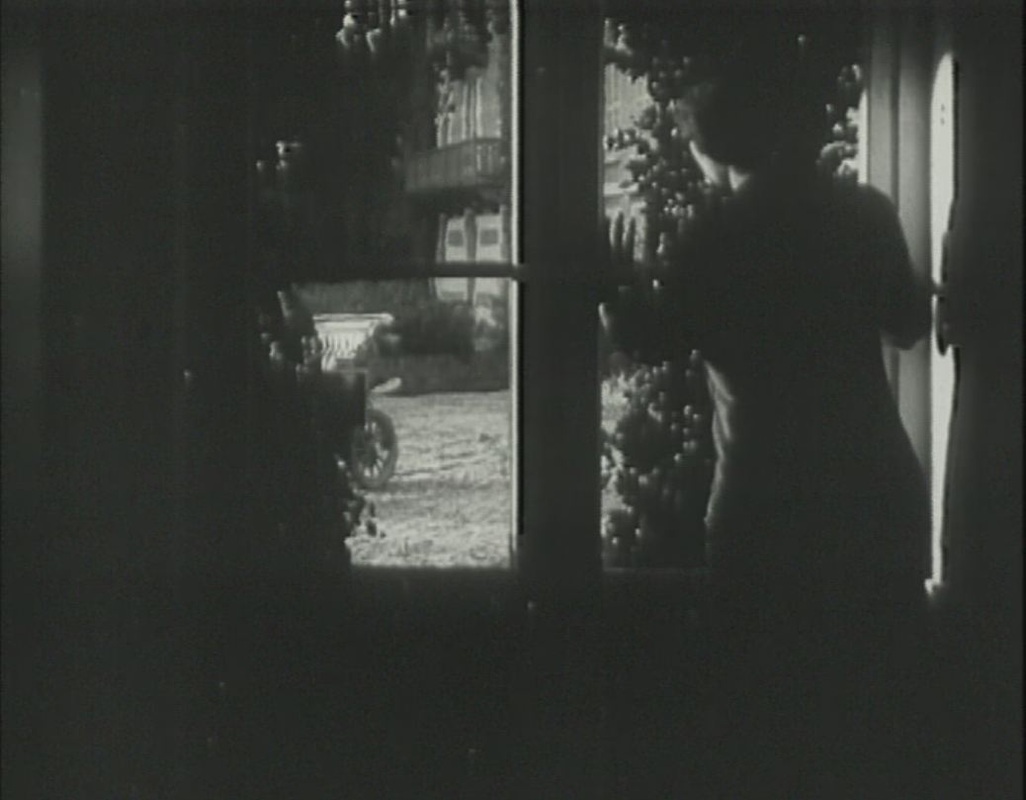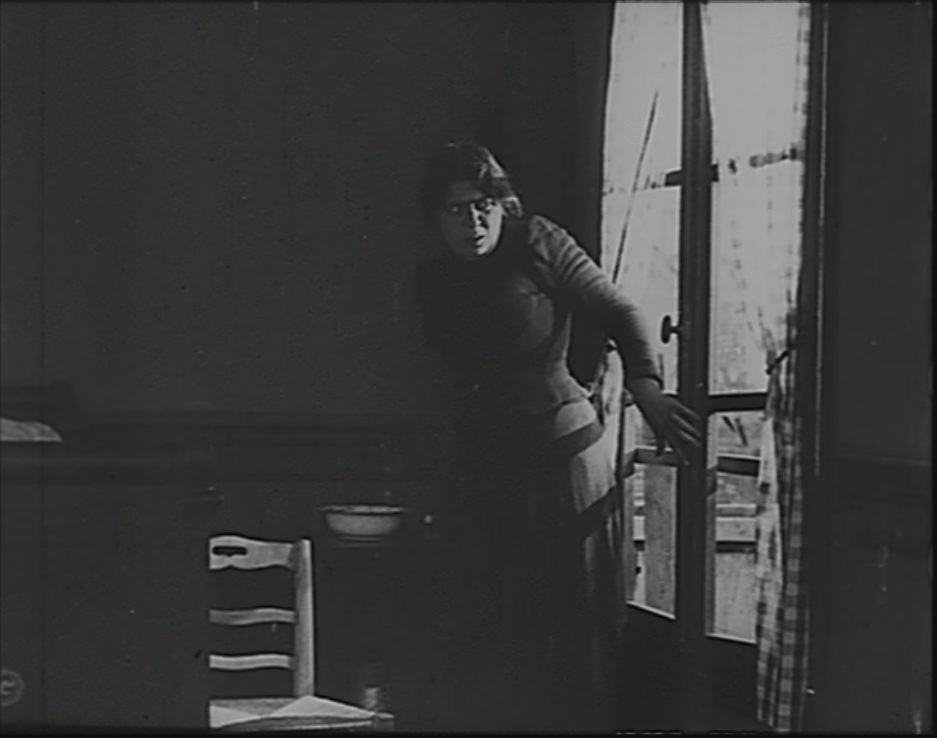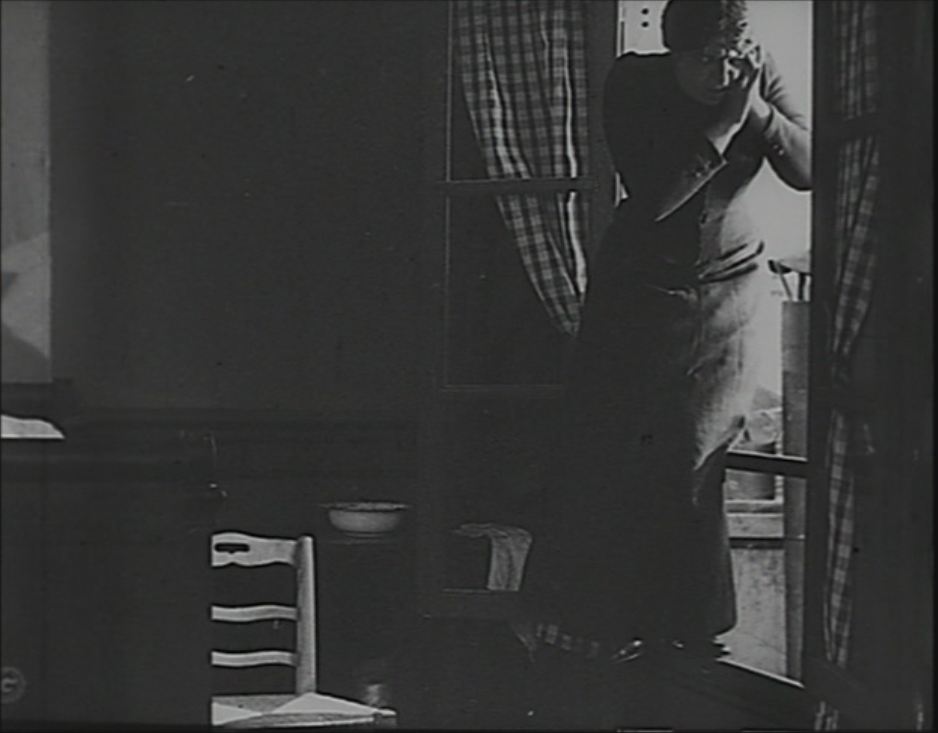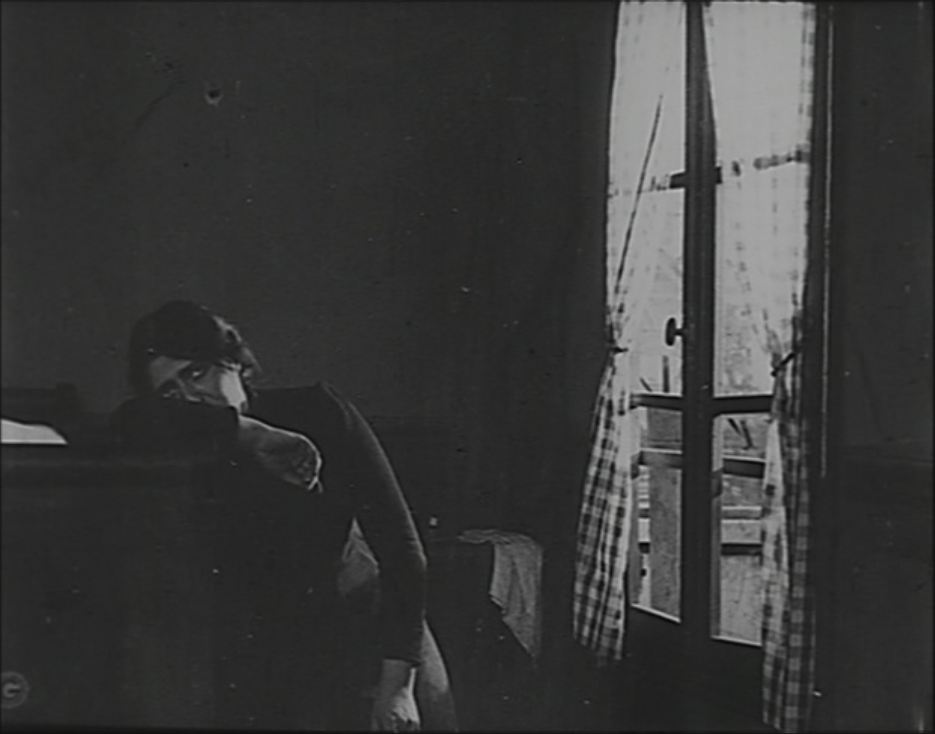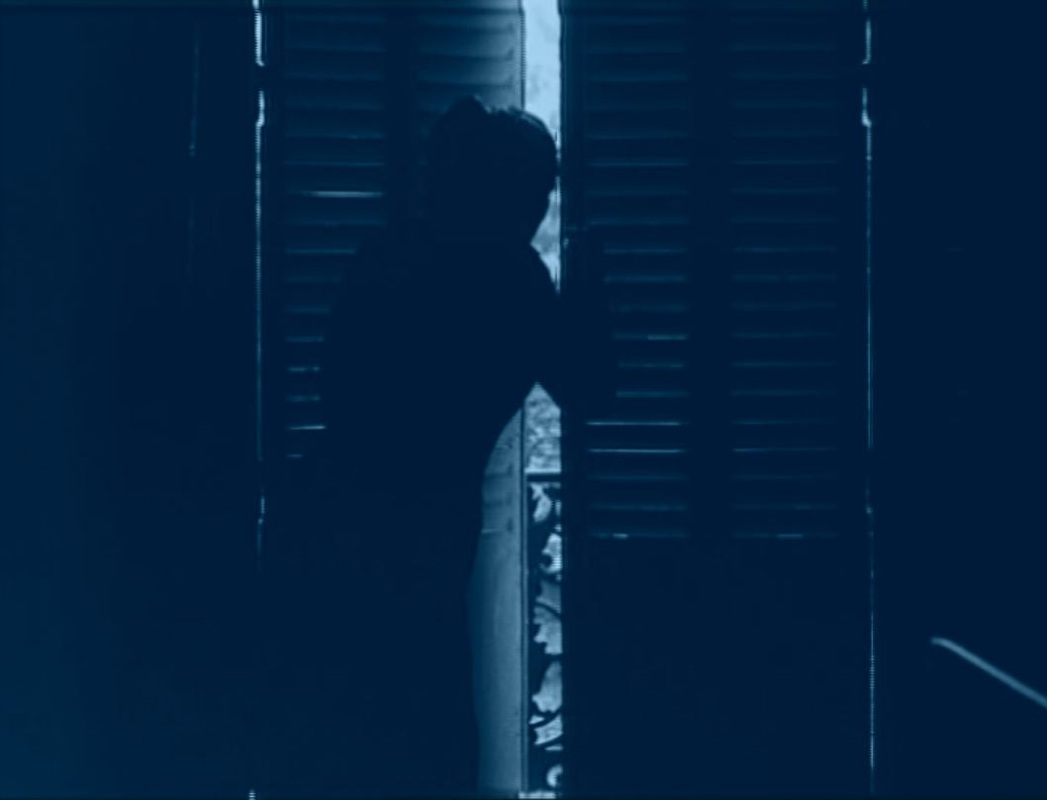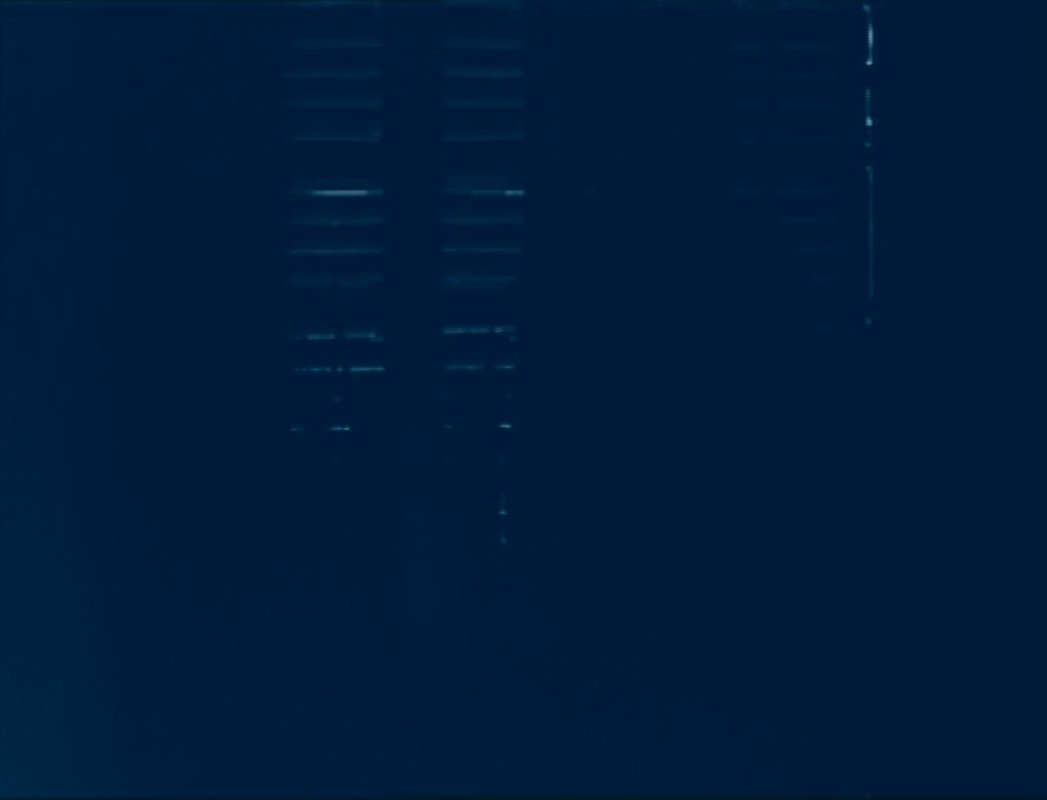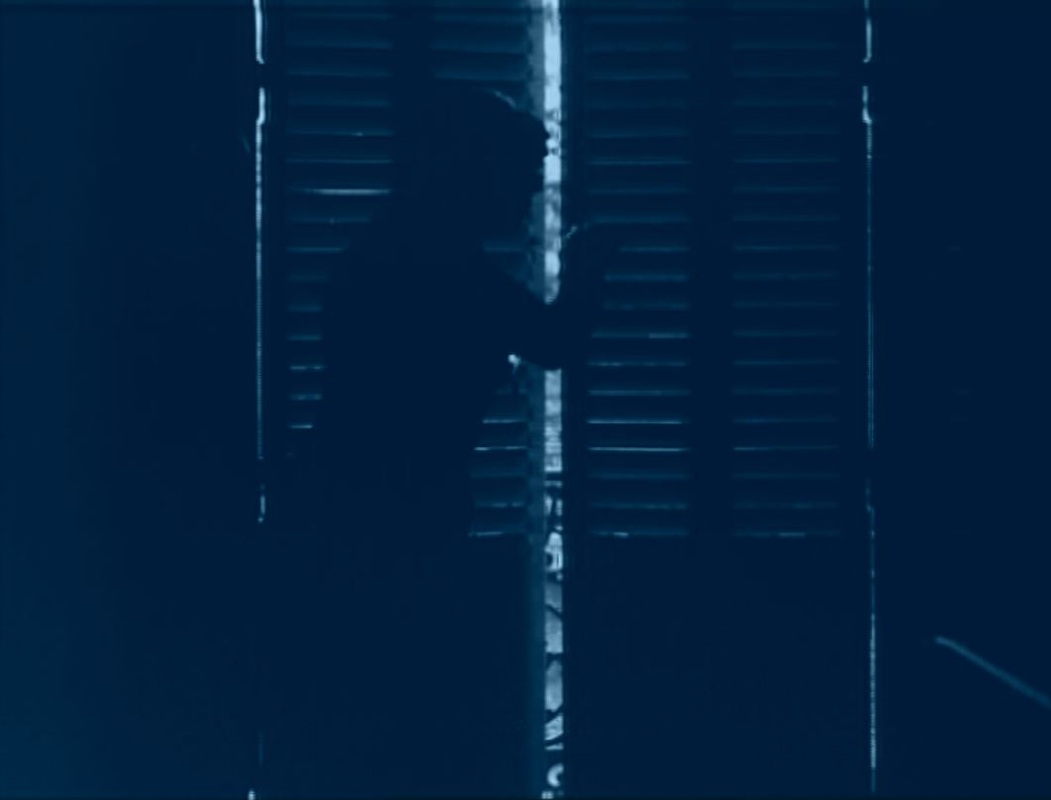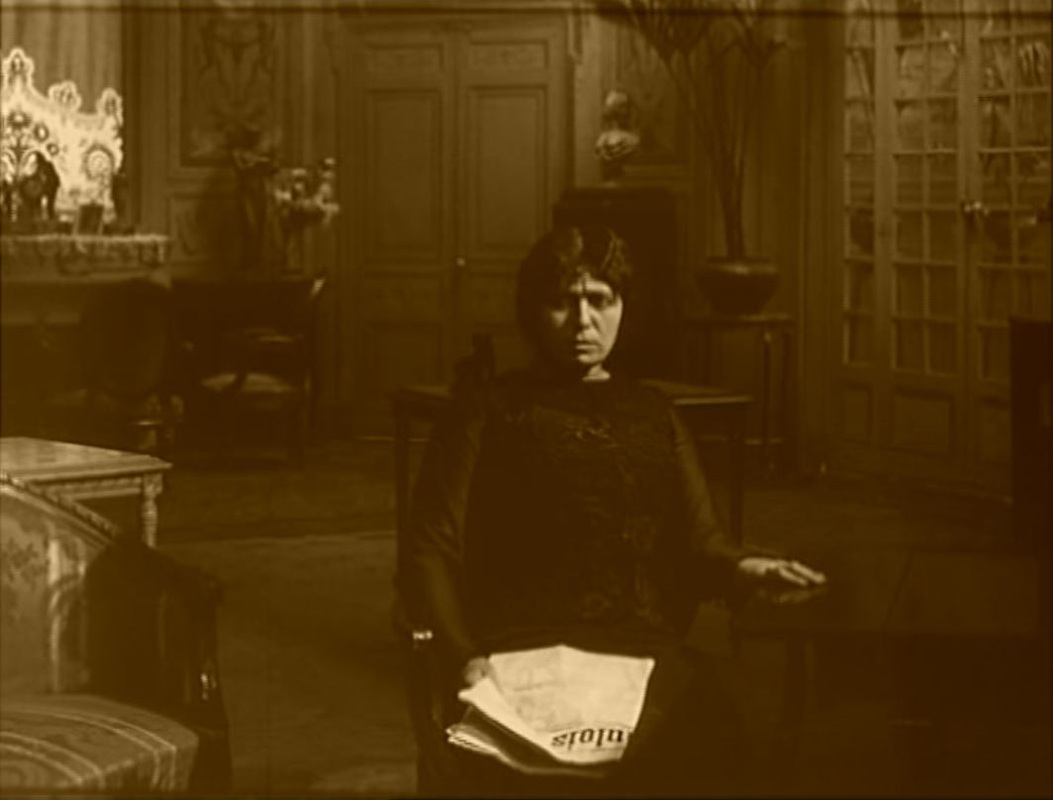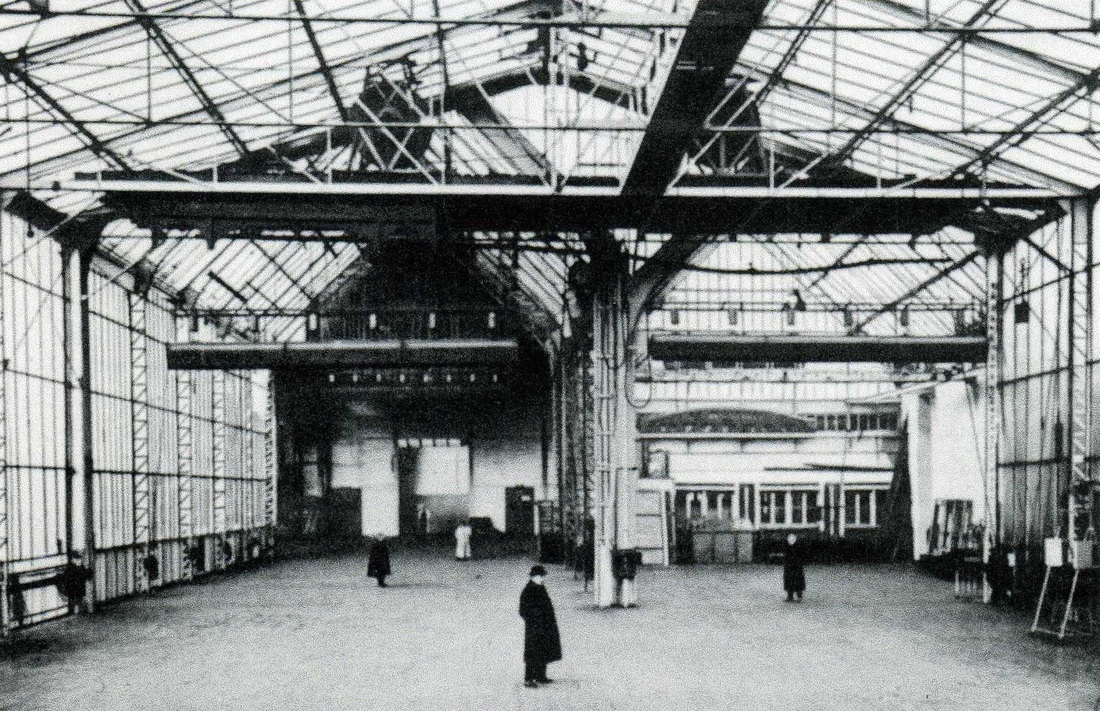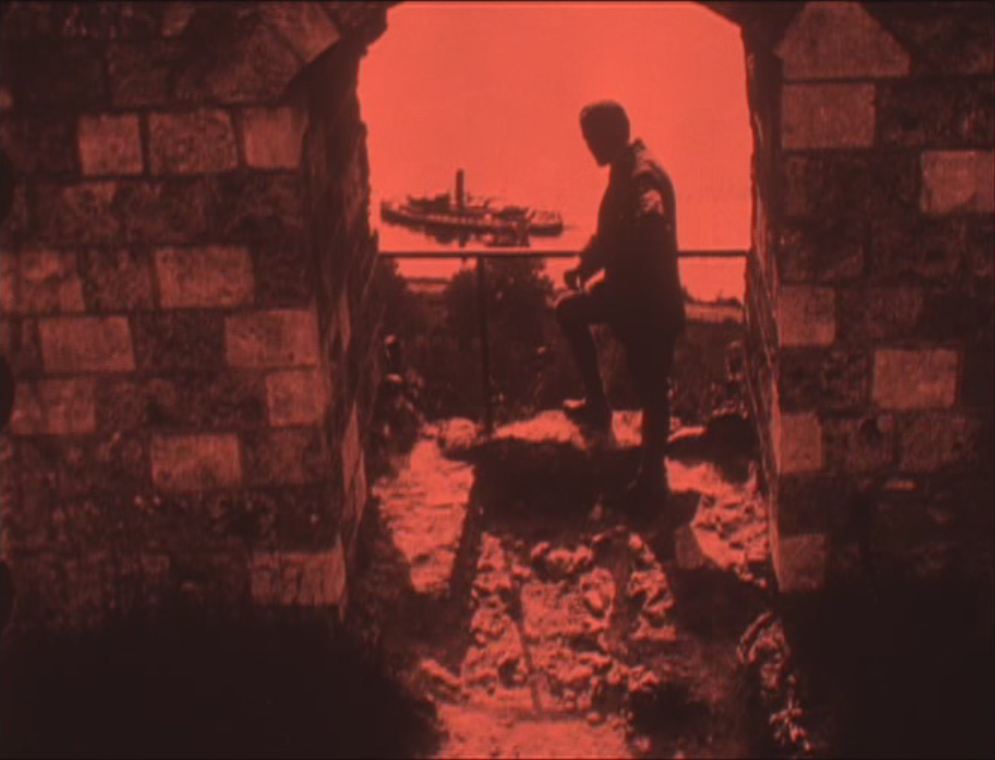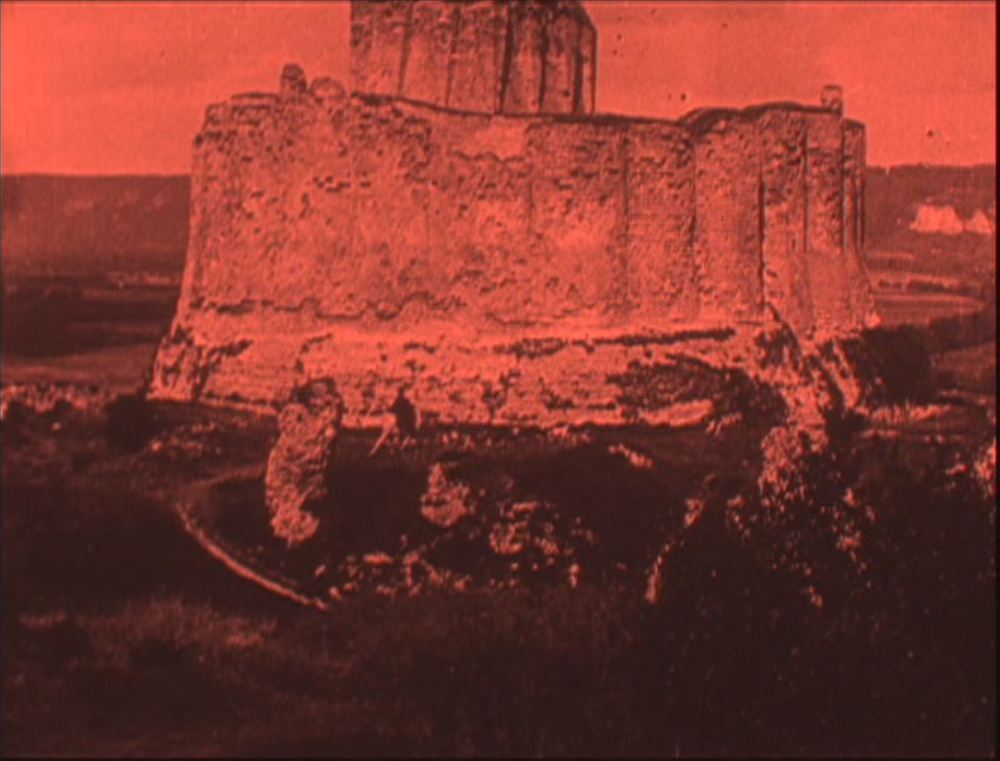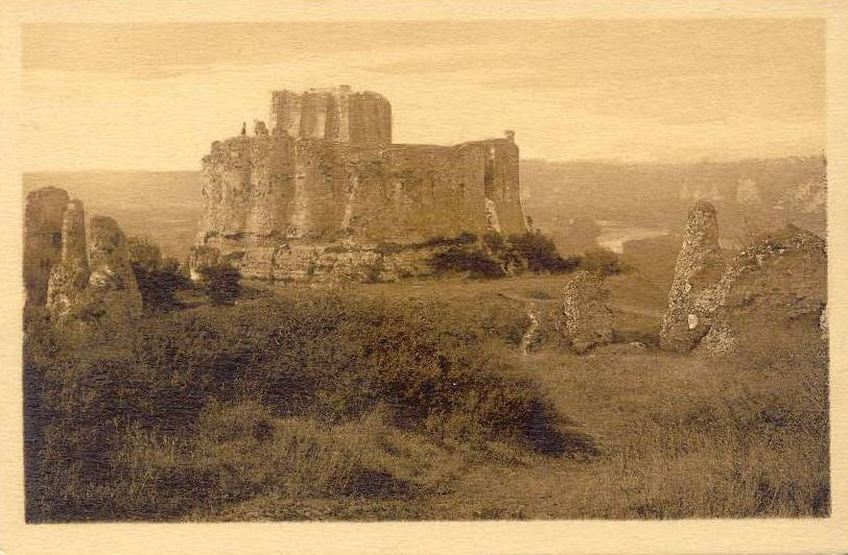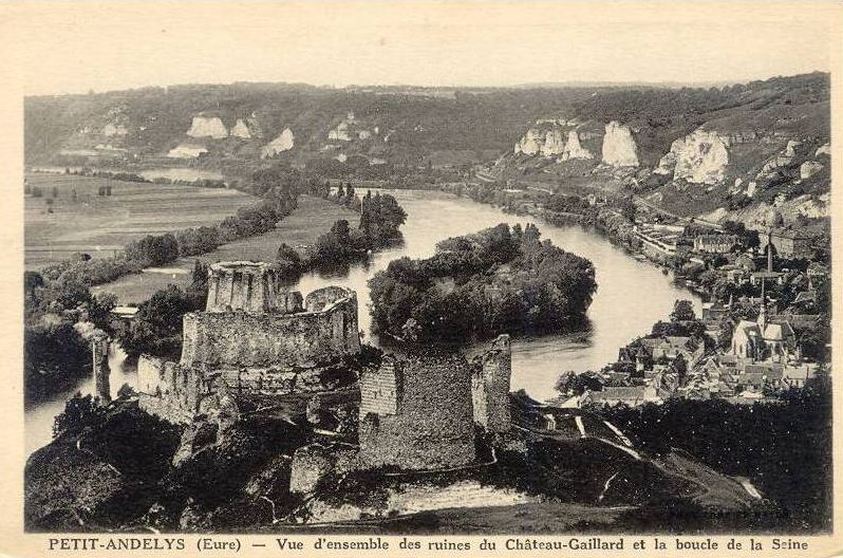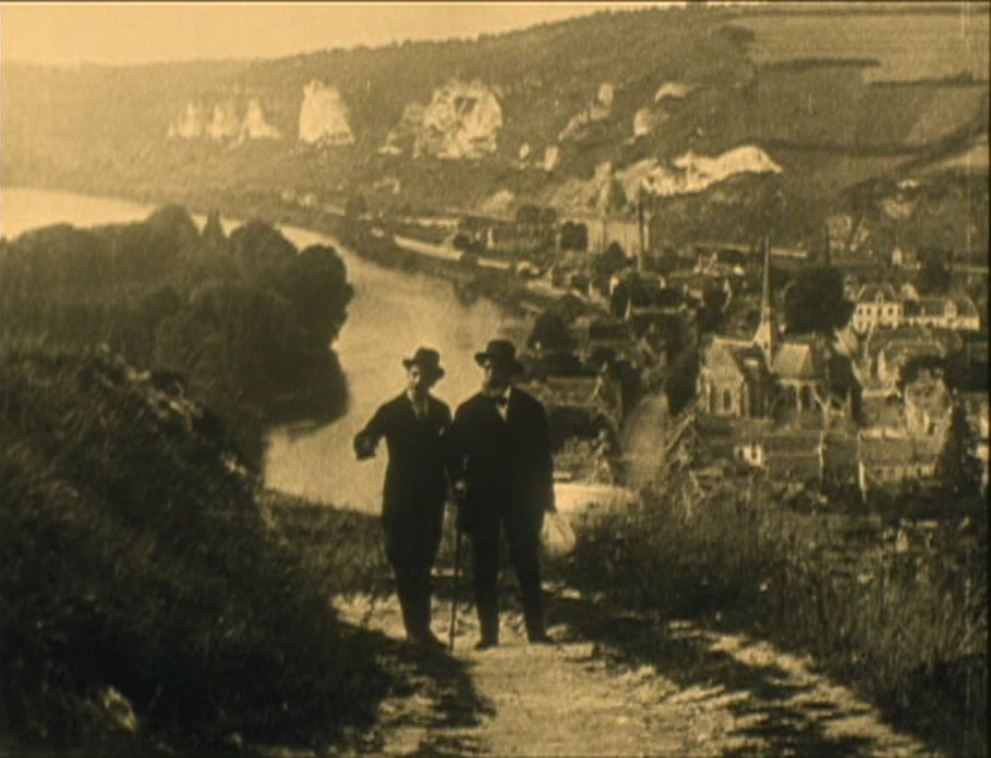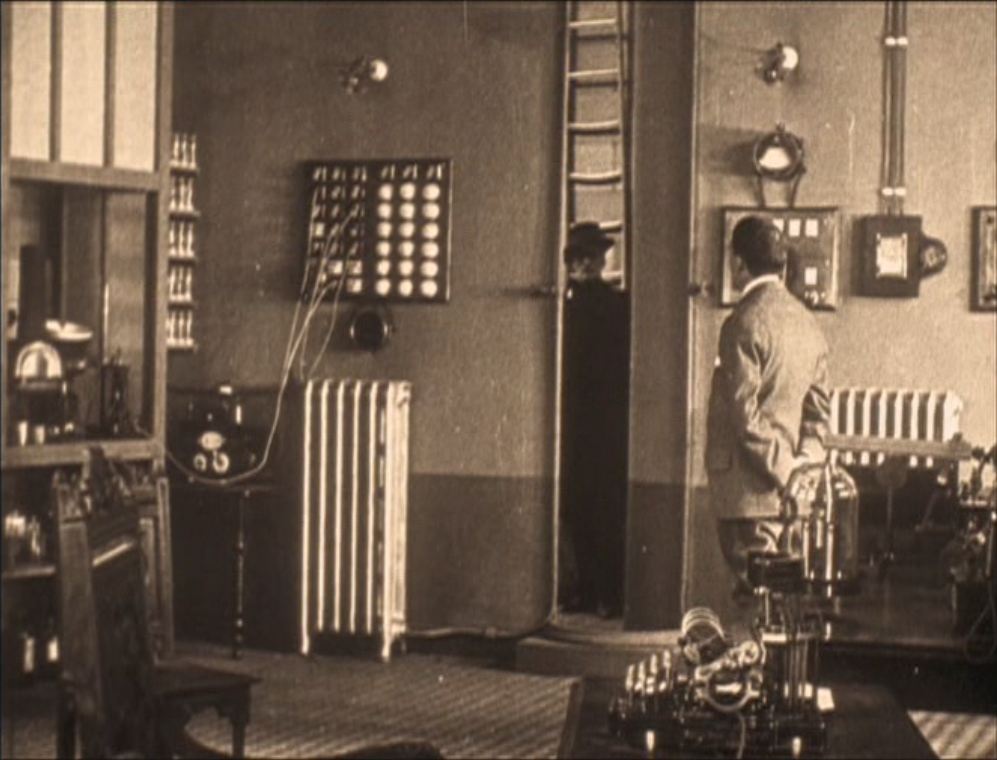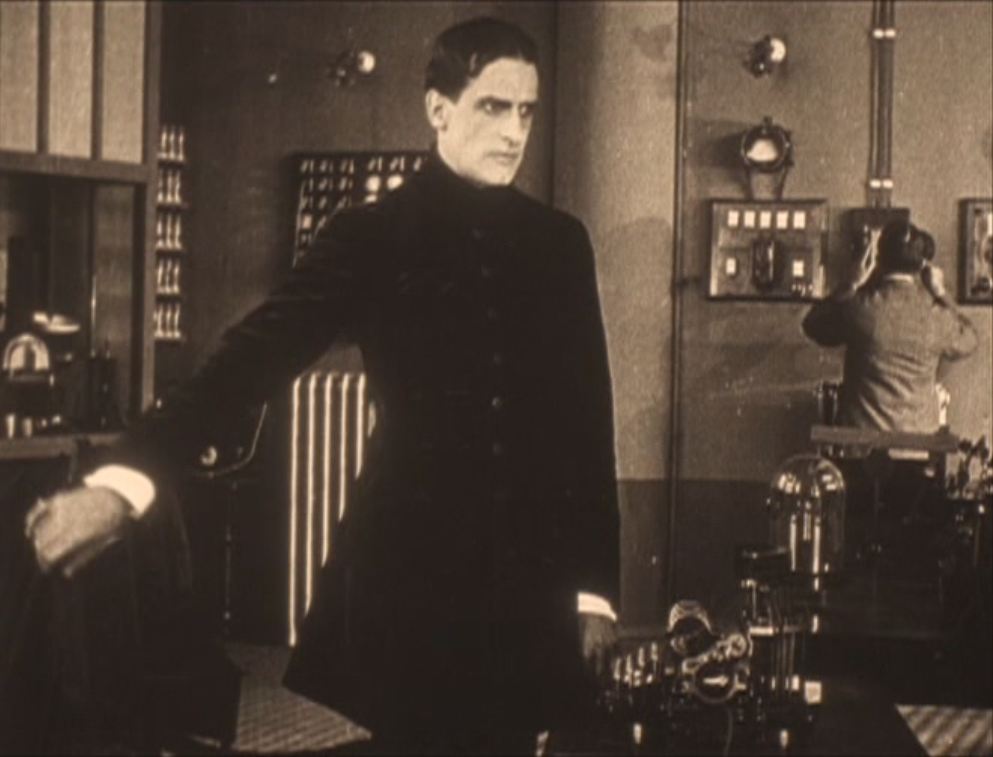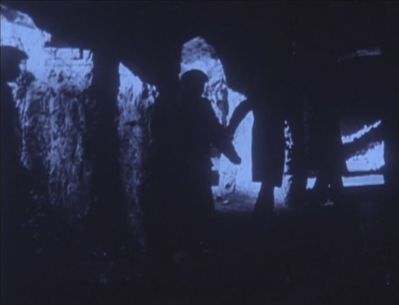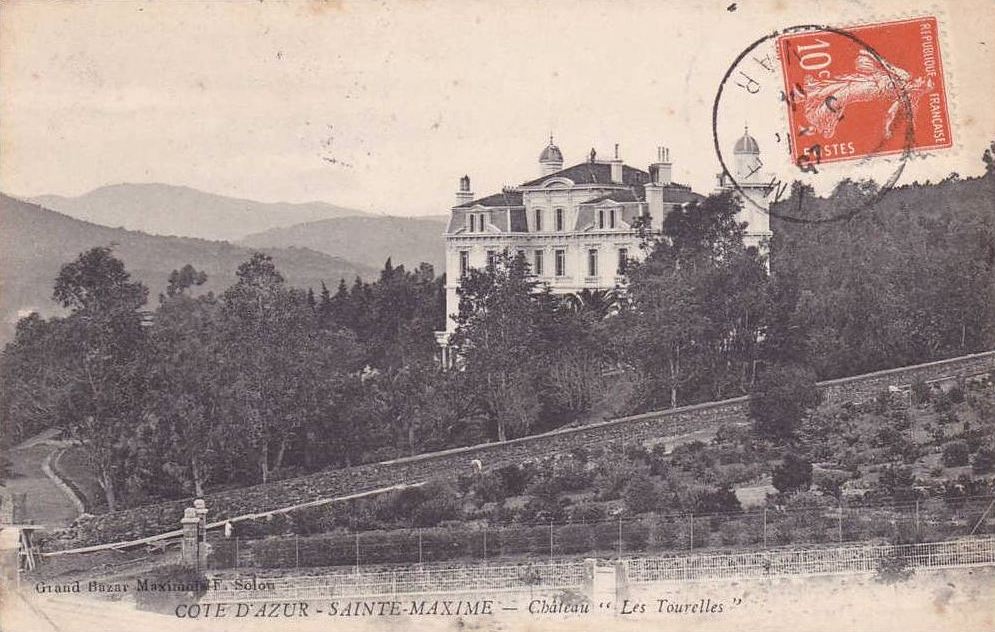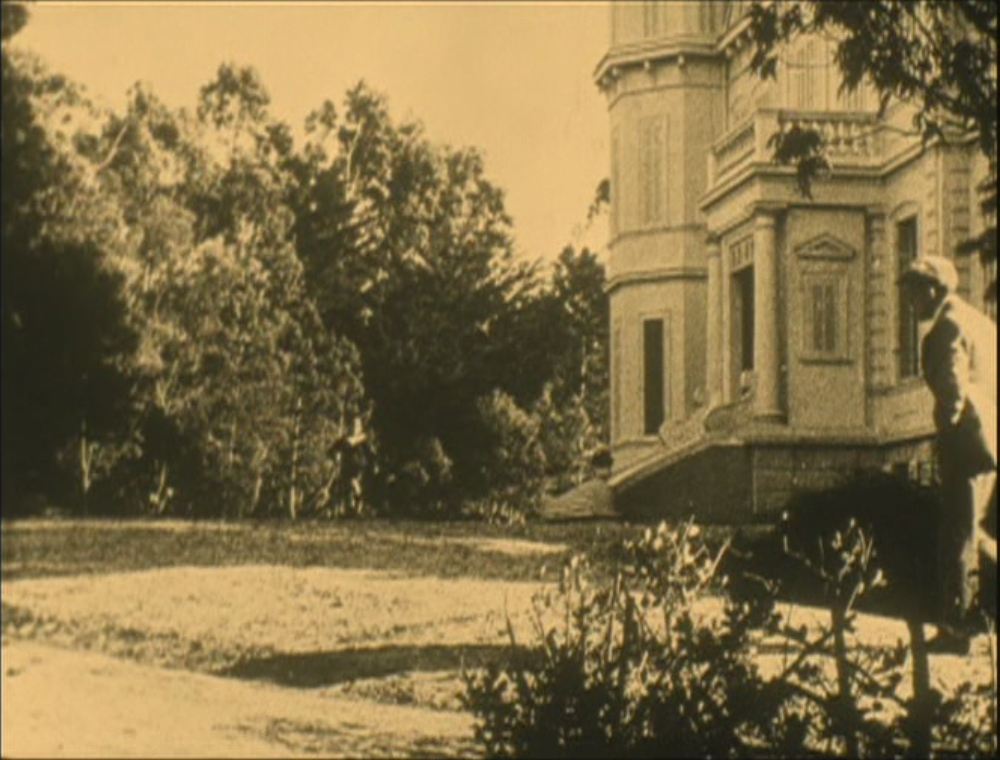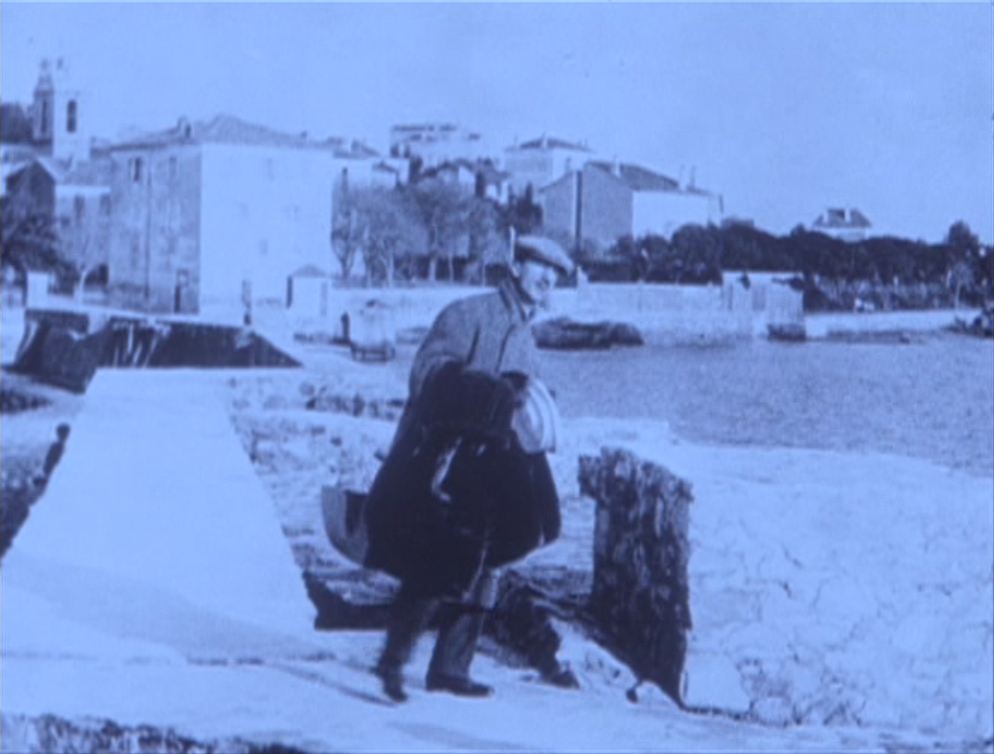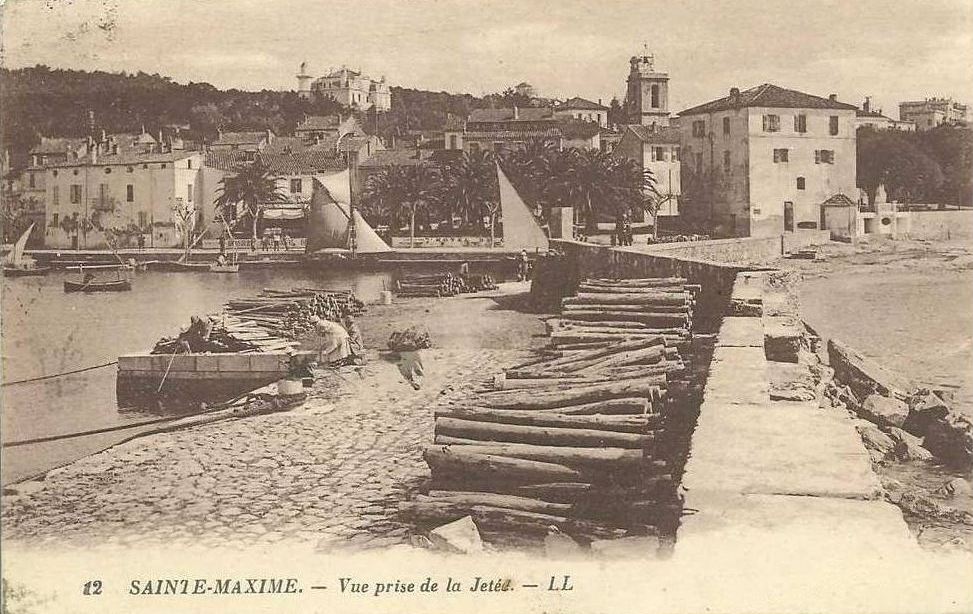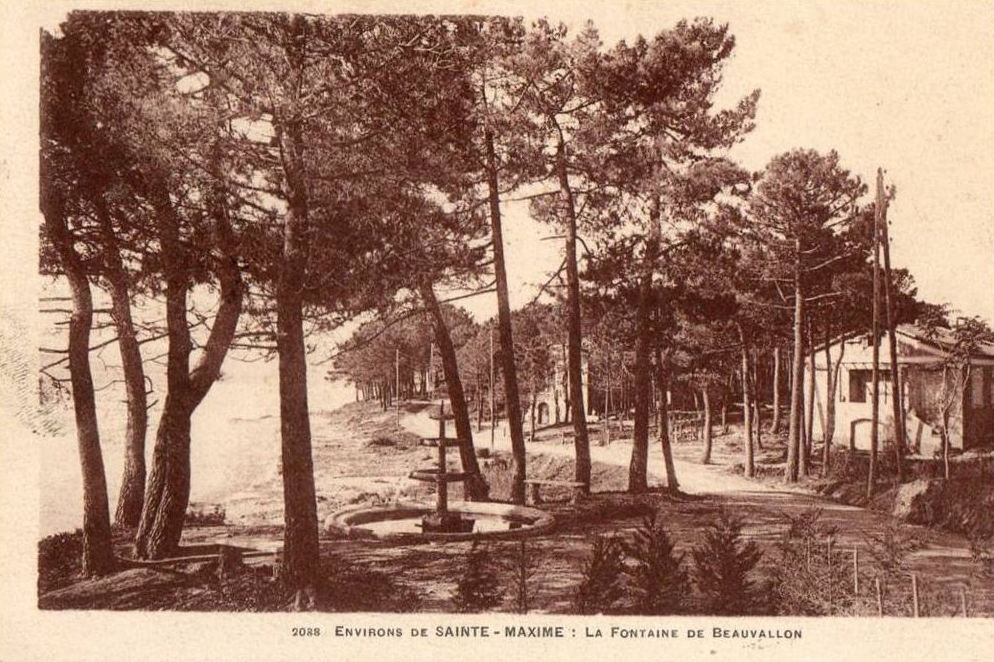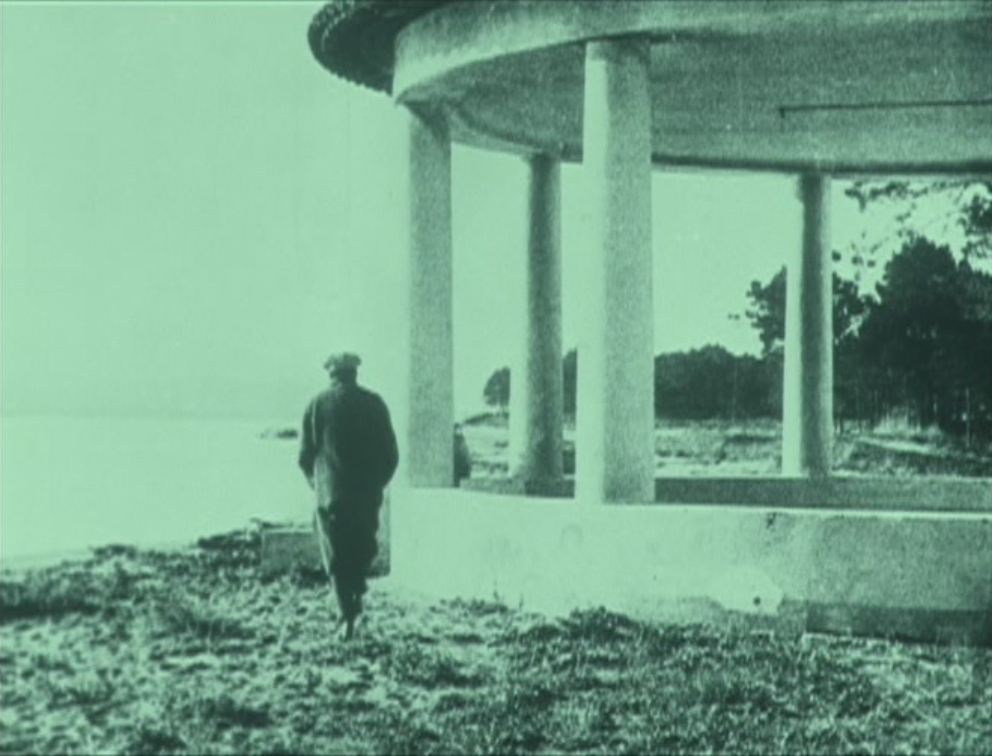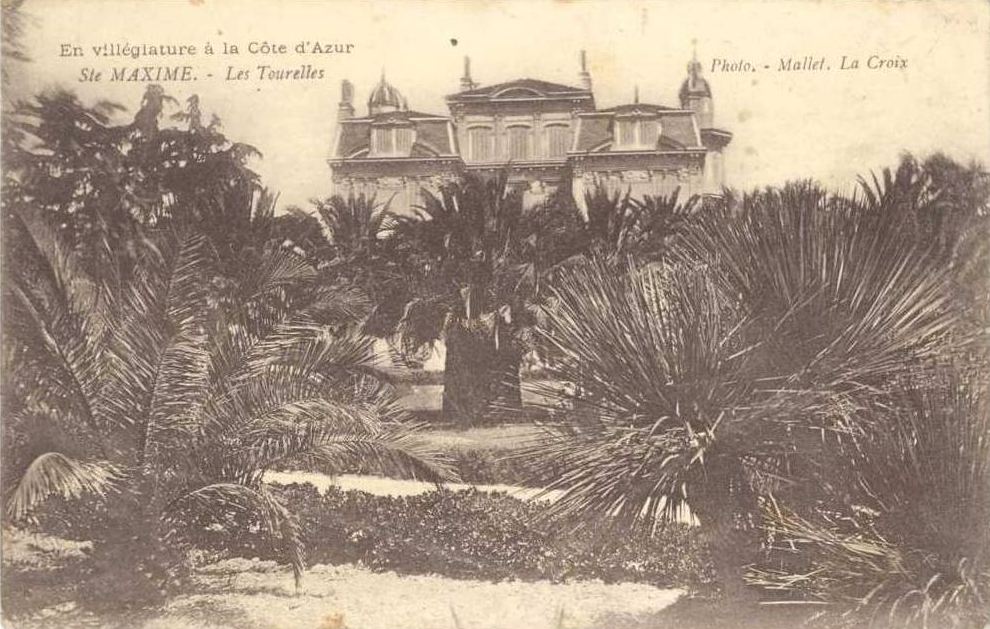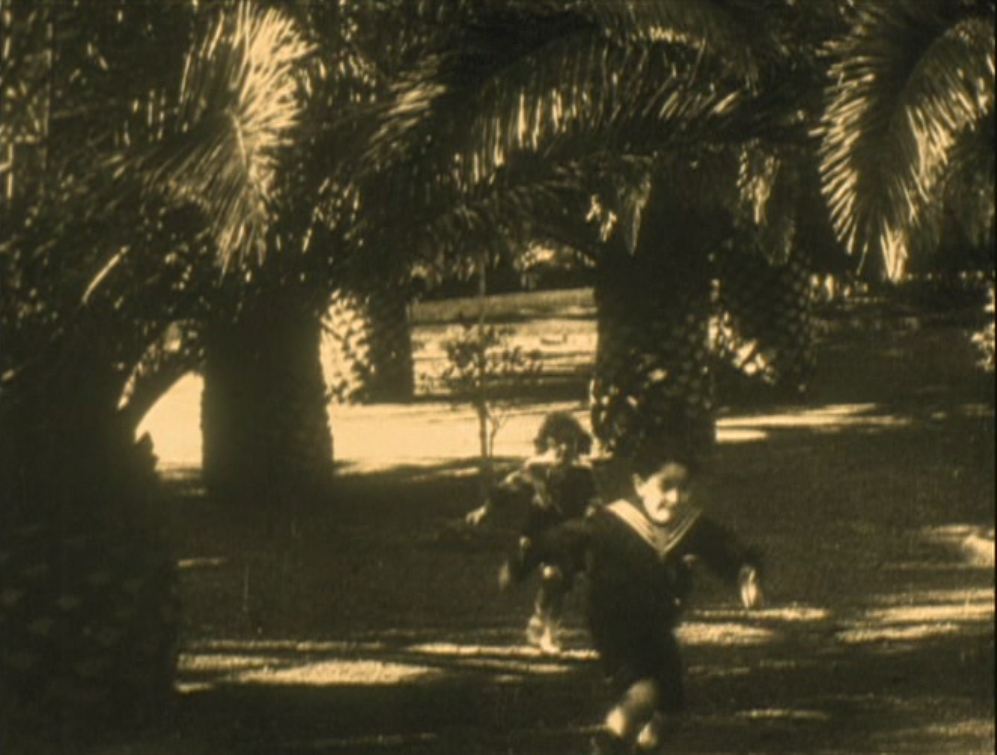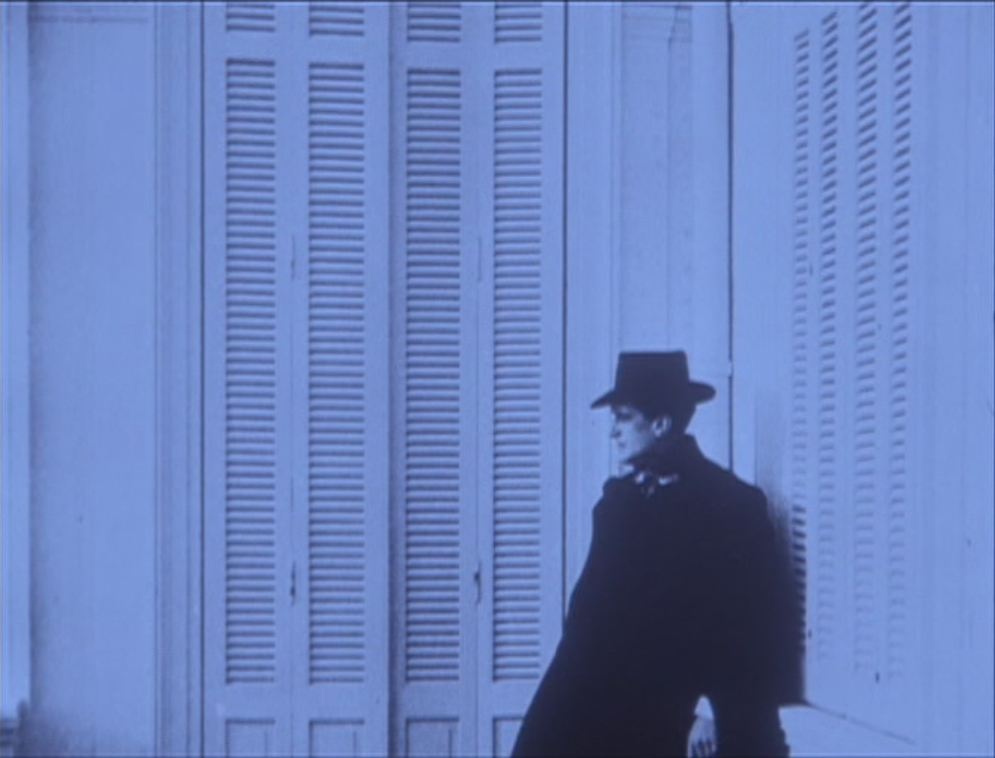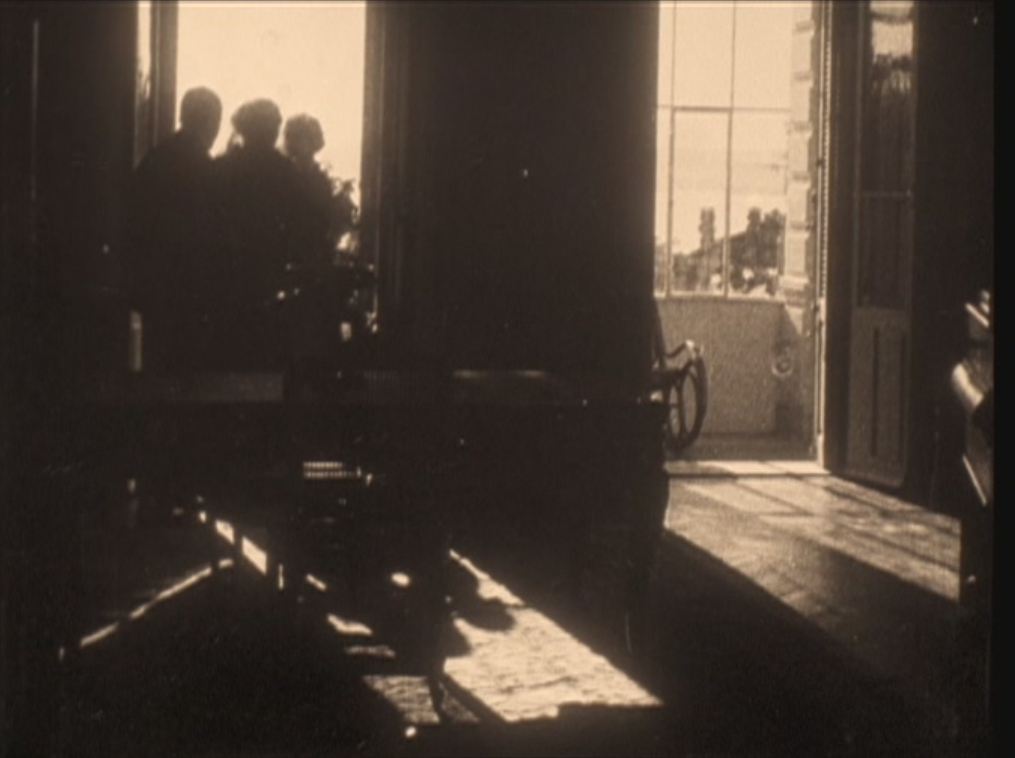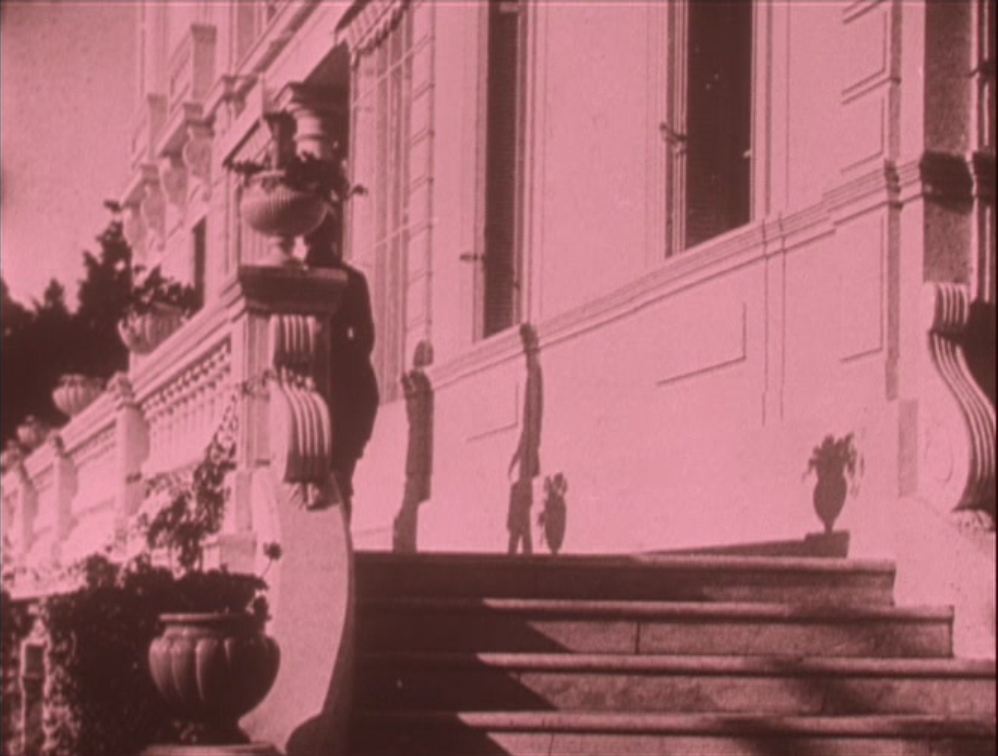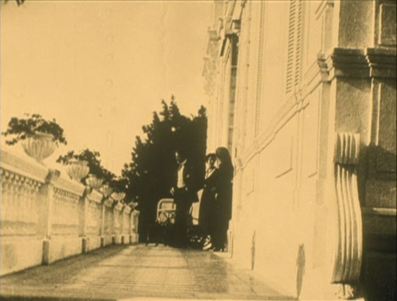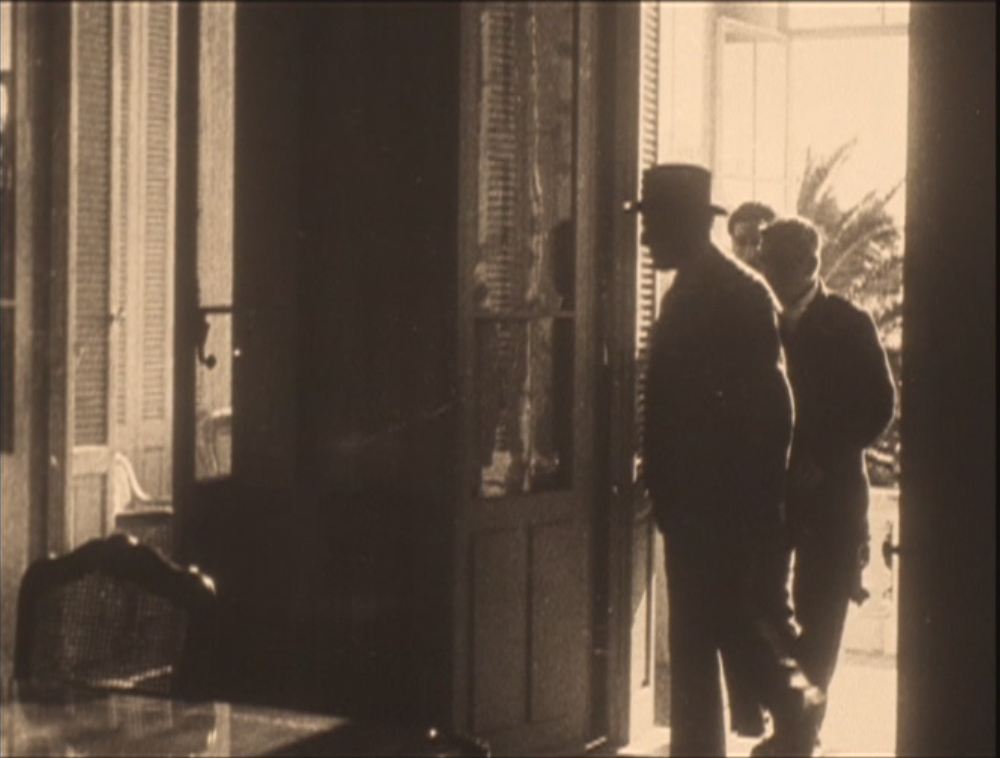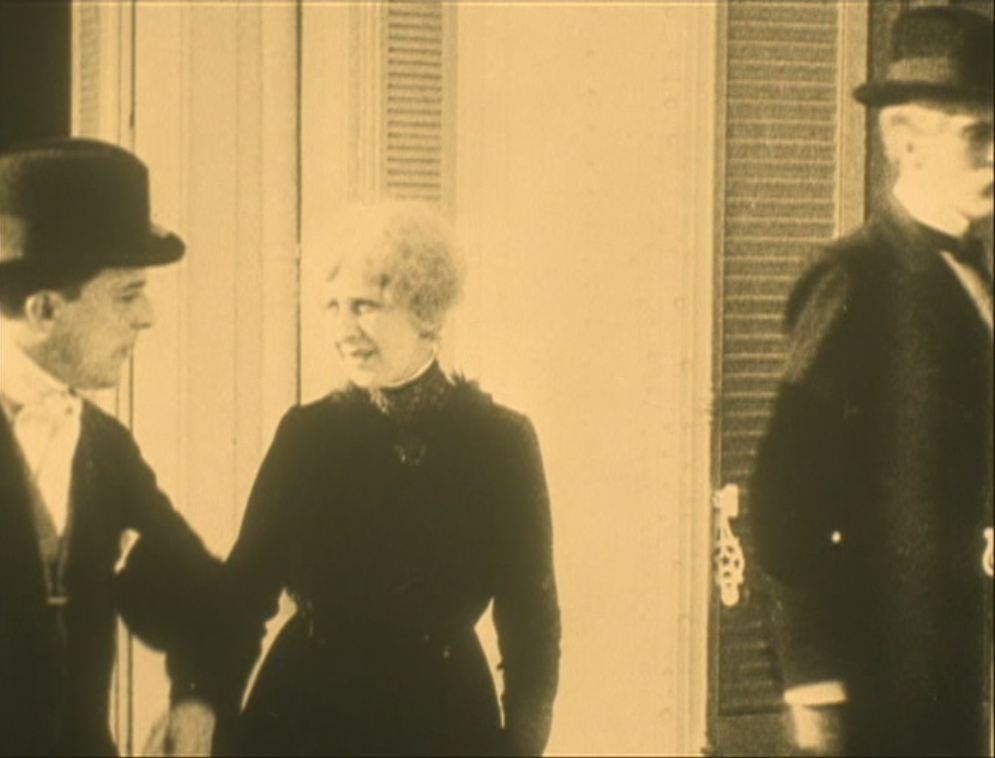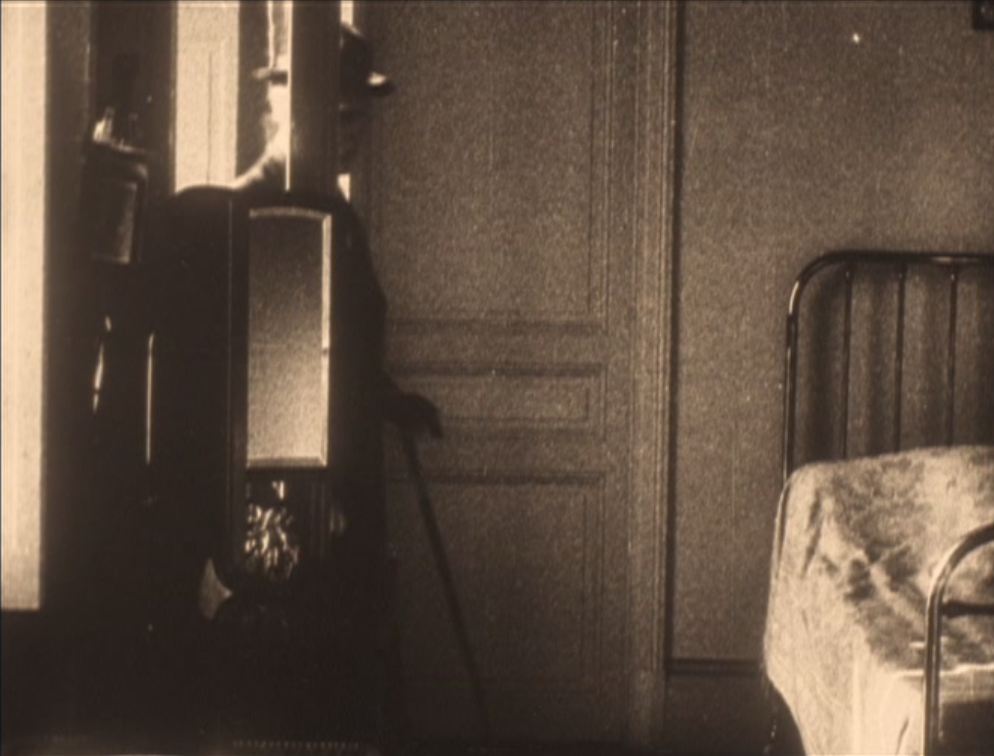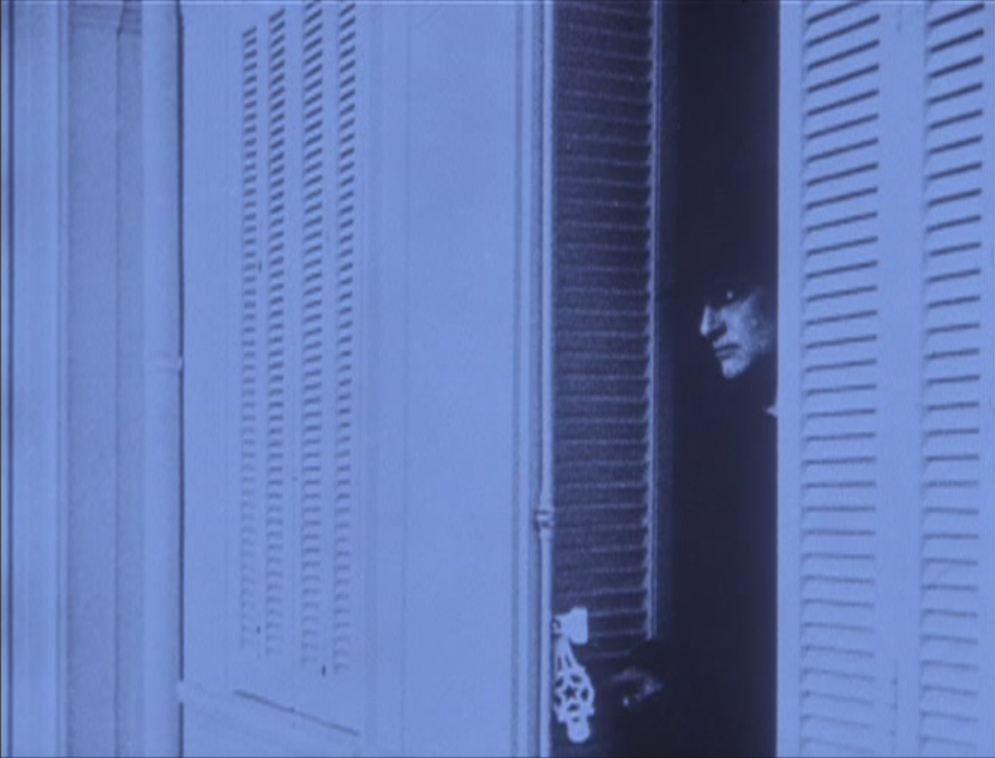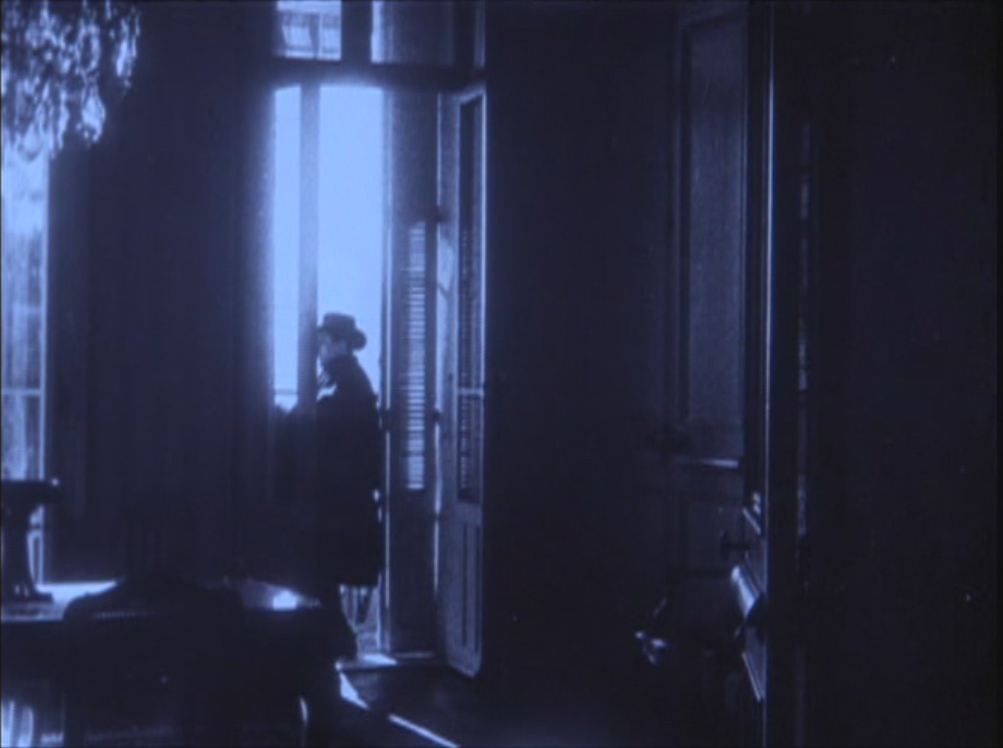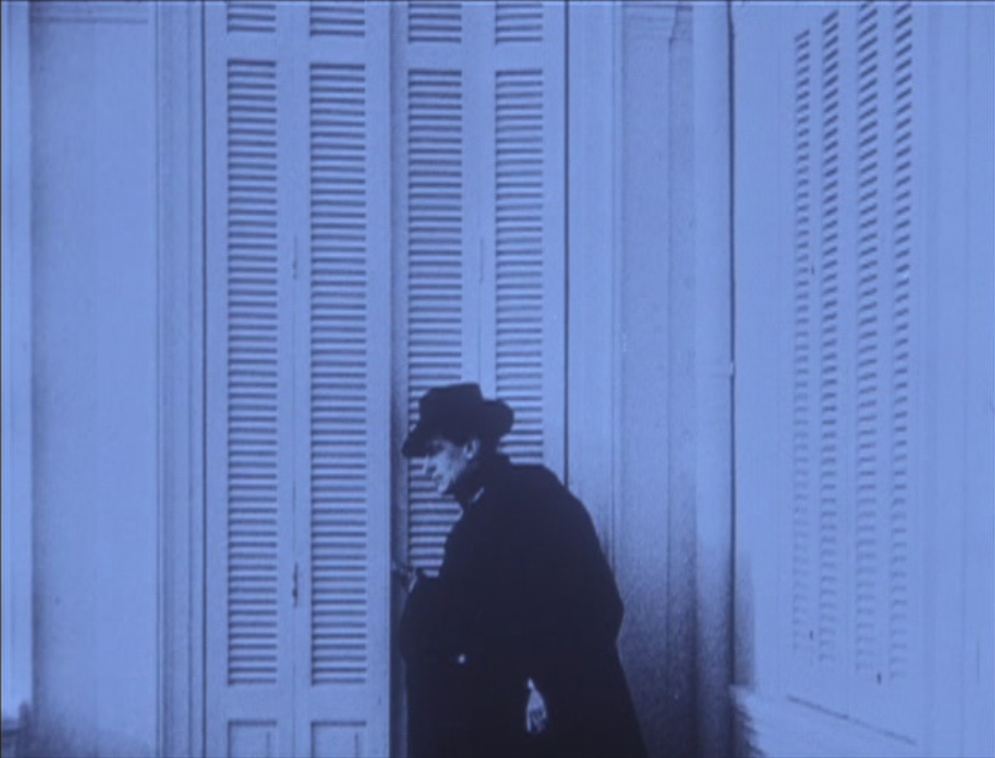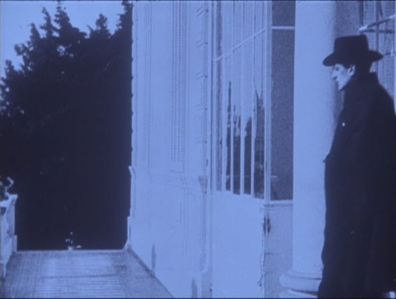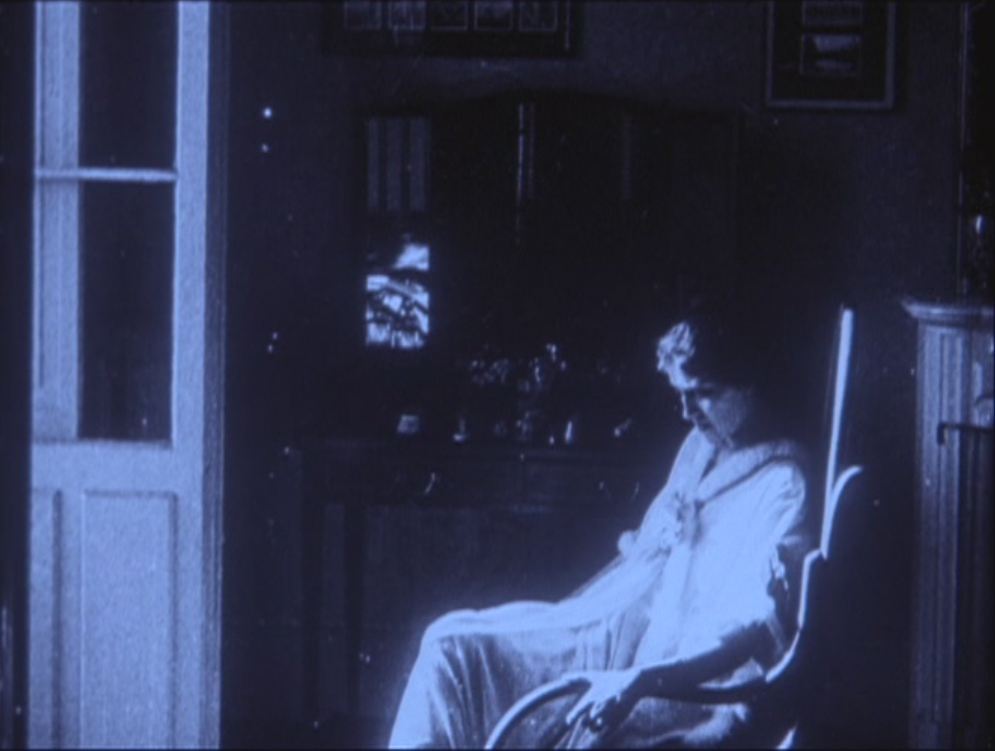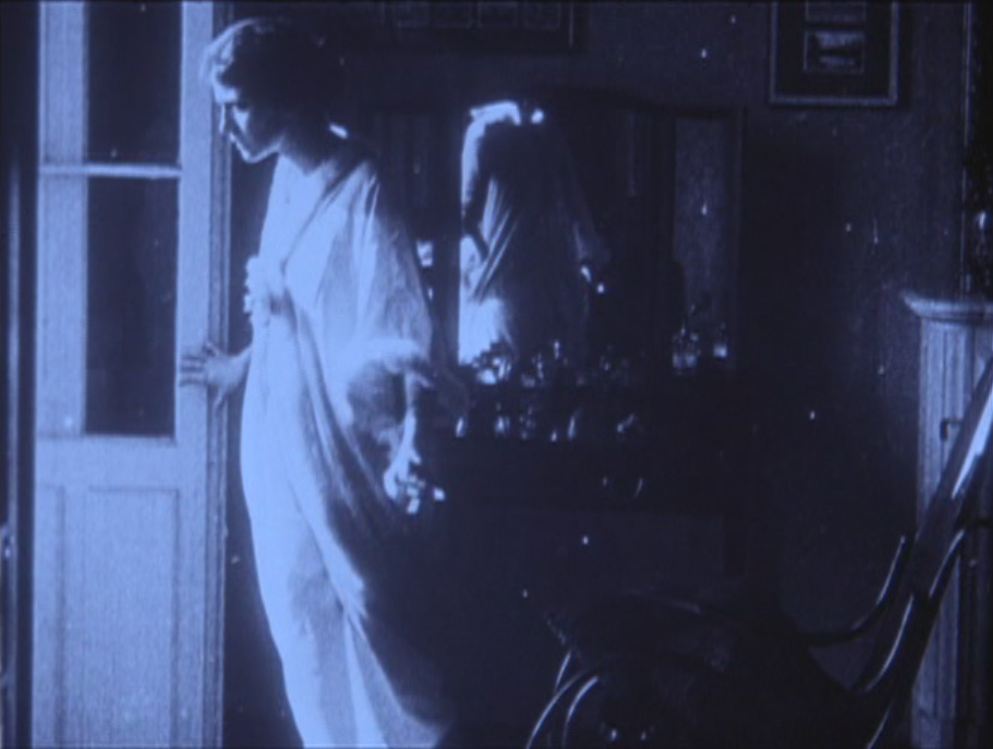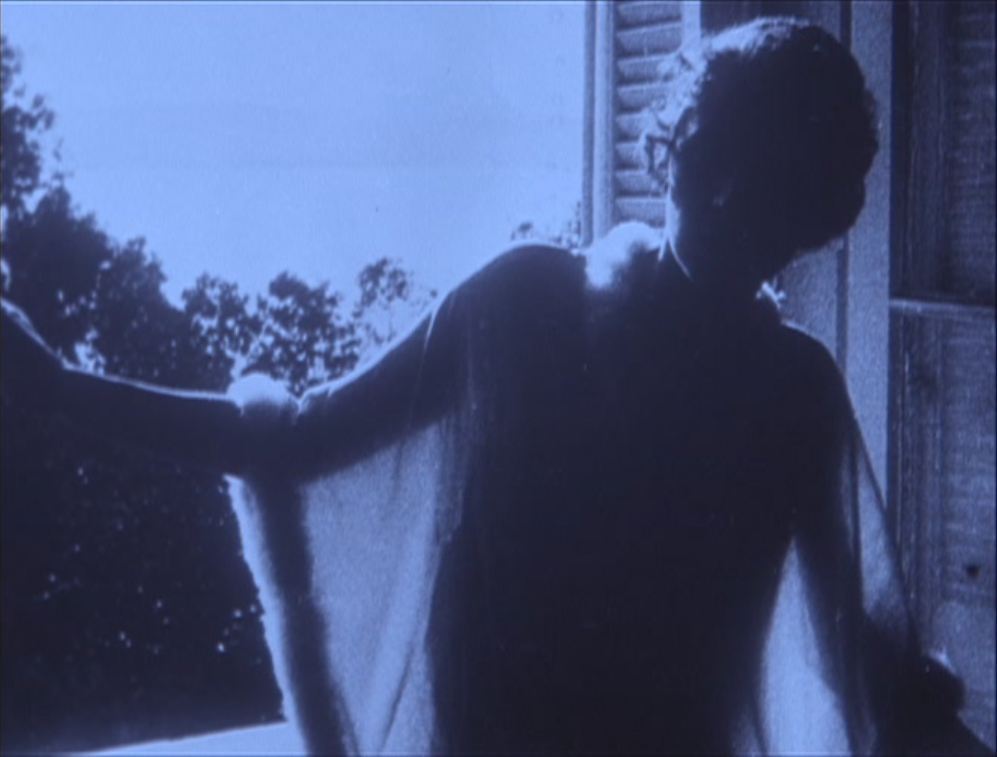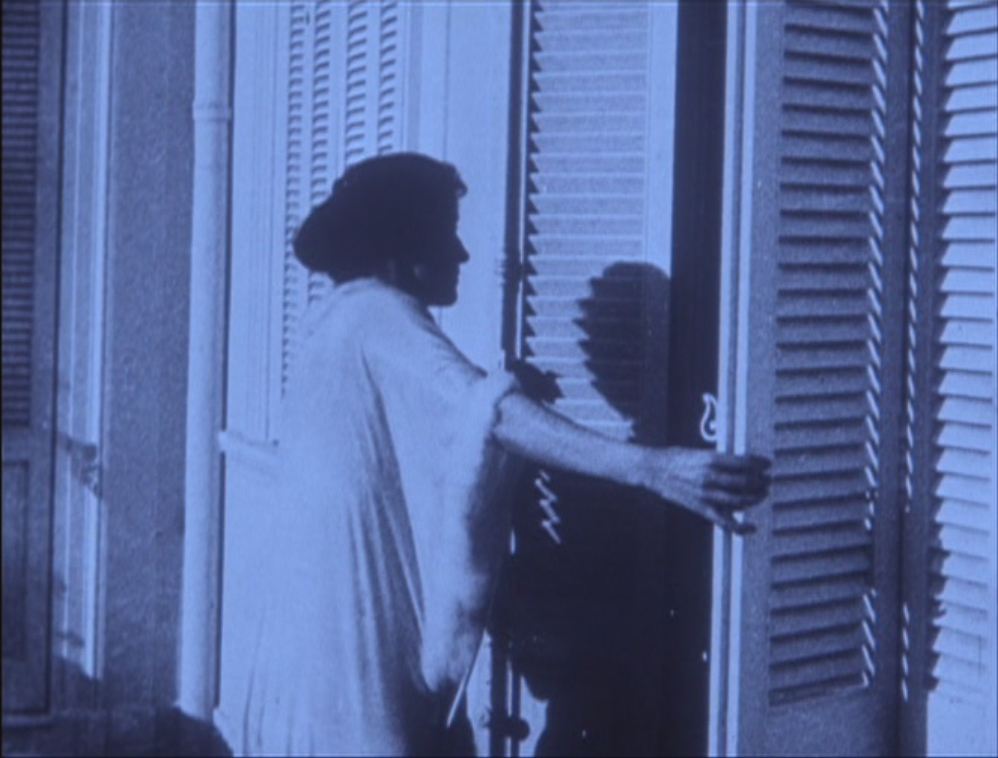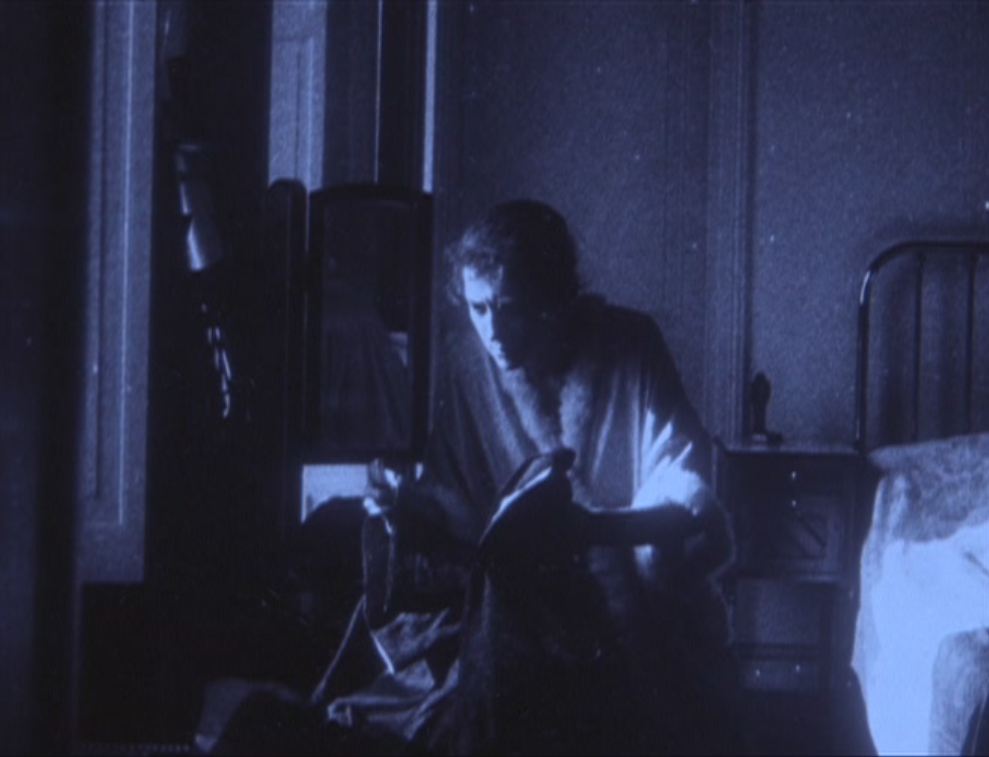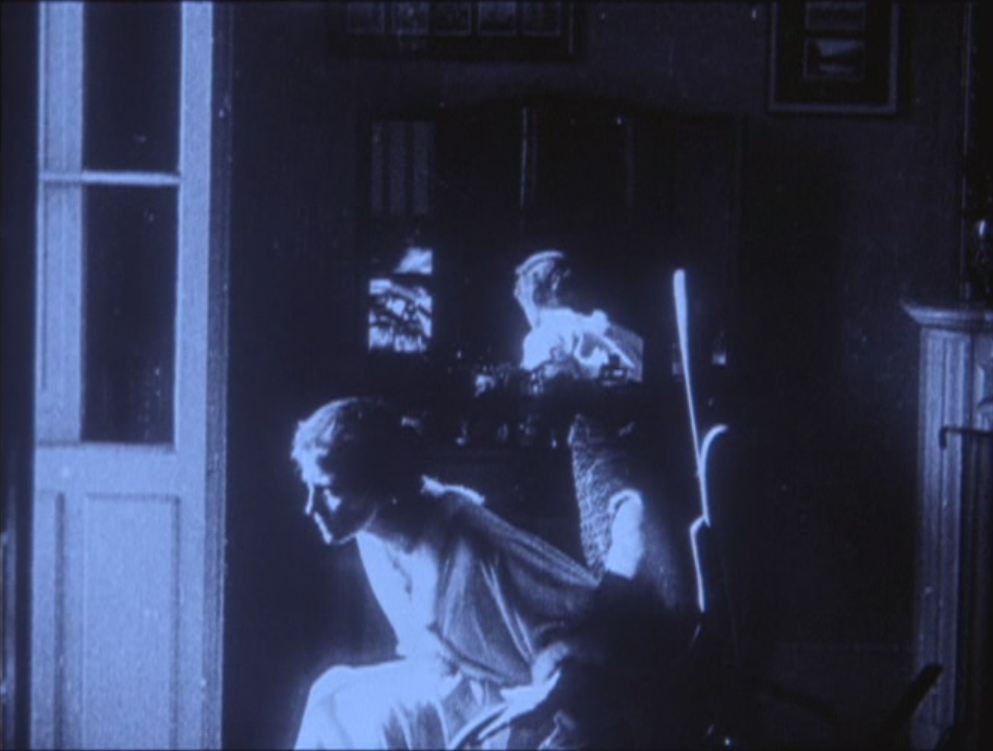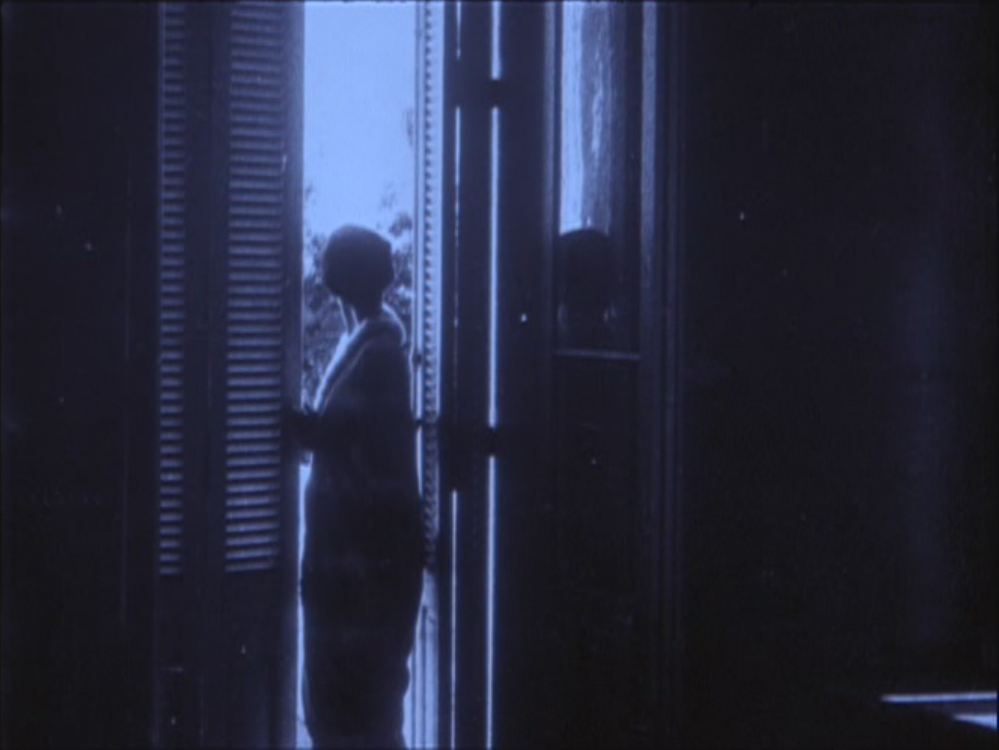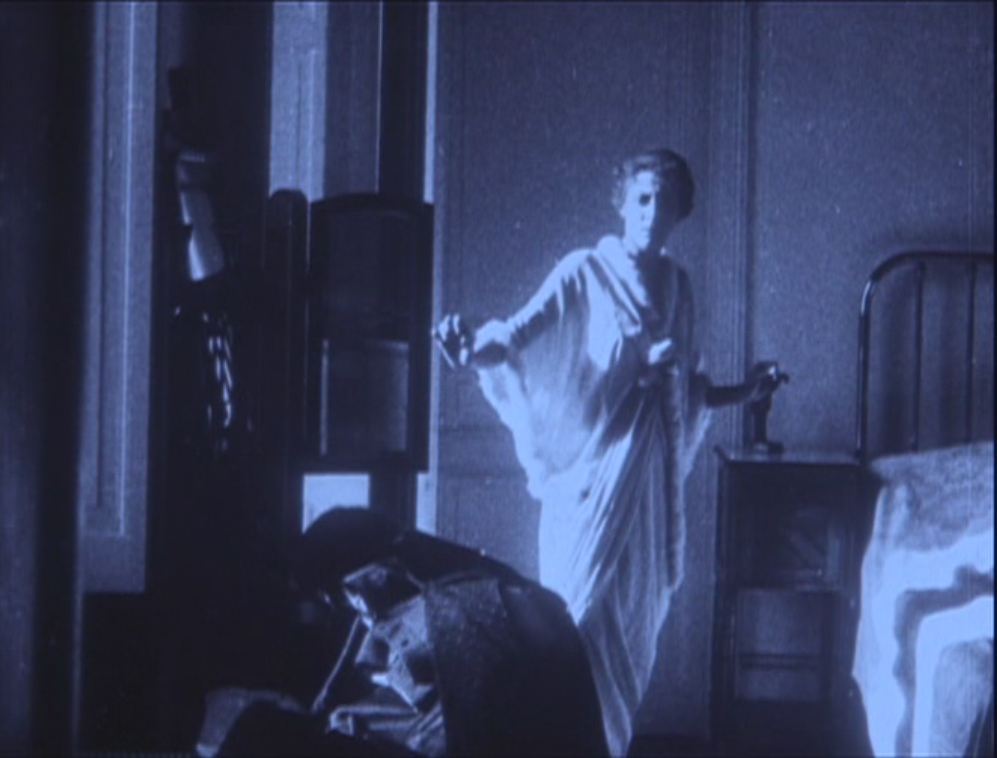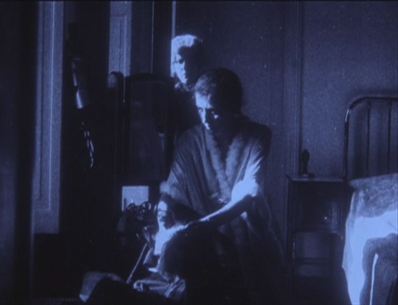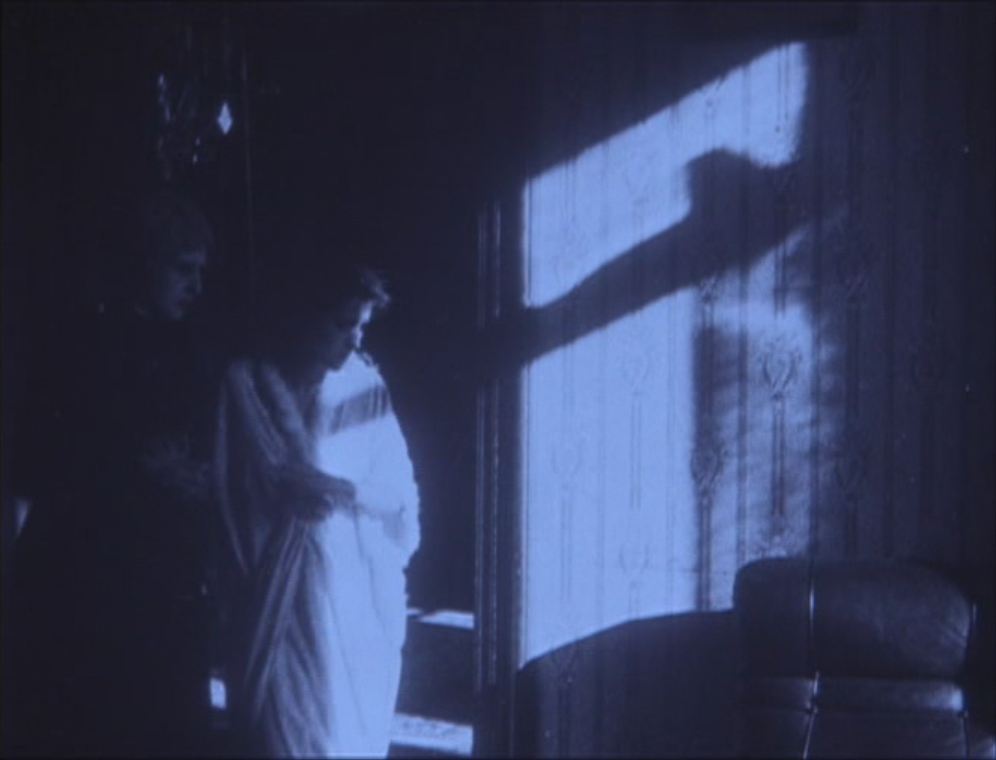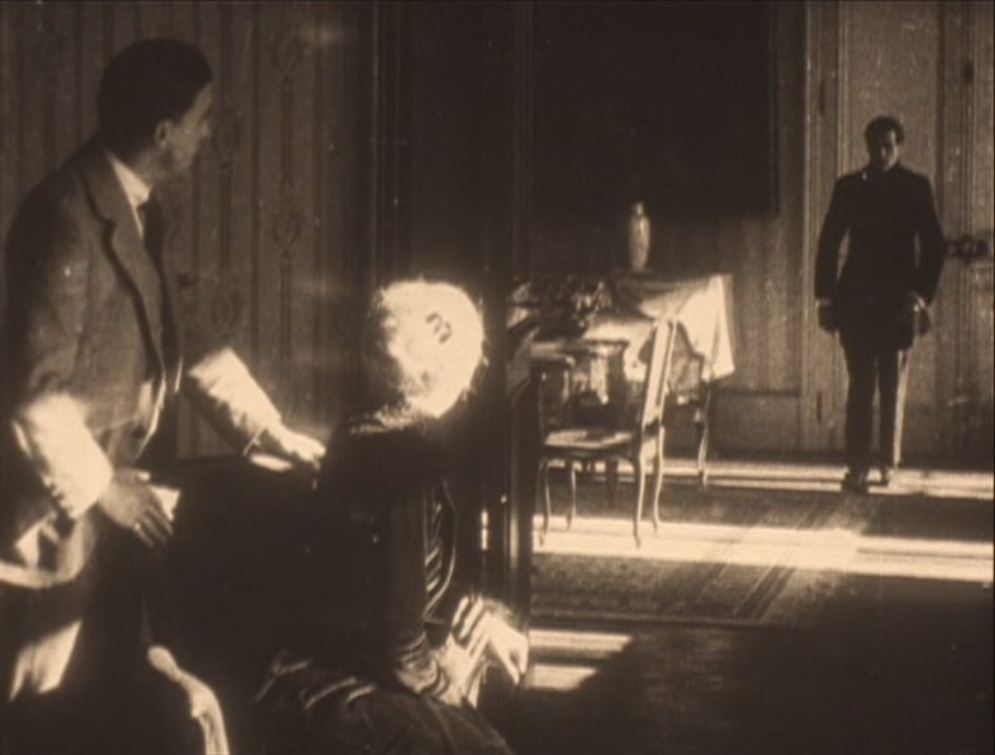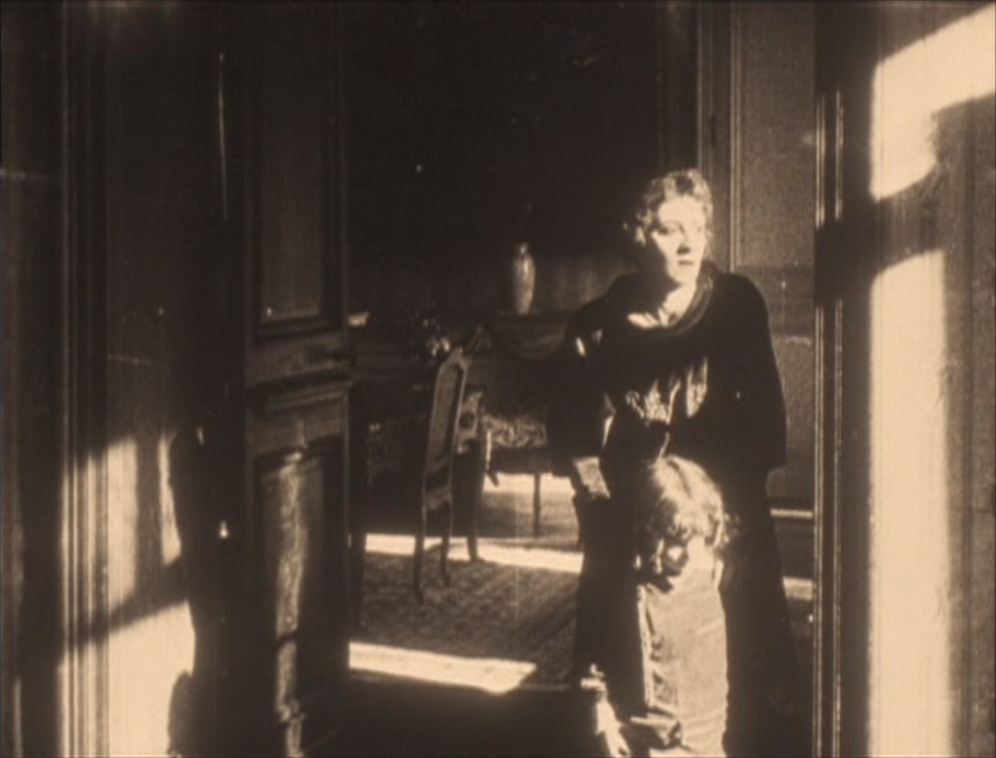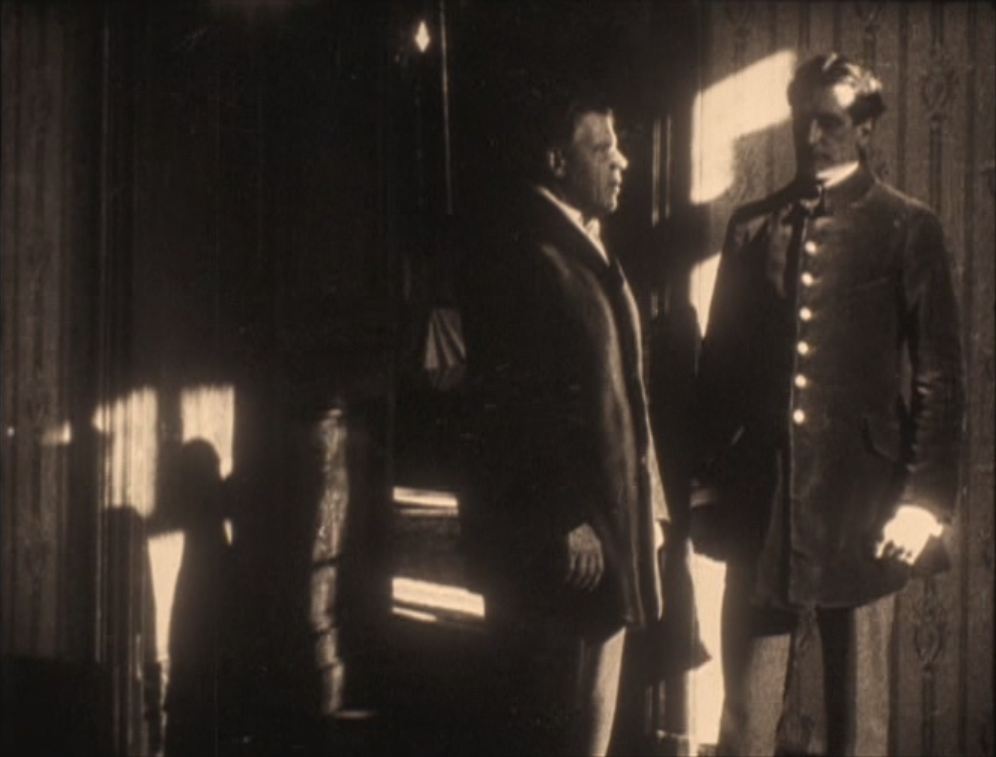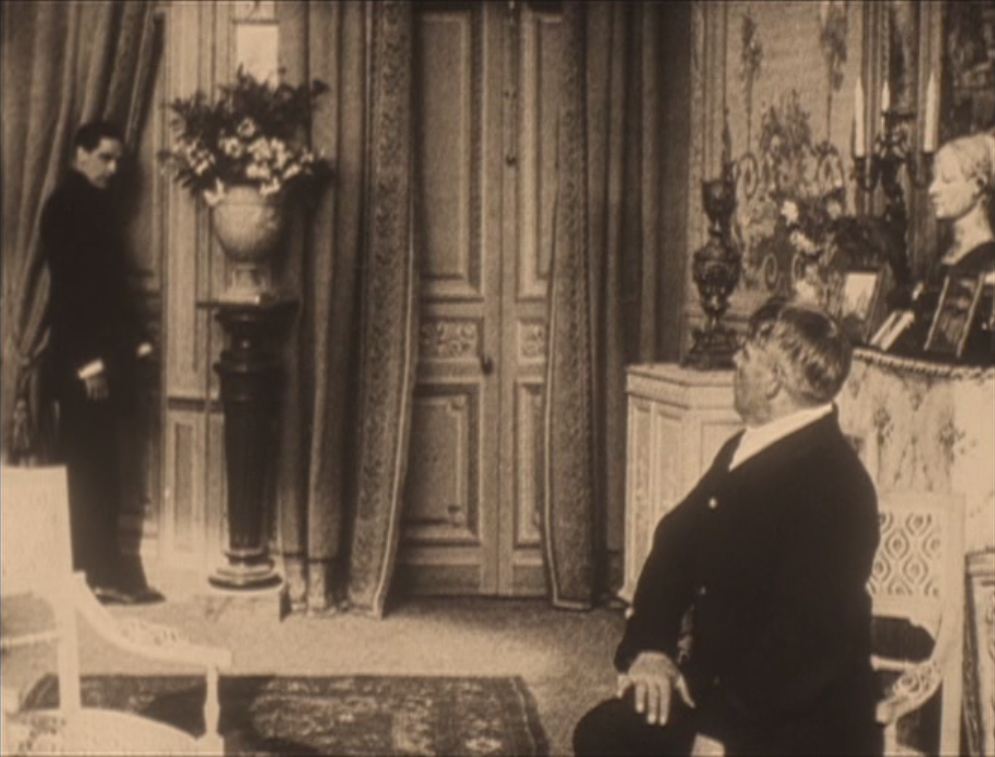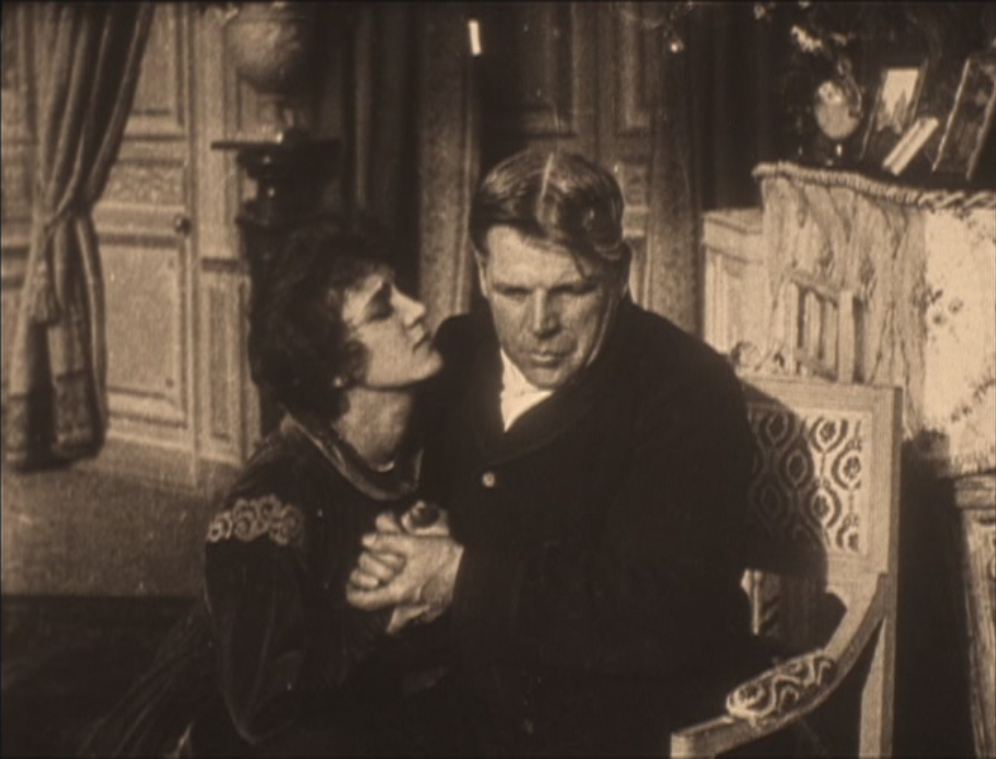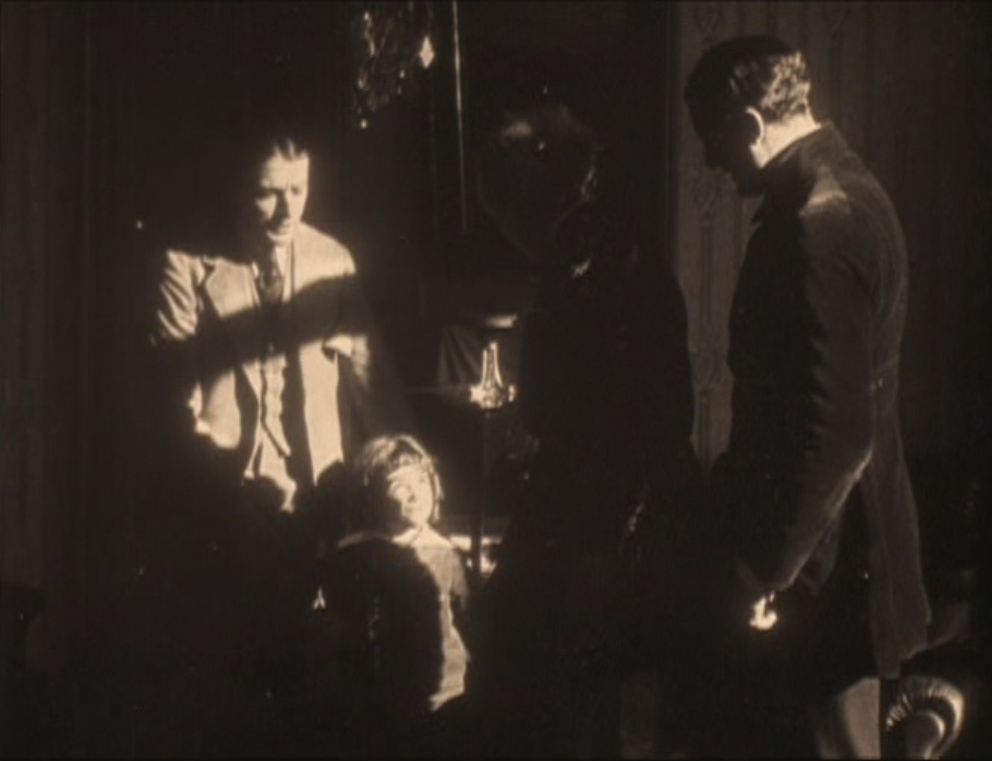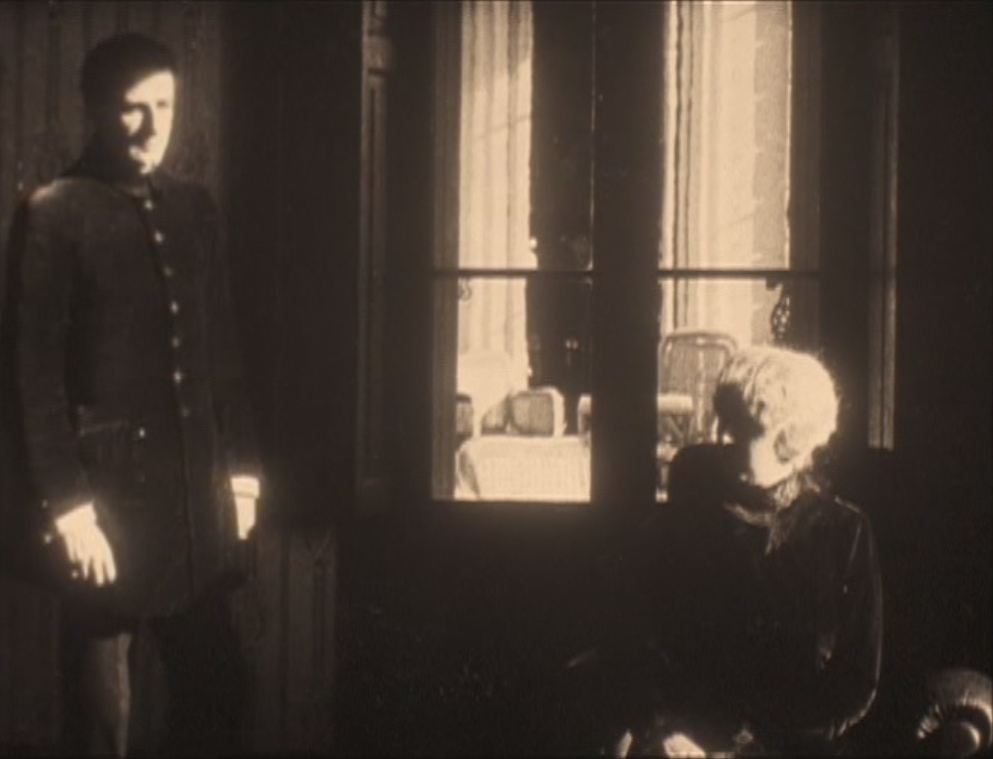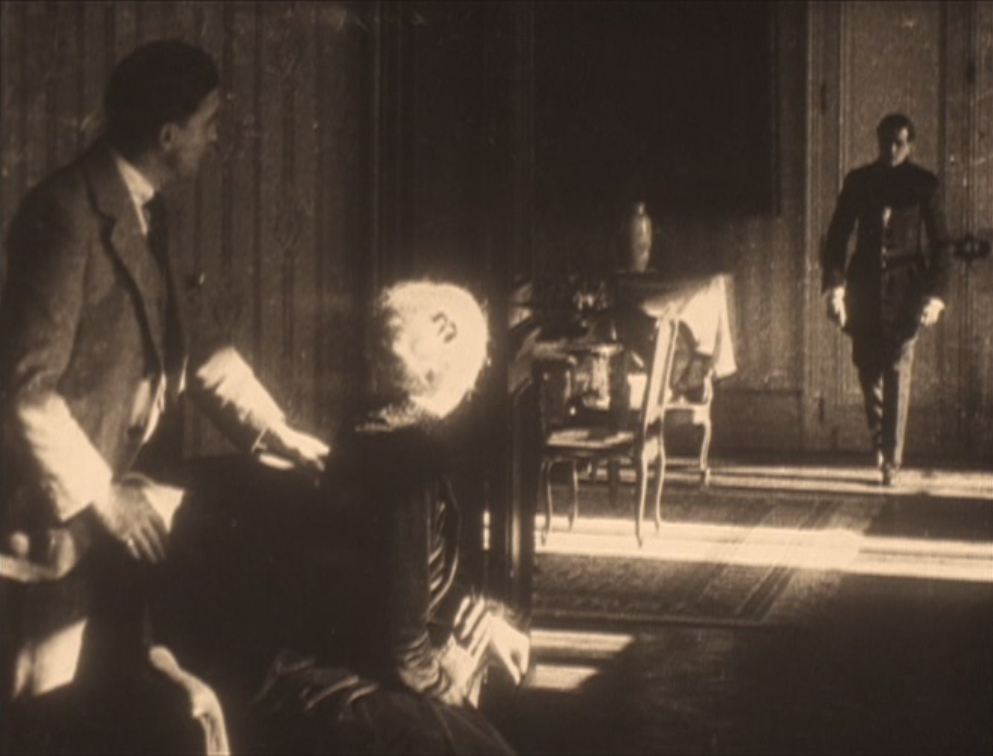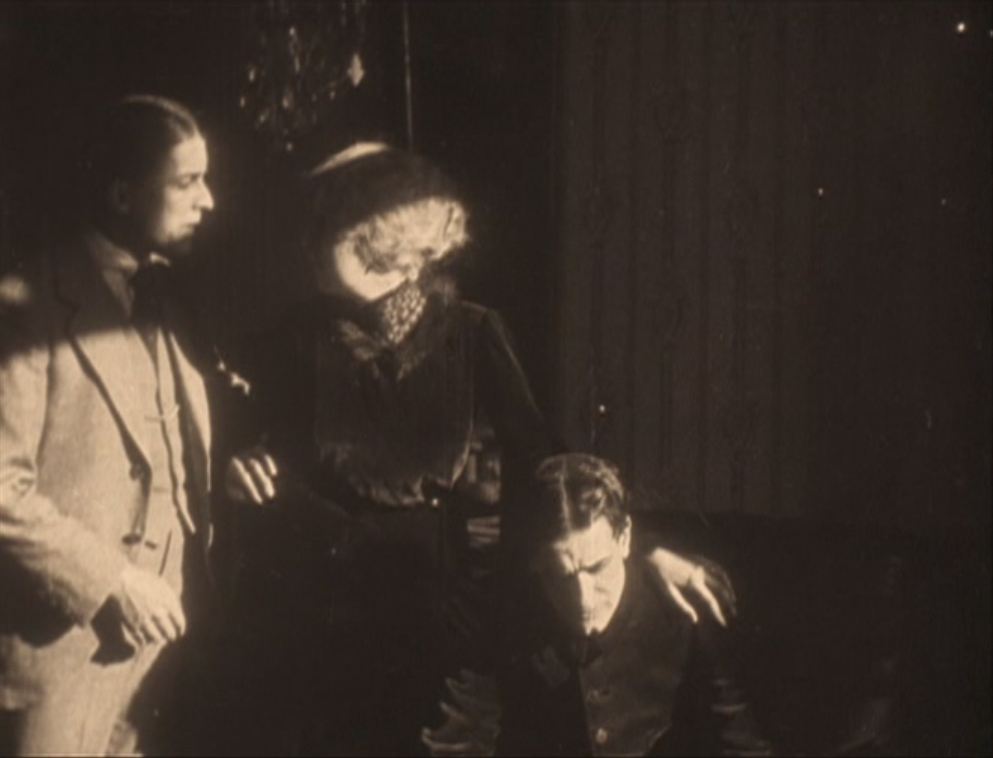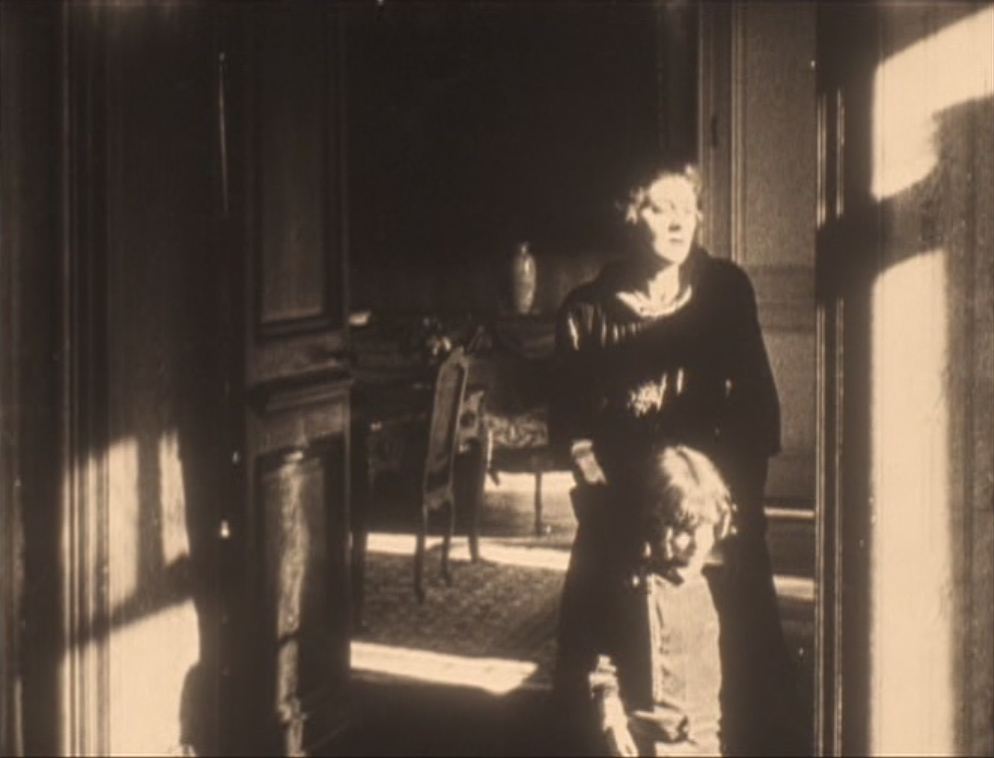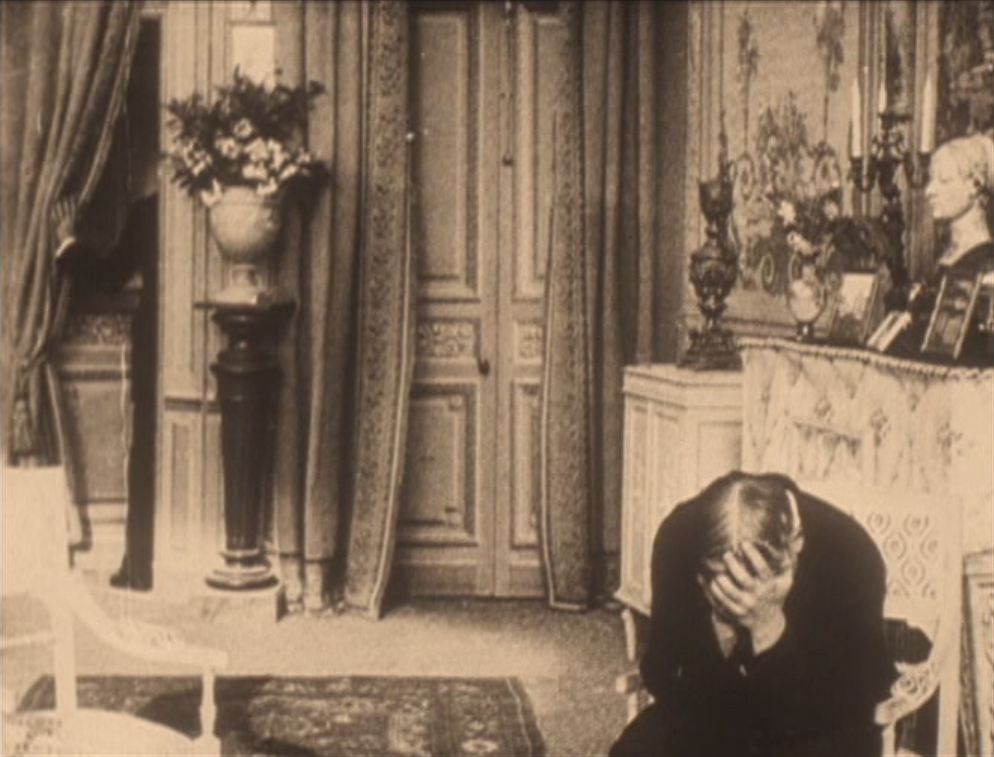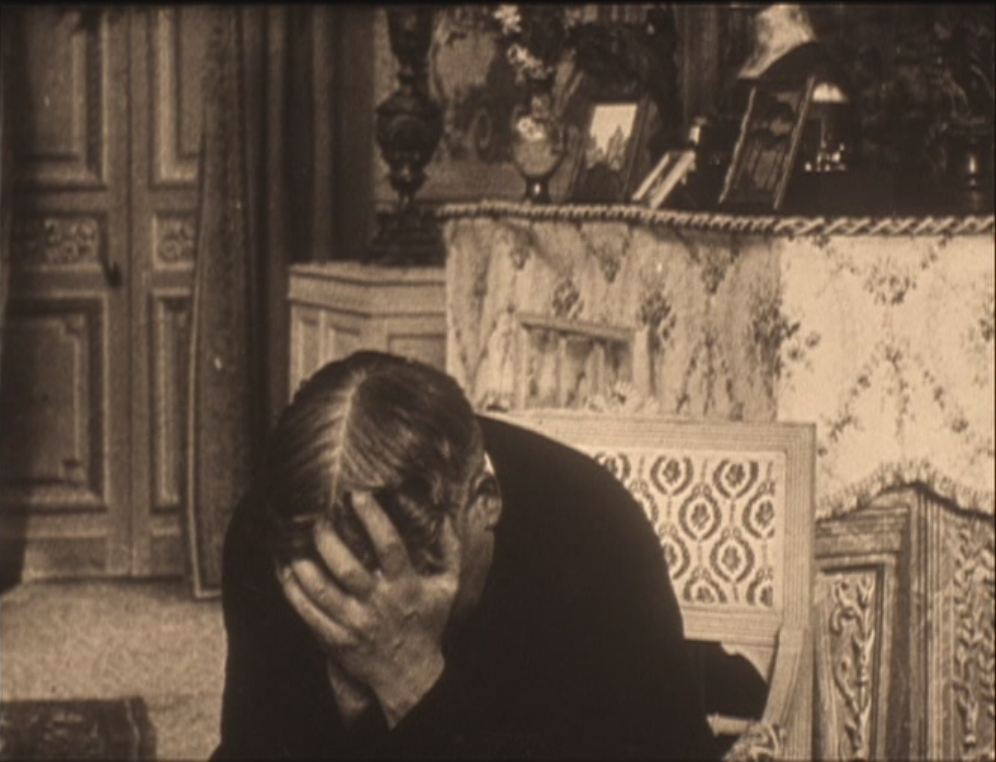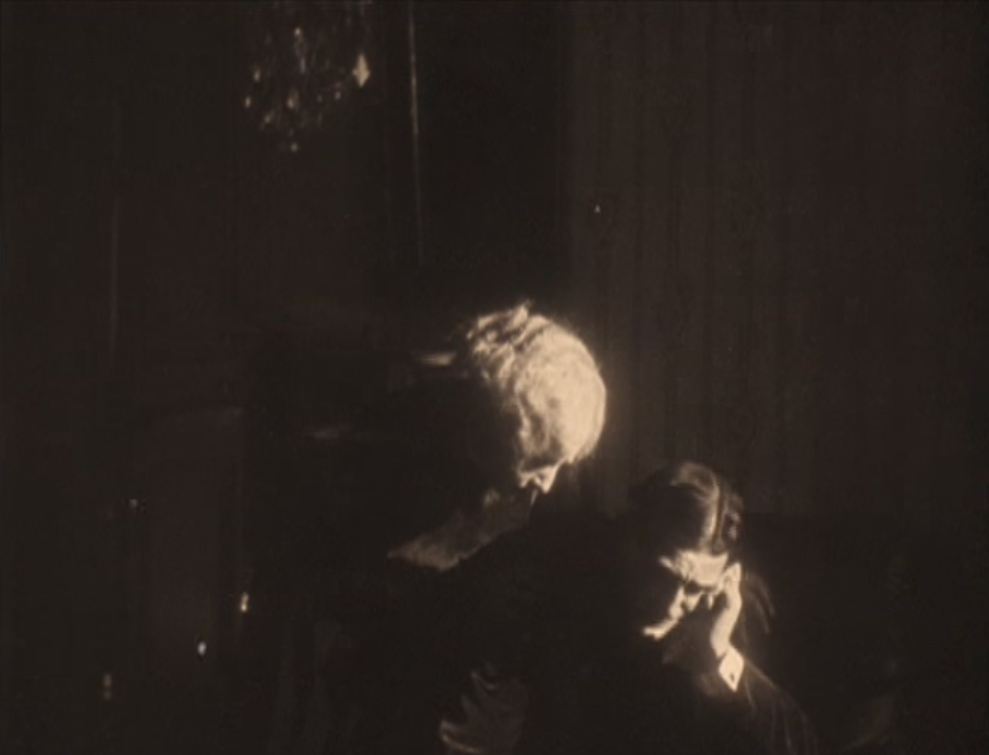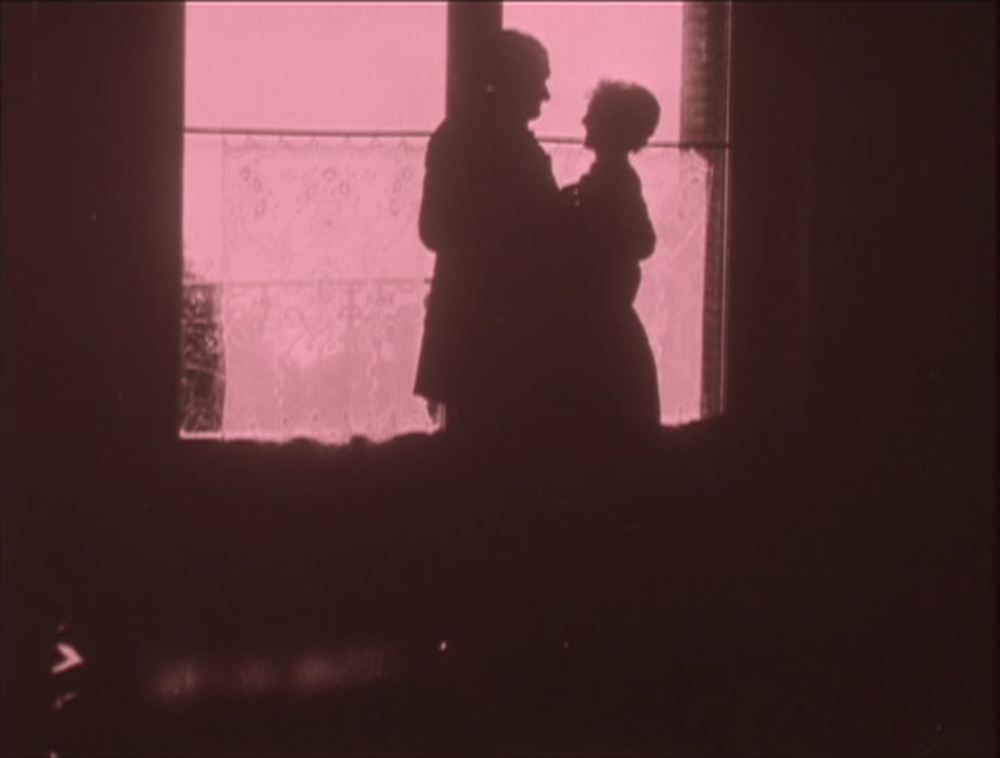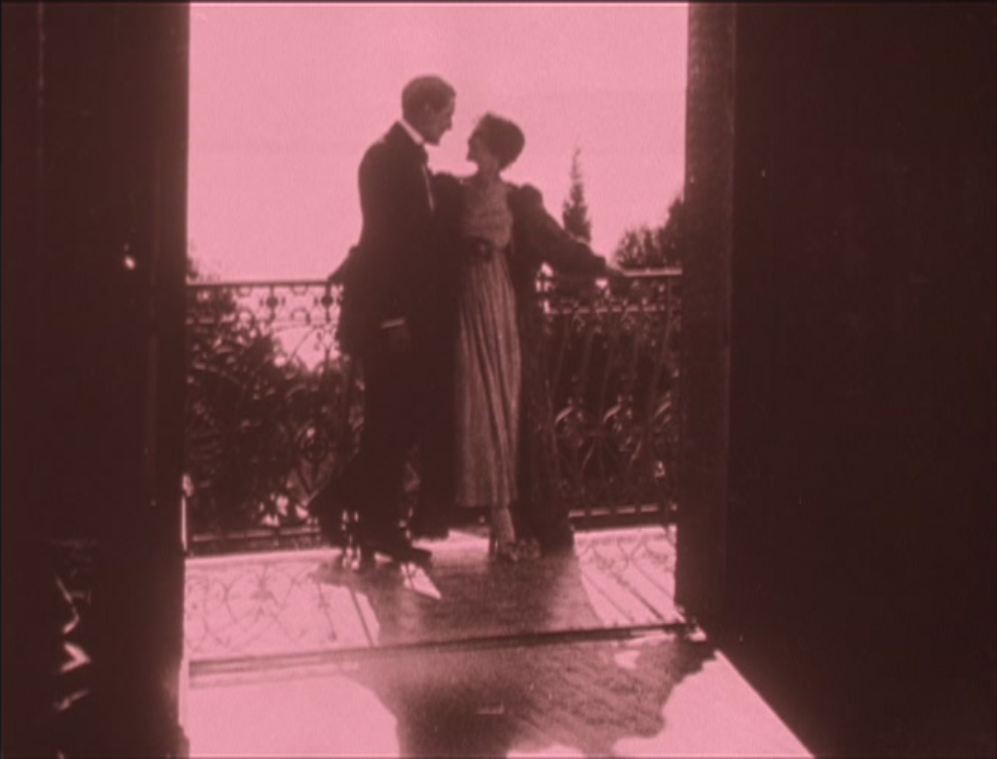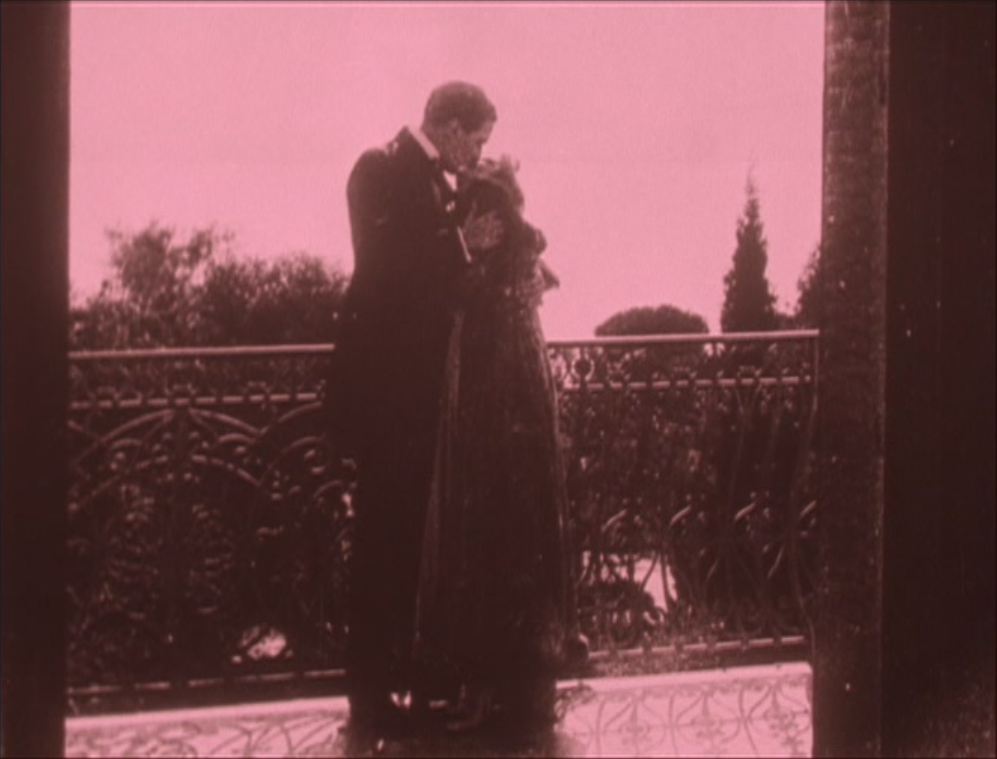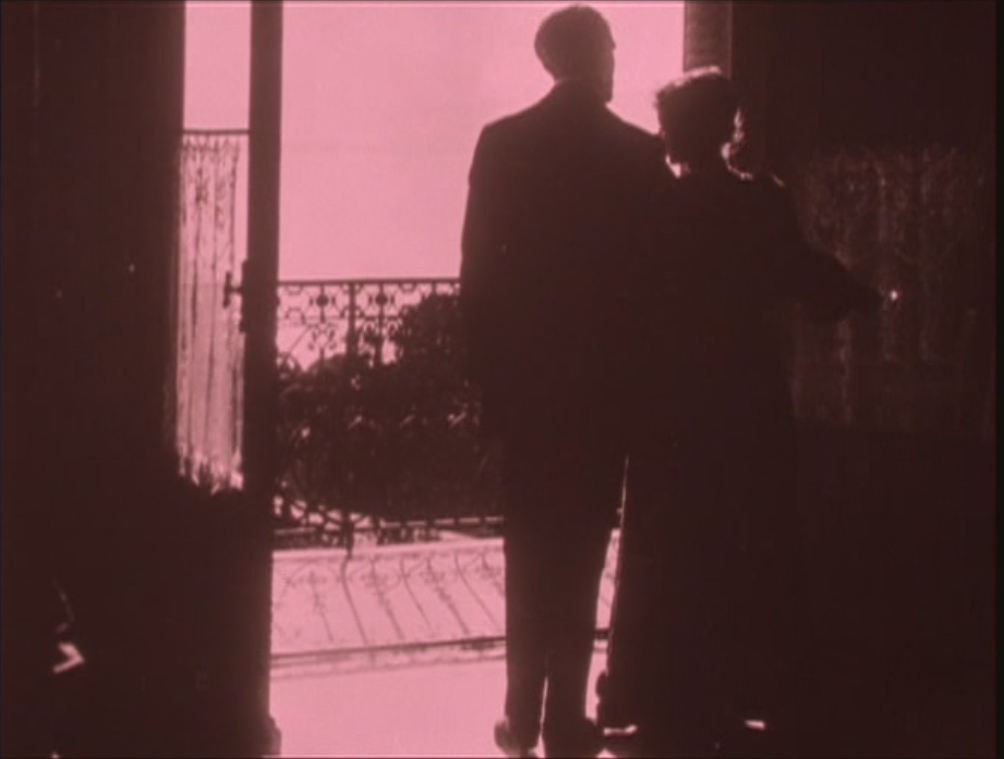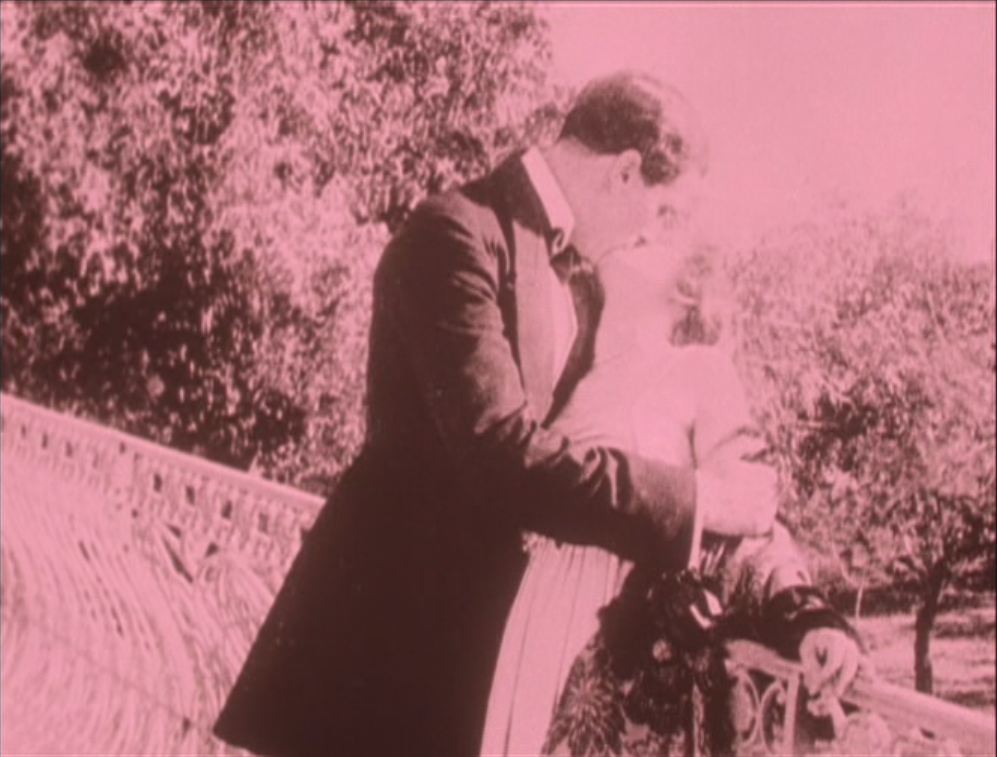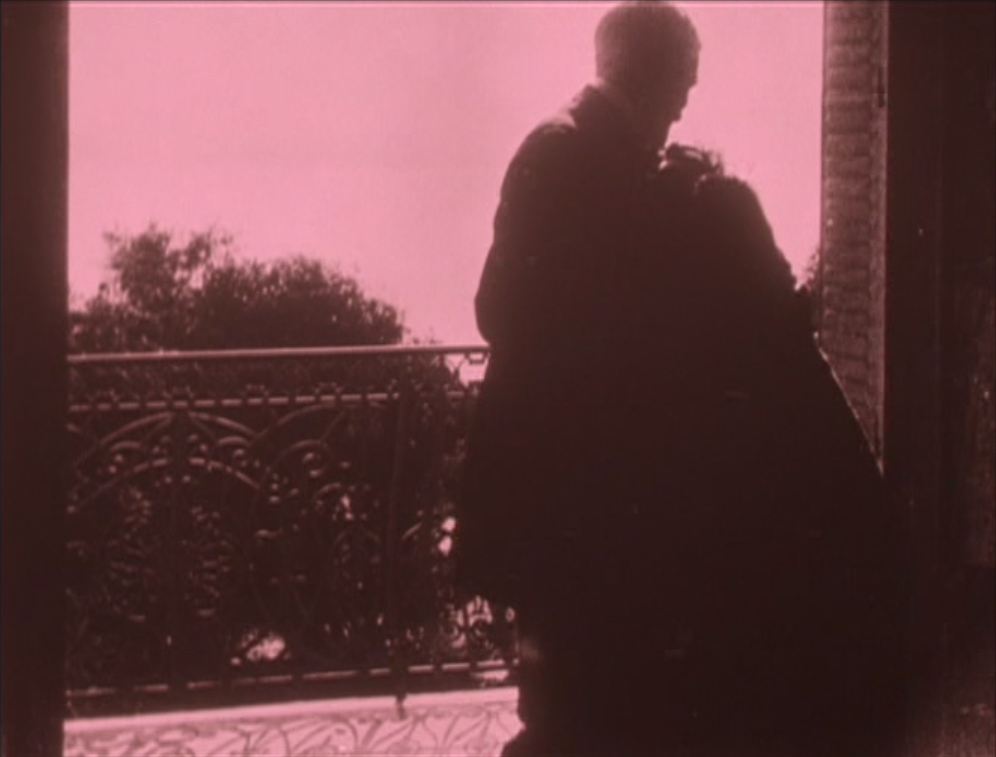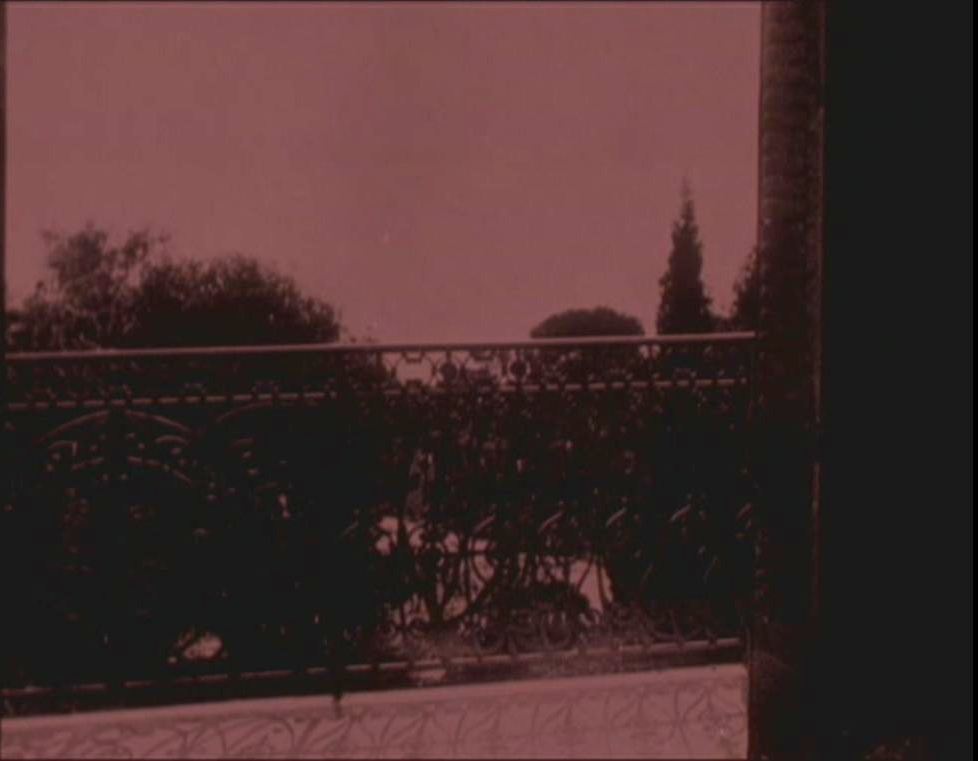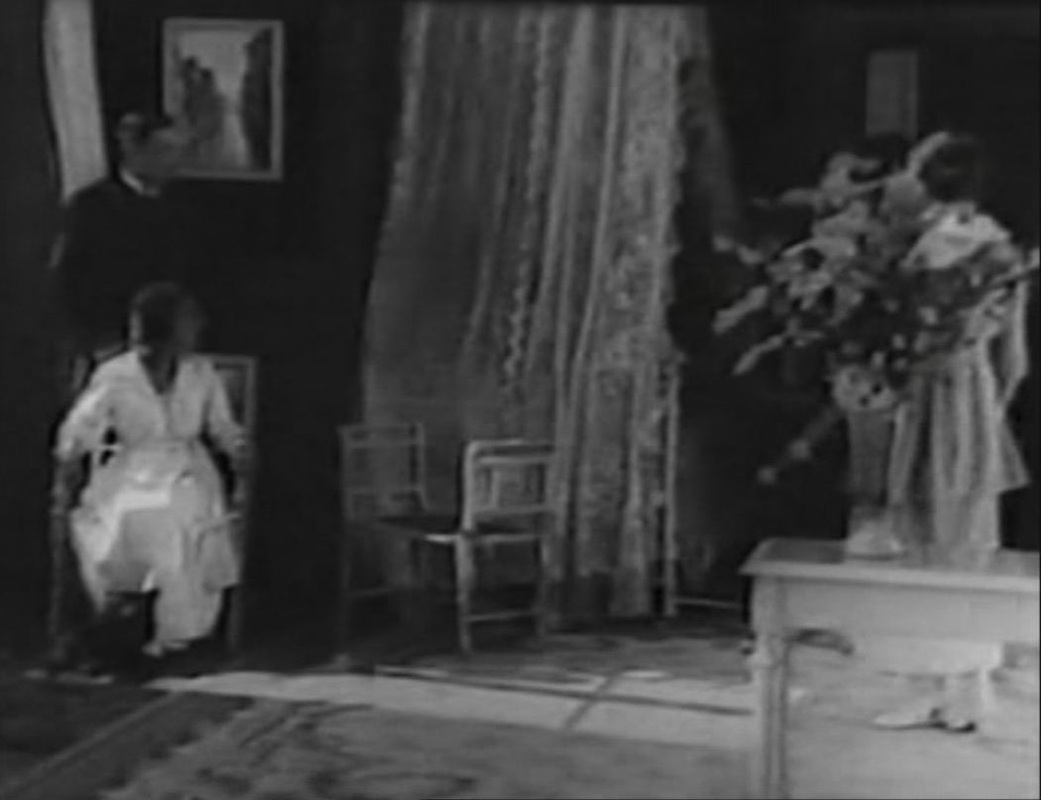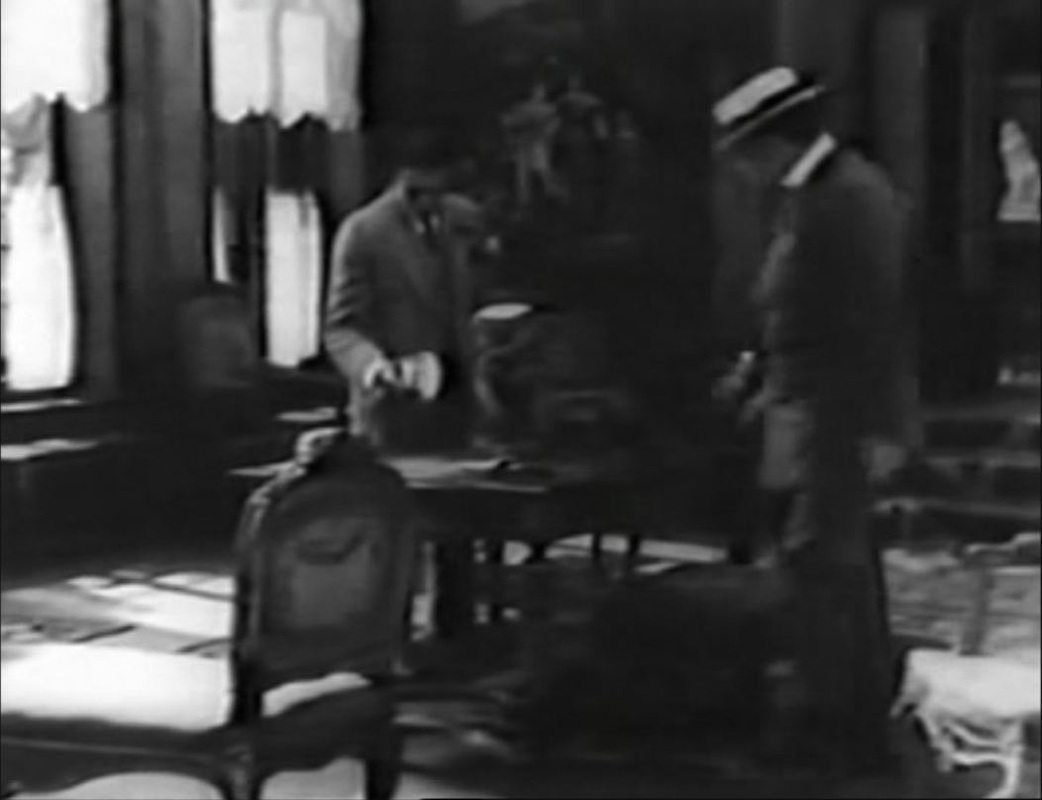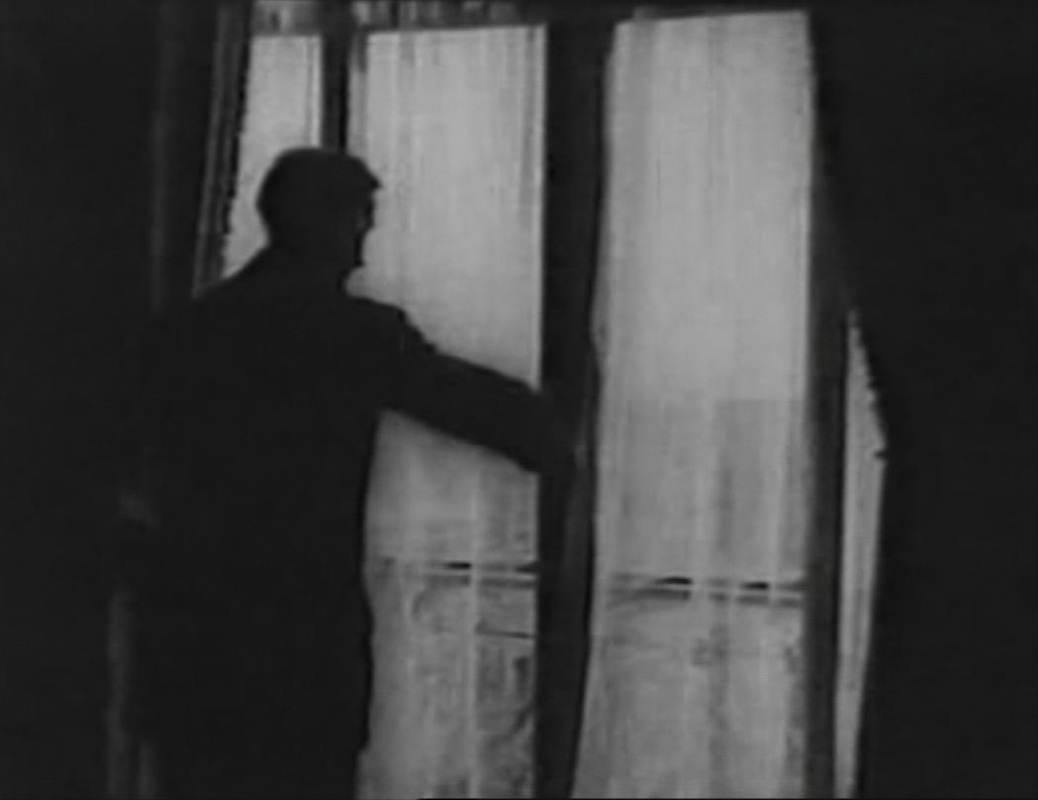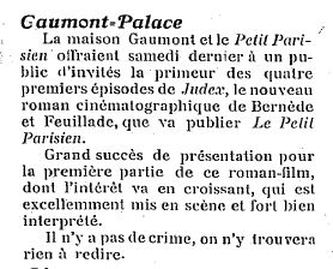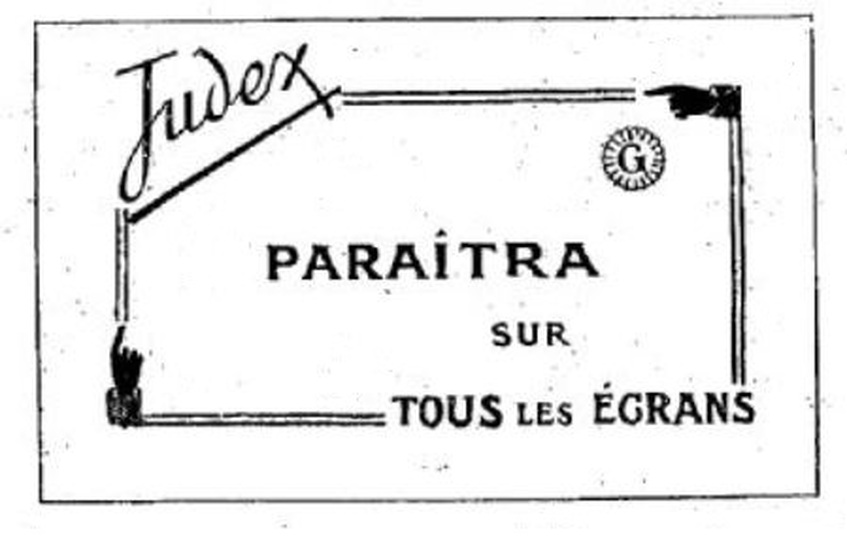Inside-Outside: space and light in Judex
|
(For this piece I am using the 2004 Flicker Alley editiion of Judex, heavily tinted and with English-only intertitles. I don't know if these intertitles are the translation of the original French or whether they are a reconstruction on the basis of Arthur Bernède's novels that accompanied the serial. Francis Lacassin (1964, p.79) affirms that Bernède produced his version in parallel rather than in collaboration with Feuillade, so it is possible that not all details provided in it correspond to what we see in the films. Some do, such as the address of a guesthouse in Neuilly, or the arrival of a train at Saint Raphael station. Some details given in the films do not appear in the novel, such as the address of the villain's bank, given as 'Presbourg Street' in the film and as boulevard Haussmann in the novel, or Amaury de la Rochefontaine's address, 'Astrog Street' in the film (I suppose this means 'rue d'Astorg') and as rue de Prony in the novel. I shall rely principally on the evidence of the films, but since the novel was serialised in tandem with their exhibition, it has to be considered as part of the overall Judex-text c.1917.)
|
|
1/ composite spaces
My starting point was a simple question: where does Cocantin live? (Cocantin is the comic detective who provides relief and helps the plot along.)
When first encountered Cocantin has just taken over the Agence Céléritas from his deceased uncle, and is visited at the agency offices by the villainous banker Favreux. The address given in an intertitle is 135 rue Milton. The number is a fiction, since the rue Milton only goes up to 35. The rue Milton is in the 9e arrondissement, close to where Feuillade had earlier shot sequences of Juve contre Fantômas (see here) and L'Homme des poisons, episode 9 of Les Vampires. However, none of the exteriors we later see that are related to Cocantin's address is of or near the rue Milton.
When first encountered Cocantin has just taken over the Agence Céléritas from his deceased uncle, and is visited at the agency offices by the villainous banker Favreux. The address given in an intertitle is 135 rue Milton. The number is a fiction, since the rue Milton only goes up to 35. The rue Milton is in the 9e arrondissement, close to where Feuillade had earlier shot sequences of Juve contre Fantômas (see here) and L'Homme des poisons, episode 9 of Les Vampires. However, none of the exteriors we later see that are related to Cocantin's address is of or near the rue Milton.
Of the Agence Céléritas interior we see the entrance hall, office, salon and bedroom, and we also go on to the balcony:
This last part of the space is clearly not, as the others are, shot in a studio. The different views from the balcony allow us to determine exactly where this is. Looking left we see the slopes of Montmartre, with the cemetery at the foot and the newly completed Sacré Coeur at the top:
Looking right we see in the distance the dome of the church of Saint Augustin, on the boulevard Haussmann, and, much nearer, a dome on the next building along:
The nearby dome is that of the Gaumont Palace, rue Caulaincourt, making this a balcony on the apartment building further up that street, right beneath the stamp on this postcard:
This balcony was used by other Gaumont filmmakers, such as Jean Durand. Here is Onésime climbing down from it, in Onésime et son collègue (1913):
In Judex, however, it is not a matter of simply climbing down onto the roof of the adjoining cinema. The plan is, rather, that the kidnapped petit Jean will jump from the balcony into a blanket held by Judex's associates:
Naturally distracted by the danger in this daring stunt, we may fail to notice an anomaly in the staging of it. As le petit Jean jumps we see clearly the dome of the Gaumont Palace behind him, but as he falls we can see that to the left of the building there is just an empty space and then a two-storey house. The Gaumont Palace has gone; we aren't in the rue Caulaincourt anymore.
This apartment building is of a fairly common type in Paris, but it has a distinguishing feature in the name of one of the businesses at ground level. Above the lightest of those shopfronts can be read - just - the words 'Consultation de nourissons':
On checking a list of infant welfare centres for the period I found one at 9 rue Edouard Pailleron, 19e:
The clinic is now a vaccination centre, but the building is the same.
Le petit Jean jumped, then, in one part of Paris and landed in quite another. It must have been unfeasible to have him land in the rue Caulaincourt, too busy a street for a shoot involving the long shot of the dummy falling (assuming it was a dummy) and the two shots at ground level. The rue Edouard Pailleron was and is still a much less frequented street, and was a short distance from the Gaumont base at the Cité Elgé, just across the park. Number 9 is on the corner with the avenue Secrétan, just above the 'e' of 'rue' in rue Edouard Pailleron:
Le petit Jean jumped, then, in one part of Paris and landed in quite another. It must have been unfeasible to have him land in the rue Caulaincourt, too busy a street for a shoot involving the long shot of the dummy falling (assuming it was a dummy) and the two shots at ground level. The rue Edouard Pailleron was and is still a much less frequented street, and was a short distance from the Gaumont base at the Cité Elgé, just across the park. Number 9 is on the corner with the avenue Secrétan, just above the 'e' of 'rue' in rue Edouard Pailleron:
By episode 6 of Judex we have, then, three different addresses for the Agence Céléritas in three different parts of Paris: rue Milton (9e), rue Caulaincourt (18e) and rue Edouard Pailleron (19e). In the next episode Cocantin concocts a scheme to reunite le petit Jean with le môme Réglisse, who is staying with Cocantin. This involves deceiving the watching villains into believing that le môme Réglisse is hidden in a basket being transported from Cocantin's building in a taxi:
You may have observed that this doorway does not seem to fit the building on rue Edouard Pailleron; you may well have remembered the doorway from other Gaumont films, for example Léonce Perret's L'Enfant de Paris (1913), discussed here:
This is 7 rue Jean Menans, a street off the rue Edouard Pailleron, and just opposite the park. The sequence in Judex has the villains watching from a car parked at the junction with the rue Manin, and continues with a high-speed chase in which the basket is seized by the villains:
In the novel of this episode the chase begins in the rue Milton, quickly proceeding up to the boulevard Barbès then the boulevard Ornano before reaching the boulevard Ney, by the old fortifications, which is where the basket is snatched. Being topographically more economical, the film has the snatch take place straightway in the rue Jean Menans:
With the building on the rue Jean Menans, that makes four different Paris locations for the Agence Céléritas, five if we add the studio where the interiors were shot, in the Cité Elgé.
For one place to have so many components is unusual in Feuillade (the closest instances I know are the three-flight stairway in Les Vampires, here, and in that same series Philippe Guérande's apartment building, to be discussed soon on this site).
Bilateral combinations of studio-shot interior and street-shot exterior are more common. In Judex there was already an example in the representation of Cocantin's living quarters, when he carries le petit Jean across a studio-shot room to the real window of the apartment on the rue Caulaincourt:
Bilateral combinations of studio-shot interior and street-shot exterior are more common. In Judex there was already an example in the representation of Cocantin's living quarters, when he carries le petit Jean across a studio-shot room to the real window of the apartment on the rue Caulaincourt:
These two spaces are linked by the continuity of direction, actors and action, and a cut on the action. Typically the continuity of actor and action suffices, with the two parts linked by the presence of the same actor in each, performing a single action such as exiting or entering:
The four examples above are all from the opening Prologue of Judex. Each purports to represent a single place - a Paris apartment building, a provincial mairie, a Paris bank, a provincial château - but since each interior is filmed at the Cité Elgé, only the exteriors might really be of such a place. (I have yet to identify any of these four exteriors, hence my generalising coyness.)
Addition - August 2014
I have since identified two of the locations above. The Paris apartment building is none other than the actress Musidora's own home, rue du Général Langlois, 16e - a location used earlier in Les Vampires and later in Barrabas. The provincial château is at Herqueville (Eure):
I have since identified two of the locations above. The Paris apartment building is none other than the actress Musidora's own home, rue du Général Langlois, 16e - a location used earlier in Les Vampires and later in Barrabas. The provincial château is at Herqueville (Eure):
(The provincial mairie is probably that of Herqueville, demolished in the 1920s, leaving no other visual trace.)
2/ liminal light
Collages of studio and real world recur throughout Judex, but in the following episode something happens that modifies that relation between inside and out. Here is a movement from one to the other, as Jacqueline says goodbye to her son, le petit Jean, who is leaving the provincial château with the couple who will care for him:
The continuation of the first shot involves Jacqueline running to the back of the space and opening the windows there; in the following shot she is at the window looking down on the departing group. There is an ellipsis of a few seconds, but the impression of continuity is very strong. In the four earlier examples above, there was no such matching of action across the cut, and we may consider that the difference here relates to the intensity of emotion in the moment. Closer shots of the two parties intensify it further, but what interests me more is the sight we now have of the interior from which Jacqueline is looking out:
This is not the window at the back of the studio interior, but a real window in the real house. There is no clear difference in the features of the space, since we are too close to see anything but the window frame and a part of the balcony, whereas in the studio interior we were too far to see those details; the real difference is in the light, in the remarkable chiaroscuro achieved with what light was available:
The cinematographer on Judex was Léon Clausse, but Feuillade had done this before with Georges Guérin. In the first episode of Fantômas, after Gurn has been arrested outside Lady Beltham's villa, we have a view of Lady Beltham looking out onto the scene from inside, and for once she is not in a studio interior but at the real window of the real villa that we were shown from the outside:
A similar quality of light can be found in two other liminal moments in Fantômas, featuring not windows but doorways:
It is unsurprising that directing the camera out from inside should produce such effects, but I am surprised that these effects are not sought more often. In Le Mort qui tue (Fantômas 3), the entrance to a restaurant in a park brings light in from outside, and once inside we have a rare occasion in Feuillade of a real interior, lit only by the light coming through windows:
But such luminous liminality is rare in Fantômas, and entirely absent from Les Vampires. Barry Salt observes the mode as a mood effect in certain realist melodramas made by Feuillade just before Fantômas, noting the 'series of lonely low key rooms similarly lit by window light in the Feuillade series "La Vie telle qu'elle est", such as that in La Tare, with the heroine ending in the depths of despair' (Film Style and Technology, p.68):
Richard Abel also comments on the light at the end of La Tare: 'In one final variation on the "staging in depth" paradigm, in a dark, bare attic room, Anna goes to a right background window (looking out on a real cityscape) and seems about to jump off its ledge to her death. But she pauses, backs away, and sits in misery in the left background, barely illuminated by single-source lighting from the right' (The Ciné Goes To Town, p.333):
Such single-source lighting is used to the same effect in the moment of Fantômas where Lady Beltham observes the arrest of Gurn. She had slowly opened the shutters, registered the event then slowly closed them, with the shot holding in almost complete darkness for a few seconds before a title that reads 'Six months later'. This is followed by a view of Lady Beltham in the same room and under the same mood effect, though this time it is the studio version of the room:
At this point I wish I knew better by what means exactly the lighting was directed in the studio, since in this piece overall I am crudely opposing how window-lit real rooms look and how otherwise-lit studio-sets look, all the while knowing that there is a substantial 'grey' area between the two. I suppose that the light in the last image above must come either directly from an arclight or via the glass walls of the studio, manipulated to achieve the required distribution of light and shade.
Feuillade returns to and develops the window-lit mode in Judex. After the tearful window moment already described, another figure soon appears at a window, looking out:
This is the first sight we have of the most spectacular place in Judex, the 'Château rouge' where the hero keeps the villain a prisoner:
There is no difficulty identifying this location, the ruins of Richard the Lionheart's twelfth-century Château Gaillard, overlooking the Seine at Les Andelys in Normandy:
Feuillade makes good use of the locale, with postcard-like views of the surrounding landscape:
Judex's sanctum within the castle ruins is a studio construction:
But some inner parts of the real castle are shown, rendered with a familiar dependence on minimal light:
The largely roofless ruins of the Château Gaillard are never fully 'interior', and their use in Judex is a peculiar case of contiguity between outside and in. Closer in type to the window scene near the beginning of Judex is the use of another substantial place later in the serial, when the action shifts to the Côte d'Azur. Here again the principal location is easily identified, Léon Gaumont's own villa at Sainte-Maxime:
Feuillade makes full use of the general area, filming at various nearby sites including the jetty at Sainte-Maxime, and at Beauvallon the fountain and the Temple of Love:
In the château's grounds and gardens the children play and the adults converse:
Of the building itself Feuillade uses the long broad terrace in front of the entrance, and the first floor balcony above:
On several occasions Feuillade shoots from inside the real château looking out, using only the light from outside. Here is a movement from inside onto the terrace, and a later movement back in from outside:
And here is a movement inside from out, on the balcony above:
A more involved sequence follows, a tour-de-force of chiaroscuro and contre-jour effects, beginning with Judex emerging from his room onto the balcony to listen at the shutters of Jacqueline's room, then leaving the house via the doors onto the terrace below:
Jacqueline is first in her room at the end of the balcony, then comes out onto it before going into the room that Judex has just left:
The sequence continues with the Comtesse taking Jacqueline into her own room, to explain the mystery uncovered by Jacqueline - that Vallières is Judex. This narrative climax is accompanied by a striking pictorial equivalent:
The obscurity in the image here is no longer motivated by a movement from outside to in; this is simply the look of all interiors in this sun-bathed château:
Rather, this is the look of almost all of the château's interiors. In this long (almost six-minute) section centred on the forgiving of Favreux, one room shown is not window-lit but is instead a studio construction, lit conventionally by diffused sunlight from above:
The uniformity imposed by the tint and the compositional dominance of the men's dark coats cannot disguise that this one space is visually anomalous when compared to all the chiaroscuro around it. Those rooms that do give onto the sunlit terrace, source of all light, are shown from many different positions, each one a different composition of that light:
As enamoured as I am of the liminal lighting mode of these and earlier shots in the château, I wouldn't want to say that without it the mise-en-scène is less effective. Of these two views of the repentant Favreux, one in the studio and the other in the château, I cannot say that the second is more affecting than the first:
If anything, the close up under the studio light wins the argument, creating through mise-en-scène a dramatic contrast between the dark plain clothing of the suffering man and the busy mass of decorative patterns and objects around him:
A close up lit by window light would have achieved a quite different effect, something more like this:
The serial closes with an epilogue in chiaroscuro mode, crossing from inside to out, and then back again. Judex and Jacqueline are on their honeymoon, at a hotel or villa somewhere in Italy. They move out onto the balcony, where they kiss and talk for a while, then move back into the room, in from the light:
epilogue
Probably Feuillade continued with this mode in later work, especially with the general shift of his activity to the Gaumont Studios in Nice, but the only film after Judex that I have been able to see is Tih Minh (1919). This does feature a number of sun-drenched villas of a kind with the château in Judex, but seems to use lighting through windows only rarely. Unfortunately, the copy of Tih Minh I have is so rough that it is very difficult to comment on the quality of the light coming in from outside, as you can see from these poor images:
A proper examination of the light in Tih Minh will have to wait till I can draw on better resources.
|
a note on the date of Judex
Though always dated 1917, this notice from the cinema column of theatre journal La Rampe (dated 21 December 1916) shows that the first four episodes were screened at the Gaumont Palace for an invited audience on December 16 1916, so these episodes should be dated 1916, and the whole as 1916-1917. |
references
- Richard Abel, The Ciné Goes to Town (Berkeley: University of California Press, 1994)
- Francis Lacassin, Louis Feuillade (Paris: Seghers, 1964)
- Barry Salt, Film Style and Technology, 2nd edition (London: Starword 1992)
The postcards used as illustrations were found on collector sites such as CPArama and delcampe.net
Appendix: update
Near the beginning of this piece I mentioned four locations from the Prologue of Judex that I couldn't identify. I have since found two of them. The Paris apartment building Diana Monti leaves is at 3 rue du Général Langlois, 16e. The château in the country is at Herqueville, in the Eure. The latter location is discussed in this post: Feuillade's lonely villas.
Near the beginning of this piece I mentioned four locations from the Prologue of Judex that I couldn't identify. I have since found two of them. The Paris apartment building Diana Monti leaves is at 3 rue du Général Langlois, 16e. The château in the country is at Herqueville, in the Eure. The latter location is discussed in this post: Feuillade's lonely villas.
Films by Feuillade are also discussed in the following posts:
- Fantômas Over Paris: Fantômas: à l'ombre de la guillotine
- Fantômas Over Paris: Juve contre Fantômas
- Fantômas Over Paris: Le Mort qui tue
- Fantômas Over Paris: Fantômas contre Fantômas
- Fantômas Over Belgium: Le Faux Magistrat
- Three filmmakers in Romainville (Une dame vraiment bien)
- A staircase in Belleville (Les Vampires)
- Irma Vep posts a letter (Les Vampires)

